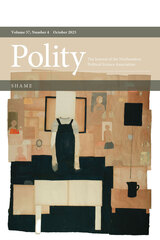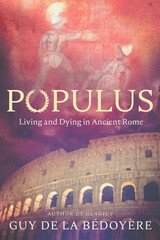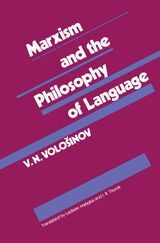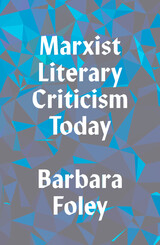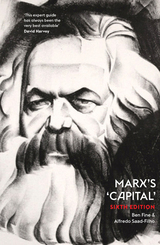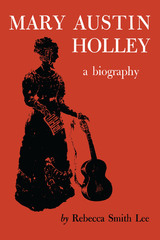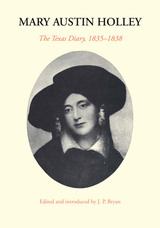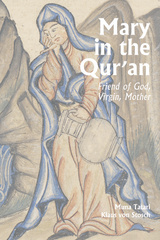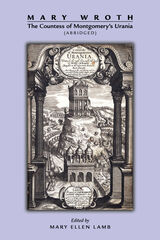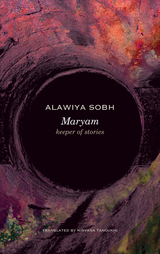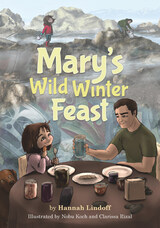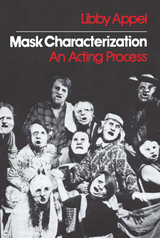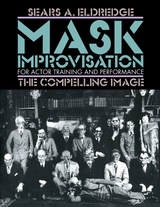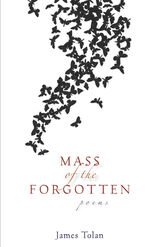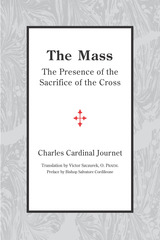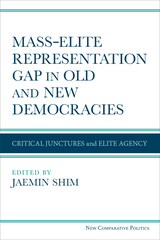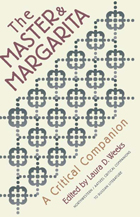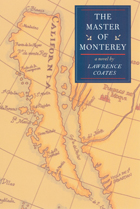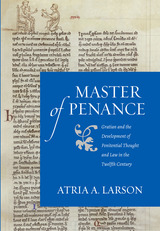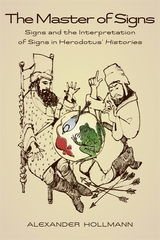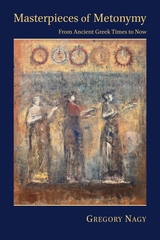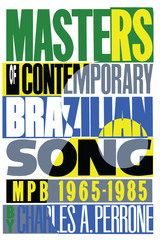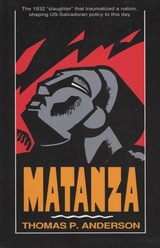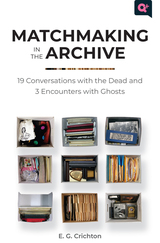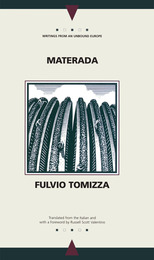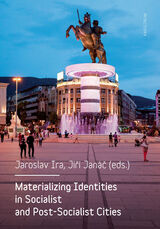Marxism and the Philosophy of Language
V. N. Vološinov
Harvard University Press, 1986 V. N. Vološinov’s important work, first published in Russian in 1929, had to wait a generation for recognition. This first paperback edition of the English translation will be capital for literary theorists, philosophers, linguists, psychologists, and many others.
Vološinov is out to undo the old disciplinary boundaries between linguistics, rhetoric, and poetics in order to construct a new kind of field: semiotics or textual theory. Ladislav Matejka and I. R. Titunik have provided a new preface to discuss Vološinov in relation to the great resurgence of interest in all the writing of the circle of Mikhail Bakhtin.
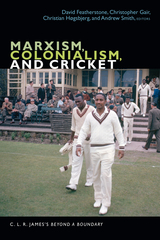 Marxism, Colonialism, and Cricket: C. L. R. James's Beyond a Boundary
David Featherstone, Christopher Gair, Christian Høgsbjerg and Andrew Smith, editors
Duke University Press, 2018 Widely regarded as one of the most important and influential sports books of all time, C. L. R. James's Beyond a Boundary is—among other things—a pioneering study of popular culture, an analysis of resistance to empire and racism, and a personal reflection on the history of colonialism and its effects in the Caribbean. More than fifty years after the publication of James's classic text, the contributors to Marxism, Colonialism, and Cricket investigate Beyond a Boundary's production and reception and its implication for debates about sports, gender, aesthetics, race, popular culture, politics, imperialism, and English and Caribbean identity. Including a previously unseen first draft of Beyond a Boundary's conclusion alongside contributions from James's key collaborator Selma James and from Michael Brearley, former captain of the English Test cricket team, Marxism, Colonialism, and Cricket provides a thorough and nuanced examination of James's groundbreaking work and its lasting impact.
Contributors. Anima Adjepong, David Austin, Hilary McD. Beckles, Michael Brearley, Selwyn R. Cudjoe, David Featherstone, Christopher Gair, Paget Henry, Christian Høgsbjerg, C. L. R. James, Selma James, Roy McCree, Minkah Makalani, Clem Seecharan, Andrew Smith, Neil Washbourne, Claire Westall
A Marxist History of the World: From Neanderthals to Neoliberals
Neil Faulkner
Pluto Press, 2013 This magisterial analysis of human history - from 'Lucy', the first hominid, to the current Great Recession - combines the insights of earlier generations of Marxist historians with radical new ideas about the historical process.
Reading history against the grain, Neil Faulkner reveals that what happened in the past was not predetermined. Choices were frequent and numerous. Different outcomes - liberation or barbarism - were often possible. Rejecting the top-down approach of conventional history, Faulkner contends that it is the mass action of ordinary people that drives great events.
At the beginning of the 21st century - with economic disaster, war, climate catastrophe and deep class divisions - humans face perhaps the greatest crisis in the long history of our species. The lesson of A Marxist History of the World is that, if we created our past, we can also create a better future.
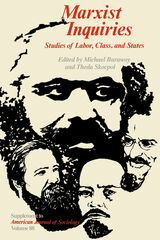 Marxist Inquiries: Studies of Labor, Class, and States
Edited by Michael Burawoy and Theda Skocpol
University of Chicago Press, 1983 This collection exemplifies the resurgence of Marxist ideas in contemporary social research. Its purpose is neither to cover all the areas of Marxist research nor to survey alternative Marxist perspectives or schools. Rather the volume assembles nine examples of the most interesting work being done today by younger sociologists who are seriously pursuing the rich and provocative arguments to be found in the ongoing Marxist tradition. All contributions build upon or react to Marxist theoretical perspectives. They employ such diverse research techniques as participant observation, statistical analysis, interviewing, and the examination of archives of public documents. Among the topics covered:
– the economic bases of state policies and their determination by social and political struggles;
– the politcal reshaping of international economic order;
– industrial work in relation to other institutions (such as education, patriarchy, and citizenship);
– the transformation of class structures in capitalist and state-socialist societies.
Published as a supplement to American Journal of Sociology, these studies constitute essential reading both for those sociologists who see Marxism as a powerful framework for understanding capitalist societies and for those who may not be committed to working within the Marxist tradition but nevertheless want to see Marxist hypotheses fully researched and debated.
 Marxist Intellectuals and the Working-Class Mentality in Germany, 1887–1912
Stanley Pierson
Harvard University Press, 1993 How does one explain the presence of educated recruits in movements that were overwhelmingly working class in composition? How did intellectuals function within the movements? In the first in-depth exploration of this question, Stanley Pierson examines the rise, development, and ultimate failure of the German Social Democrats, the largest of the European socialist parties, from 1887 to 1912. Prominent figures, such as Karl Kautsky, August Bebel, Rosa Luxemburg, and Eduard Bernstein are discussed, but the book focuses primarily on the younger generation. These forgotten intellectuals—Max Schippel, Paul Kampffmeyer, Conrad Schmidt, Paul Ernst, and others—struggled most directly with the dilemmas arising out of the attempt to translate Marxist doctrines into practical and personal terms.
These young writers, speakers, and politicians set out to supplant old ways of thinking with a Marxist understanding of history and society. Pierson weaves together over thirty intellectual biographies to explore the relationship between ideology and politics in Germany. He examines the conflict within Social Democracy between the “revisionist” intellectuals, who sought to adapt Marxist theory to changing economic and social realities, and those “orthodox” and “radical” intellectuals who attempted to remain faithful to the Marxist vision. By examining the struggles of the socialist intellectuals in Germany, Pierson brings out the special features of German cultural, social, and political life before World War I. His study of this critical time in the development of the German Social Democratic party also illuminates the wider development of Marxism in Europe during the twentieth century.
Marxist Literary Criticism Today
Barbara Foley
Pluto Press, 2019 In the first introduction to Marxist literary criticism in decades, Barbara Foley argues that Marxism continues to offer the best framework for exploring the relationship between literature and society. She lays out in clear terms the principal aspects of Marxist methodology—historical materialism, political economy, and ideology critique—as well as key debates about the nature of literature and the goals of literary criticism and pedagogy. Examining a wide range of texts through the empowering lens of Marxism—from Jane Austen’s Pride and Prejudice to E. L. James’s Fifty Shades of Grey, from Frederick Douglass’s ‘What to the Slave Is the Fourth of July?’ to Annie Proulx’s ‘Brokeback Mountain’—Foley provides a clear and compelling textbook of Marxist literary criticism.
The Marxist Premodern, Volume 34
Bruce Holsinger and Ethan Knapp, eds.
Duke University Press In classic Marxism, the Middle Ages represent something of a paradox: both a prelapsarian pastoral in which peasants are "bound to the soil" with the "guarantees of existence" offered by feudalism, and an expropriative economy that adumbrates the most extreme exploitative tendencies of industrial capitalism. This special issue of the Journal of Medieval and Early Modern Studies is devoted to a general rethinking of the Marxist premodern: its contours, its literary and cultural effects, its theoretical afterlife, and its limitations. Contributors. Andrew Cole, Valerie Forman, Bruce Holsinger, Ethan Knapp, Maura B. Nolan, John Parker, Stephen H. Rigby, D. Vance Smith
 Marxist Scholarship, Volume 3
Tani E. Barlow
Duke University Press This impressive and lucid study displays the widely divergent trajectories of thought that stem from Asian studies and Asian production of Marxisms and, at the same time, exemplifies the New Internationalism in scholarly research. In its accounts of political struggles, cultural resistance, and theoretical strategies, Marxist Scholarship seeks to redress the fading interest in alternatives to global consumerism by rousing the waning spirits of emancipatory thinking. These deliberations take on particular urgency in the present global economic context as the G-7 anxiously await full opening of East Asian markets and investment opportunities. Although the influence of deconstruction, post-Marxism, and other postmodernist practices is felt in this volume, many of the essays indicate a move to reengage the Marxist legacies. In their complex interactions with topics such as the tradition of Chinese Marxism, the Kwangju Uprising and massacre, the fetishism of cult leaders, and community policing in China, these essays demonstrate the analytical importance of categories such as exploitation, alienation, and violence for any engagement with the politics of knowledge. Contributors. Bill Brugger, Li Dazhao, Michael Dutton, D. R. Howland, Liu Kang, Rajeswari Mohan, You-me Park, William Pietz, Claudia Pozzana, Sanjay Seth, Gi-Wook Shin, Tomiyama Ichiro, Jing Wang, Gang Yue
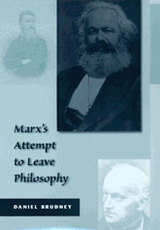 Marx’s Attempt to Leave Philosophy
Daniel Brudney
Harvard University Press, 1998 Daniel Brudney traces the development of post-Hegelian thought from Ludwig Feuerbach and Bruno Bauer to Karl Marx's work of 1844 and his Theses on Feuerbach, and concludes with an examination of The German Ideology. Brudney focuses on the transmutations of a set of ideas about human nature, the good life, and our relation to the world and to others; about how we end up with false beliefs about these matters; about whether one can, in a capitalist society, know the truth about these matters; and about the critique of capitalism which would flow from such knowledge.
Brudney shows how Marx, following Feuerbach, attempted to reveal humanity's nature and what would count as the good life, while eschewing and indeed polemicizing against "philosophy"--against any concern with metaphysics and epistemology. Marx attempted to avoid philosophy as early as 1844, and the central aims of his texts are the same right through The German Ideology. There is thus no break between an early and a late Marx; moreover, there is no "materialist" Marx, no Marx who subscribes to a metaphysical view, even in The German Ideology, the text canonically taken as the origin of Marxist materialism. Rather, in all the texts of this period Marx tries to mount a compelling critique of the present while altogether avoiding the dilemmas central to philosophy in the modern era.
Marx's 'Capital'
Ben Fine and Alfredo Saad-Filho
Pluto Press, 2016 This brilliantly concise book has established itself over twenty-five years and five editions as the standard companion to Karl Marx’s most important work, the sprawling Capital. This new edition retains the features that have made it a crucial teaching tool—a clear explanation of the structure of Marx’s analysis, an exploration of his method and terminology, and the significance of his central concepts—while also bringing it fully up to date with the latest scholarship and a clearly written analysis of the continuing relevance of Capital to today’s ongoing discussions of politics, economics, and the struggles of capitalism.
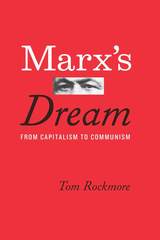 Marx's Dream: From Capitalism to Communism
Tom Rockmore
University of Chicago Press, 2018 Two centuries after his birth, Karl Marx is read almost solely through the lens of Marxism, his works examined for how they fit into the doctrine that was developed from them after his death.
With Marx’s Dream, Tom Rockmore offers a much-needed alternative view, distinguishing rigorously between Marx and Marxism. Rockmore breaks with the Marxist view of Marx in three key ways. First, he shows that the concern with the relation of theory to practice—reflected in Marx’s famous claim that philosophers only interpret the world, while the point is to change it—arose as early as Socrates, and has been central to philosophy in its best moments. Second, he seeks to free Marx from his unsolicited Marxist embrace in order to consider his theory on its own merits. And, crucially, Rockmore relies on the normal standards of philosophical debate, without the special pleading to which Marxist accounts too often resort. Marx’s failures as a thinker, Rockmore shows, lie less in his diagnosis of industrial capitalism’s problems than in the suggested remedies, which are often unsound.
Only a philosopher of Rockmore’s stature could tackle a project this substantial, and the results are remarkable: a fresh Marx, unencumbered by doctrine and full of insights that remain salient today.
Mary and the Giant Mechanism
Mary Molinary
Tupelo Press, 2013 “Riven by the events of the first decade of this century and shot through with grief and a bird-like wonder, Mary Molinary uses the space of the poetry collection to experiment with a form—and therefore invent a mechanism—to reckon with this ‘marked little bird of a heart’ that must live each day with the knowledge of the ongoing torture, war, and violence performed in one’s name. Perhaps in imitation of a complicity alternately figurative and real, the poet situates commonplaces hard by the nearly indescribable: a borrowed ornithology joined to an ancient illumination, ‘a speaking self’ beside ‘a seen other,’ elegy followed by apology followed by ‘what will emerge.’ Through her thousand fresh images and tender elisions we are asked to look and finally see. To read Mary & the Giant Mechanism is to revisit our common history with an open, lyric heart.”— Carol Ann Davis, judge’s citation for the Tupelo Press First Book Award
Mary Austin Holley: A Biography
By Rebecca Smith Lee
University of Texas Press, 1962 Mary Austin Holley found life challenging and made it interesting for others. As wife and widow of Horace Holley, eminent orator, clergyman, and educator, and as cousin and friend of Stephen F. Austin, founder of the first Texas colony, she formed friendships among important people. From New Haven to New Orleans and Brazoria, Texas, she was beloved. The panorama of her life, described in vivid detail by a former head of the English Department at Texas Christian University, transports the reader to the tempestuous early years of the American Republic and, finally, to Texas during its colonization and early Republic years. Throughout this charming book Mrs. Holley's "intuition for important people" brings the reader into the company of many of America's great and accomplished: Noah Webster, John Quincy Adams, President and Mrs. Monroe, Andrew Jackson, Sam Houston, and many others.
Mary Austin Holley: The Texas Diary, 1835–1838
Edited by J. P. Bryan
University of Texas Press, 1965 Mary Austin Holley (1784–1846), a cousin of Stephen F. Austin, journeyed to Texas on three separate occasions. Her first visit, in 1831, resulted in the publication of her book, Texas. Her second and third trips, in 1835 and 1837, were depicted in her diary. This witty, observant, and highly perceptive woman captured the infant Texas in her journal—the Mexican state moving toward rebellion and the new Republic, dynamic and struggling with a great destiny. The Holley diary is an important insight into the social and political history of early Texas.
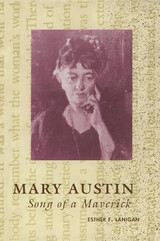 Mary Austin: Song of a Maverick
Esther F. Lanigan
University of Arizona Press, 1997 "This book seamlessly combines biography and criticism. [Lanigan] adeptly analyzes Austin's life...and also offers insightful analyses of Austin's writing. Like other females of her period, she received too little recognition for her original prose style and social critiques. Thanks to Song of a Maverick, we hear Mary Austin's voice more clearly and appreciatively." —Carol J. Singley in American Literature
"[Lanigan] provides illuminating sociological background and lucidly marshals the existing biolgraphical data." —Choice
"Mary Hunter Austin was a well-known and respected author and activitst in her lifetime but is little known in ours. In this excellent biography...[Lanigan] chose to focus on a few central relationships in Austin's life, to explore in some depth a few central texts, and to understand the interior life of her subject. She has done a splendid job." —Ann J. Lane in the Journal of American History
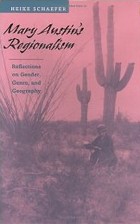 Mary Austin's Regionalism: Reflections on Gender, Genre, and Geography
Heike Schaefer
University of Virginia Press, 2004 Best known for The Land of Little Rain, a collection of natural-history essays about the California deserts, the Western writer Mary Austin (1868-1934) was a prolific literary figure in the first few decades of the twentieth century. In addition to her essays and short stories, Austin produced novels, poems, and cultural criticism, and was well known as a feminist, political writer, and mystic. Over the past decade a number of Austin's books have been reissued and her work has been the subject of increasing critical attention.
Heike Schaefer's study complements that renewed interest with a fresh, broad appreciation of the complexity of Austin's work. Considering unpublished materials and the full range of Austin's literary and theoretical writing, Mary Austin's Regionalism: Reflections on Gender, Genre, and Geography presents Austin as a significant early twentieth-century author who reworked the traditions of nature writing and women's regionalism to envision a sustainable and democratic American culture. Austin brought an environmental awareness to the exploration of the race, gender, and class dynamics informing the European American colonization of the West. Drawing on Southwestern folklore and Native American concepts of storytelling, her work addressed feminist, pluralist, and ecological concerns in often strikingly original ways. By placing Austin's writing in the context of contemporaneous as well as current critical debates, Mary Austin's Regionalism reveals the insights that Austin's work offers to present discussions of sense of place, the construction of human and nonhuman nature, sustainability, feminist politics, and the dynamics of intercultural communication. Mary Austin's decades-old regionalist work still has the power to fascinate and move a wide audience of contemporary readers.
--------------------------------------------------------------------------------
Heike Schaefer is Assistant Professor of American Studies at the University of Mannheim.
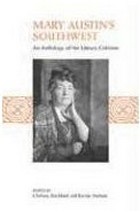 Mary Austin's Southwest: An Anthology of Her Literary Criticism
Chelsea Blackbird
University of Utah Press, 2005 "If Nationality means anything—and in [the American] case it couldn’t mean race—it must mean the unconscious response of a people to their natural environment."—Mary Austin
Celebrated and controversial author Mary Austin (1866-1934) lived in and wrote about her beloved Southwest, a place that has shaped and been shaped by three distinctive groups: Indian, Spanish, and Anglo. Austin discovered in the Southwest that these cultures blended languages, races, and religions, creating what she believed were unique versions of Catholicism, nature worship, ceremonies, and visions. Those beliefs worked their way through her literary criticism, leading her to ground-breaking ideas of place-based influences, narrative techniques, and dramatic development.
In Mary Austin’s Southwest, editors Blackbird and Nelson shine light on Austin’s work, revealing her to be a significant trailblazer for literary diversity. With thoughtful introductions to selected writings on Austin’s prose, drama, and poetry as well as an annotated checklist of her published Southwestern literary criticism, this collection is a celebration of a rich mixed heritage as expressed through the written word.
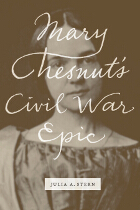 Mary Chesnut's Civil War Epic
Julia A. Stern
University of Chicago Press, 2009 A genteel southern intellectual, saloniste, and wife to a prominent colonel in Jefferson Davis’s inner circle, Mary Chesnut today is remembered best for her penetrating Civil War diary. Composed between 1861 and 1865 and revised thoroughly from the late 1870s until Chesnut’s death in 1886, the diary was published first in 1905, again in 1949, and later, to great acclaim, in 1981. This complicated literary history and the questions that attend it—which edition represents the real Chesnut? To what genre does this text belong?—may explain why the document largely has, until now, been overlooked in literary studies. Julia A. Stern’s critical analysis returns Chesnut to her rightful place among American writers. In Mary Chesnut’s Civil War Epic, Stern argues that the revised diary offers the most trenchant literary account of race and slavery until the work of Faulkner and that, along with his Yoknapatawpha novels, it constitutes one of the two great Civil War epics of the American canon. By restoring Chesnut’s 1880s revision to its complex, multidecade cultural context, Stern argues both for Chesnut’s reinsertion into the pantheon of nineteenth-century American letters and for her centrality to the literary history of women’s writing as it evolved from sentimental to tragic to realist forms.
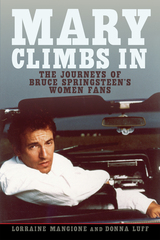 Mary Climbs In: The Journeys of Bruce Springsteen's Women Fans
Lorraine Mangione
Rutgers University Press, 2023 Bruce Springsteen has been cherished by his fans for decades, from his early days playing high school gymnasiums through globally successful albums and huge stadium shows to solo performances in intimate theaters. As his long and illustrious career has evolved, the legendary devotion of his fans has remained a constant. Springsteen fans have become worthy of study in their own right, with books, memoirs, and even a movie documenting their passion and perspectives. But his fans are not monolithic, and surprisingly little attention has been paid to why so many women from across the world adore The Boss.
Mary Climbs In illuminates this once overlooked but increasingly important and multi-faceted conversation about female audiences for Springsteen’s music. Drawing on unique surveys of fans themselves, the study offers insight into women’s experiences in their own voices. Authors Lorraine Mangione and Donna Luff explore the depth of women fans’ connection to Springsteen and the profound ways this connection has shaped their lives. Reflections from fans enliven each page as readers journey through the camaraderie and joy of concerts, the sorrow and confusion of personal loss and suffering, the love and closeness of community, and the search for meaning and for the self. Viewed through a psychological lens, women fans’ relationship with Springsteen is revealed in all its complexity as never before. Mary Climbs In is an important interdisciplinary contribution to the growing field of Springsteen studies and a must-read for any fan.
Mary in the Qur'an: Friend of God, Virgin, Mother
Muna Tatari and Klaus von Stosch
Gingko, 2025 A sensitive consideration of Mary, mother of Jesus, in the Qur’an.
An entire chapter (surah) is dedicated to her, and she is the only woman mentioned by name in the Qur’an—indeed, her name appears more frequently than that of either Muhammad or Jesus. From the earliest times to the present day, Mary, the mother of Jesus, continues to be held in high regard by Christians and Muslims alike, yet she has also been the cause of much tension between these two religions.
In this groundbreaking study, Muna Tatari and Klaus von Stosch painstakingly reconstruct the picture of Mary that is presented in the Qur’an and show how veneration of the Blessed Virgin Mary in the Roman Catholic Church intersects and interacts with the testimony of the Qur’an. This sensitive and scholarly treatise offers a significant contribution to contemporary interfaith dialogue.
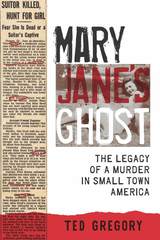 Mary Jane's Ghost: The Legacy of a Murder in Small Town America
Ted Gregory
University of Iowa Press, 2017 Summer 1948. In the scenic, remote river town of Oregon, Illinois, a young couple visiting the local lovers’ lane is murdered. The shocking crime garners headlines from Portland, Maine, to Long Beach, California. But after a sweeping manhunt, no one is arrested and the violent deaths of Mary Jane Reed and Stanley Skridla fade into time’s indifference.
Fast forward fifty years. Eccentric entrepreneur Michael Arians moves to Oregon, opens a roadhouse, gets elected mayor, and becomes obsessed with the crime. He comes up with a scandalous conspiracy theory and starts to believe that Mary Jane’s ghost is haunting his establishment. He also reaches out to the Chicago Tribune for help.
Arians’s letter falls on the desk of general assignment reporter Ted Gregory. For the next thirteen years, while he ricochets from story to story and his newspaper is deconstructed around him, Gregory remains beguiled by the case of the teenaged telephone operator Mary Jane and twenty-eight-year-old Navy vet Stanley—and equally fascinated by Arians’s seemingly hopeless pursuit of whoever murdered them. Mary Jane’s Ghost is the story of these two odysseys.
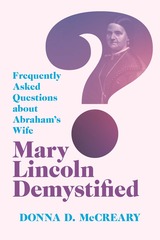 Mary Lincoln Demystified: Frequently Asked Questions about Abraham’s Wife
Donna D. McCreary
Southern Illinois University Press, 2022 WINNER, 2023 Illinois State Historical Society Superior Achievement Award in “Books, Scholarly”!
Answering the most enigmatic questions about Mary Lincoln’s life
After portraying Mary Lincoln in hundreds of performances and giving lectures over a more than thirty-year career, Donna D. McCreary has fielded every imaginable inquiry about the First Lady. Gathered here, readers will find answers to the most frequently asked questions to come from live audiences. This first question-and-answer book arises directly from a public’s enduring curiosity with one the country’s most important historical figures. Decades of conversations with audiences, scholars, and relatives of the Todd family frame McCreary’s intimate and devoted research to offer a new and unique portrait of the most tragic First Lady.
Though Mary has been portrayed in books and film, McCreary’s book contains information not found elsewhere—details others have overlooked and those that would not fit well into a narrative history—such as lists of Mary’s beaus, servants, and the people the Todd family enslaved; appendixes that present mini-biographies of families and friends; and a uniquely thorough timeline. Mary Lincoln Demystified covers areas in which McCreary’s audiences have expressed the most interest: Mary’s sanity, her family relationships, her views on slavery and African Americans, her personality and habits, and what happened to her possessions and children after she died.
While sympathetic to the woman she portrayed for two decades, McCreary examines both sides of controversial issues and presents the facts with her trademark style and flair. More than a good read, McCreary’s Q&A factbook, based as it is on decades of extensive research in primary and secondary sources, will be the definitive resource for answers about Mary for years to come.
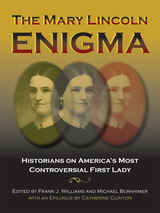 The Mary Lincoln Enigma: Historians on America's Most Controversial First Lady
Edited by Frank J. Williams and Michael Burkhimer, with an Epilogue by Catherine Clinton
Southern Illinois University Press, 2012 Mary Lincoln is a lightning rod for controversy. Stories reveal widely different interpretations, and it is impossible to write a definitive version of her life that will suit everyone. The thirteen engaging essays in this collection introduce Mary Lincoln’s complex nature and show how she is viewed today. The authors’ explanations of her personal and private image stem from a variety of backgrounds, and through these lenses—history, theater, graphic arts, and psychiatry—they present their latest research and assessments. Here they reveal the effects of familial culture and society on her life and give a broader assessment of Mary Lincoln as a woman, wife, and mother. Topics include Mary’s childhood in Kentucky, the early years of her marriage to Abraham, Mary’s love of travel and fashion, the presidential couple’s political partnership, and Mary’s relationship with her son Robert. The fascinating epilogue meditates on Mary Lincoln’s universal appeal and her enigmatic personality, showcasing the dramatic differences in interpretations. With gripping prose and in-depth documentation, this anthology will capture the imagination of all readers.
Univeristy Press Books for Public and Secondary Schools 2013 edition
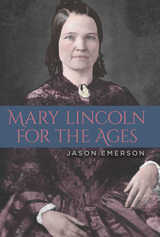 Mary Lincoln for the Ages
Jason Emerson
Southern Illinois University Press, 2019 In this sweeping analytical bibliography, Jason Emerson goes beyond the few sources usually employed to contextualize Mary Lincoln’s life and thoroughly reexamines nearly every word ever written about her. In doing so, this book becomes the prime authority on Mary Lincoln, points researchers to key underused sources, reveals how views about her have evolved over the years, and sets the stage for new questions and debates about the themes and controversies that have defined her legacy.
Mary Lincoln for the Ages first articulates how reliance on limited sources has greatly restricted our understanding of the subject, evaluating their flaws and benefits and pointing out the shallowness of using the same texts to study her life. Emerson then presents more than four hundred bibliographical entries of nonfiction books and pamphlets, scholarly and popular articles, journalism, literature, and juvenilia. More than just listings of titles and publication dates, each entry includes Emerson’s deft analysis of these additional works on Mary Lincoln that should be used—but rarely have been—to better understand who she was during her life and why we see her as we do. The volume also includes rarely used illustrations, including some that have never before appeared in print.
A roadmap for a firmer, more complete grasp of Mary Lincoln’s place in the historical record, this is the first and only extensive, analytical bibliography of the subject. In highlighting hundreds of overlooked sources, Emerson changes the paradigm of Mary Lincoln’s legacy.
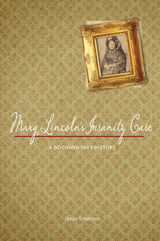 Mary Lincoln's Insanity Case: A Documentary History
Jason Emerson
University of Illinois Press, 2012 In 1875 Mary Lincoln, the widow of a revered president, was committed to an insane asylum by her son, Robert. The trial that preceded her internment was a subject of keen national interest. The focus of public attention since Abraham Lincoln's election in 1860, Mary Lincoln had attracted plentiful criticism and visible scorn from much of the public, who perceived her as spoiled, a spendthrift, and even too much of a Southern sympathizer. Widespread scrutiny only increased following her husband's assassination in 1865 and her son Tad's death six years later, after which her overwhelming grief led to the increasingly erratic behavior that led to her being committed to a sanitarium. A second trial a year later resulted in her release, but the stigma of insanity stuck. In the years since, questions emerged with new force, as the populace and historians debated whether she had been truly insane and subsequently cured, or if she was the victim of family maneuvering. In this volume, noted Lincoln scholar Jason Emerson provides a documentary history of Mary Lincoln's mental illness and insanity case, evenhandedly presenting every possible primary source on the subject to enable a clearer view of the facts. Beginning with documents from the immediate aftermath of her husband's assassination and ending with reminiscences by friends and family in the mid-twentieth century, Mary Lincoln's Insanity Case: A Documentary History compiles more than one hundred letters, dozens of newspaper articles, editorials, and legal documents, and the daily patient progress reports from Bellevue Place Sanitarium during Mary Lincoln's incarceration. Including many materials that have never been previously published, Emerson also collects multiple reminiscences, interviews, and diaries of people who knew Mary Lincoln or were involved in the case, including the first-hand recollection of one of the jurors in the 1875 insanity trial. Suggesting neither accusation nor exoneration of the embattled First Lady, Mary Lincoln's Insanity Case: A Documentary History gives scholars and history enthusiasts incomparable access to the documents and information crucial to understanding this vexing chapter in American history.
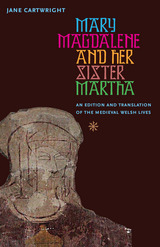 Mary Magdalene and Her Sister Martha: An Edition and Translation of the Medieval Welsh Lives
Jane Cartwright
Catholic University of America Press, 2013 Mary Magdalene and Her Sister Martha: An Edition and Translation of the Medieval Welsh Lives provides scholarly editions and English translations of the medieval Welsh versions of the legends of Mary Magdalene and Martha. Described by Victor Saxer as medieval best sellers, these hagiographical tales, which described how Mary Magdalene and her sister Martha survived a perilous sea voyage from the holy land and evangelized Provence, were available in many different Latin and vernacular versions and circulated widely in the medieval West. The texts were translated or adapted into Middle Welsh some time before the mid-fourteenth century: the Middle Welsh Life of Mary Magdalene is extant in thirteen manuscripts and the Middle Welsh Life of Martha is preserved in eight of the same manuscripts. Jane Cartwright makes the Middle Welsh versions available to an international audience for the first time and provides a detailed study of the Welsh manuscripts that contain the texts, a comparison between the different manuscripts versions and a discussion of the wider hagiographical context of the texts in Wales. The volume includes transcriptions, editions and translations of the two Lives based on the oldest most complete extant versions found in the Red Book of Talgarth c. 1400, as well as an additional section of text describing Mary Magdalenes life before Christs crucifixion from the fifteenth-century Aberystwyth, National Library of Wales, Peniarth MS 27ii. The edition is accompanied by a comprehensive glossary which provides translations of all medieval Welsh words that occur in the texts, an analysis of the development and transmission of the legends, as well as a discussion of the relevance and popularity of these two female saints in late medieval Wales: medieval Welsh poetry, church dedications, and holy wells are also considered.
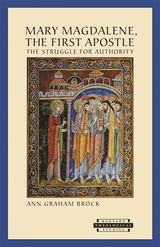 Mary Magdalene, The First Apostle: The Struggle for Authority
Ann Graham Brock
Harvard University Press, 2003 Why did some early Christians consider Mary Magdalene to be an apostle while others did not? Some Christian texts, underlining her role as one of the very first witnesses to the resurrection, portray Mary Magdalene as the "apostle to the apostles," while other sources exclude or replace her in their resurrection accounts.
This book examines how the conferral, or withholding, of apostolic status operated as a tool of persuasion in the politics of early Christian literature. Drawing on both canonical and noncanonical literature in her comprehensive study, the author reveals some intriguing correlations between the prominence of Peter in a text and a corresponding diminishment of women's leadership and apostolicity.
This historical study of early Christian tensions has serious implications for current denominational discourse because authority, apostolic status, and the ordination of women continue to be highly disputed topics within many Christian circles today.
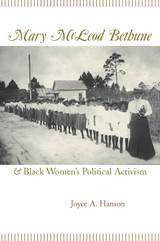 Mary McLeod Bethune and Black Women's Political Activism
Joyce A. Hanson
University of Missouri Press, 2003 Mary McLeod Bethune was a significant figure in American political history. She devoted her life to advancing equal social, economic, and political rights for blacks. She distinguished herself by creating lasting institutions that trained black women for visible and expanding public leadership roles. Few have been as effective in the development of women’s leadership for group advancement. Despite her accomplishments, the means, techniques, and actions Bethune employed in fighting for equality have been widely misinterpreted. Mary McLeod Bethune and Black Women’s Political Activism seeks to remedy the misconceptions surrounding this important political figure. Joyce A. Hanson shows that the choices Bethune made often appear contradictory, unless one understands that she was a transitional figure with one foot in the nineteenth century and the other in the twentieth. Bethune, who lived from 1875 to 1955, struggled to reconcile her nineteenth-century notions of women’s moral superiority with the changing political realities of the twentieth century. She used two conceptually distinct levels of activism—one nonconfrontational and designed to slowly undermine systemic racism, the other openly confrontational and designed to challenge the most overt discrimination—in her efforts to achieve equality. Hanson uses a wide range of never- or little-used primary sources and adds a significant dimension to the historical discussion of black women’s organizations by such scholars as Elsa Barkley Brown, Sharon Harley, and Rosalyn Terborg-Penn. The book extends the current debate about black women’s political activism in recent work by Stephanie Shaw, Evelyn Brooks-Higginbotham, and Glenda Elizabeth Gilmore.
Examining the historical evolution of African American women’s activism in the critical period between 1920 and 1950, a time previously characterized as “doldrums” for both feminist and civil rights activity, Mary McLeod Bethune and Black Women’s Political Activism is important for understanding the centrality of black women to the political fight for social, economic, and racial justice.
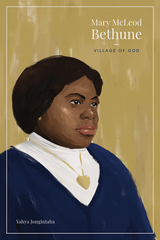 Mary McLeod Bethune: Village of God
Yahya Jongintaba
University of Tennessee Press, 2021 Mary McLeod Bethune was born on May 10, 1875, in a log cabin in rural Sumter County, South Carolina. She was the fifteenth child among seventeen siblings but the first born free of the bonds of slavery. As a child she attended a Presbyterian mission school in nearby Mayesville and Scotia Seminary in Concord, North Carolina. After some years at Scotia she was admitted in 1894 to the Moody Bible Institute in Chicago. Her two years of training at Moody did not lead to missionary work in Africa, as she had dreamed, but to missionlike teaching positions in the South and eventually her founding, in 1904, of the Daytona Normal and Industrial Institute for Girls, in Daytona Beach, Florida. That institution would grow to the present-day Bethune-Cookman University.
In this religious biography, author Yahya Jongintaba traces Bethune’s life of service in lively prose, structuring his book in a five-part framework that organizes his subject’s life in parallel with the Lord’s Prayer and virtues identified by Bethune herself: freedom, creativity, integrity, discipline, and love. With unfettered access to Bethune’s personal archive, Jongintaba paints a picture of a mother figure and mentor to generations, a nearsaint who lived “a blameless life for four-score years.” With deep empathy and the kind of “spiritual understanding” that Bethune had despaired of finding in a biographer in her own lifetime (despite attempts by publishers and herself to find just the right person), Jongintaba endeavors to achieve in his biography what Bethune wrote that she hoped to accomplish in an autobiography that never materialized: to “give to the world the real Mary McLeod Bethune’s life as I have lived it.”
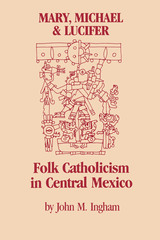 Mary, Michael, and Lucifer: Folk Catholicism in Central Mexico
By John M. Ingham
University of Texas Press, 1986 The physical signs of Roman Catholicism pervade the Mexican countryside. Colonial churches and neighborhood chapels, wayside shrines, and mountaintop crosses dot the landscape. Catholicism also permeates the traditional cultures of rural communities, although this ideational influence is less immediately obvious. It is often couched in enigmatic idiom and imagery, and it is further obscured by the vestiges of pagan customs and the anticlerical attitudes of many villagers. These heterodox tendencies have even led some observers to conclude that Catholicism in rural Mexico is little more than a thin veneer on indigenous practice. In Mary, Michael, and Lucifer John M. Ingham attempts to develop a modern semiotic and structuralist interpretation of traditional Mexican culture, an interpretation that accounts for the culture's apparent heterodoxy. Drawing on field research in Tlayacapan, Morelos, a village in the central highlands, he shows that nearly every domain of folk culture is informed with religious meaning. More precisely, the Catholic categories of spirit, nature, and evil compose the basic framework of the villagers' social relations and subjective experiences.
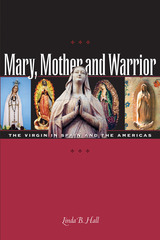 Mary, Mother and Warrior: The Virgin in Spain and the Americas
By Linda B. Hall
University of Texas Press, 2004 A Mother who nurtures, empathizes, and heals... a Warrior who defends, empowers, and resists oppression... the Virgin Mary plays many roles for the peoples of Spain and Spanish-speaking America. Devotion to the Virgin inspired and sustained medieval and Renaissance Spaniards as they liberated Spain from the Moors and set about the conquest of the New World. Devotion to the Virgin still inspires and sustains millions of believers today throughout the Americas. This wide-ranging and highly readable book explores the veneration of the Virgin Mary in Spain and the Americas from the colonial period to the present. Linda Hall begins the story in Spain and follows it through the conquest and colonization of the New World, with a special focus on Mexico and the Andean highlands in Peru and Bolivia, where Marian devotion became combined with indigenous beliefs and rituals. Moving into the nineteenth century, Hall looks at national cults of the Virgin in Mexico, Bolivia, and Argentina, which were tied to independence movements. In the twentieth century, she examines how Eva Perón linked herself with Mary in the popular imagination; visits contemporary festivals with significant Marian content in Spain, Peru, and Mexico; and considers how Latinos/as in the United States draw on Marian devotion to maintain familial and cultural ties.
 Mary, Mother of God's Word Made Flesh
Dylan Schrader
Catholic University of America Press, 2025 Mary, Mother of God’s Word Made Flesh overviews Catholic teaching on Mary, with a special focus on the “four Marian dogmas” and other major doctrines, such as Mary’s cooperation in the work of salvation and the distribution of graces. The book takes the relationship of Mary to Jesus as its starting point, while also drawing on insights from ecclesio typical and Christotypical approaches to Mariology.
This book emphasizes that Marian doctrine must be grounded in the revealed Word of God. Thus, it does not rely on private revelations but instead draws on scriptural, magisterial, patristic, and liturgical sources. At the same time, Mary, Mother of God’s Word Made Flesh is systematic and not merely historical. It strives to show how Catholic teachings on Mary fit together and explores precisely what they mean.
In this task, Mary, Mother of God’s Word Made Flesh draws in a special way on St. Thomas Aquinas and the Thomistic school, while also incorporating insights from other approaches. Thus, it also engages with some speculative questions that have not received as much attention in other recent works of Mariology but that remain important for the correct understanding and elaboration of magisterial teachings. For example, it deals with the issue of the debitum peccati (“debt of sin”), which touches on how to connect the Immaculate Conception with the notion of redemption, and the question of precisely how Mary is involved in the conferral of graces.
The most important parts of this book are the chapters on the dogmas of the divine maternity, the immaculate conception, the perpetual virginity of Mary, and her assumption into heaven. There are also chapters on Mary’s holiness of life, her participation in Christ’s saving work, and Marian devotion in the life of the Church. The first appendix overviews the problem of what St. Thomas Aquinas taught about the Immaculate Conception, while the second discusses the magisterium’s current approach to private revelations and extraordinary phenomena.
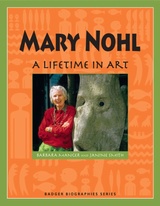 Mary Nohl: A Lifetime in Art
Barbara Manger
Wisconsin Historical Society Press, 2013 LOOK INSIDE THE LIFE — AND HOME — OF LEGENDARY 'OUTSIDER' ARTIST MARY NOHL "Mary Nohl: A Lifetime in Art" by Barbara Manger and Janine Smith, tells the story of Milwaukee-born artist, Mary Nohl. A prolific and fanciful maker who worked in a variety of media, Nohl was both a mysterious figure and an iconic "outsider" artist. This new addition to the Badger Biographies series captures her life and will capture the imagination of readers, and artists, of all ages. Nohl didn't just make art — she lived it. From the time she was young, Mary enjoyed making things, from the model airplane that won her a citywide prize to assignments in shop class, where she learned to work with tools. Her interests in art blossomed during the years she spent training at the Art Institute of Chicago, leading to a lifetime of curiosity and ventures into new artistic media. From pottery to silver jewelry and oil painting to concrete sculpture, Mary explored new ways of making art. Many of her pieces were made from found objects that other people might think of as junk — like chicken bones, bedsprings and sand that she made into concrete. Nohl, who made her home on the shores of Lake Michigan, decorated the interior of her cottage with bright colors and eye-catching figures in driftwood and glass. During her later years, her home became known as the "Witch's House" — a place of local legend known far beyond Fox Point. Though she died in 2001, Mary's legacy continues. Her art is held at the John Michael Kohler Arts Center in Sheboygan, and her home is listed on the National Register of Historic Places. The popular Badger Biographies series for young readers explores the lives of famous and not-so-famous figures in Wisconsin history. The Wisconsin Historical Society Press is proud to celebrate the release of this, the 21st book in the series.
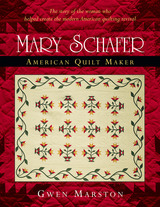 Mary Schafer, American Quilt Maker
Gwen Marston
University of Michigan Press, 2004 Extensively illustrated, with over 100 drawings and 11 unique Mary Schafer patterns, Mary Schafer, American Quilt Maker is a must-have book for anyone passionate about American quilting. While we take that passion for granted today, author Gwen Marston shows that it wasn't always so; indeed, one woman, Mary Schafer, was largely responsible for the restoration of interest in one of our greatest folk arts -- long before the American bicentennial turned quilting into what seemed like an overnight sensation. Marston presents Schafer as an unassuming scholar: the anonymous quilter, remaining humble and somewhat retiring. Behind the modest façade, however, Schafer displayed a remarkable devotion to research, historical accuracy, and community through her efforts to make quilting available to as many people as possible. Nonquilters will find Mary Schafer, American Quilt Maker a welcome addition to their collection of the work of masters of American folk art, while quilting aficionados will appreciate it not only for the story it tells, but for the generous selection of patterns and illustrations it offers. Gwen Marston is a nationally known quilt maker, teacher, and author. She is the author of over fifteen books on quilting, including Liberated String Quilts, 70 Classic Quilting Patterns, and Amish Quilting Patterns.
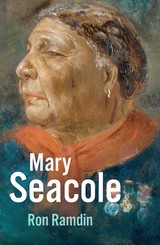 Mary Seacole
Ron Ramdin
Haus Publishing, 2020 Biography of Mary Seacole, a pioneering nineteenth-century British-Jamaican nurse.
Mary Seacole’s remarkable life began in Jamaica, where she was born a free person, the daughter of a black mother and white Scottish army officer. Ron Ramdin—who, like Seacole, was born in the Caribbean and emigrated to the United Kingdom—tells the remarkable story of this woman, celebrated today as a pioneering nurse.
Refused permission to serve as an army nurse, Seacole took the remarkable step of funding her own journey to the Crimean battlefront, and there, in the face of sometimes harsh opposition, she established a hotel for wounded British soldiers. Unlike Florence Nightingale—whose exploits saw her venerated as the “lady with the lamp” for generations afterward—Seacole cared for soldiers perilously close to the fighting. As Ramdin shows in this biography, Seacole’s time in Crimea, for which she is best known, was only the pinnacle of a life of adventure and travel.
Maryam: Keeper of Stories
Alawiya Sobh
Seagull Books, 2016 This acclaimed novel is set during the Lebanese Civil War and offers a rare depiction of women’s experiences amid this sprawling, region-defining conflict. In Alawiya Sobh’s hands, the details of everyday life mix with female voices from across classes, sects, and generations to create an indelible picture of a climate where violence and war are the overt outbreak of a simmering tension that underlies the life in the region. Here, stories struggle to survive the erasure of war and rescue the sweetness of living, trying to connect the tellers and their audience while transforming pain and love into abiding, sustaining art. Rendered sensitively into English through a close collaboration between author and translator, Maryam offers an unforgettable picture of conflict and its costs.
 The Maryknoll Catholic Mission in Peru, 1943-1989: Transnational Faith and Transformations
Susan Fitzpatrick-Behrens
University of Notre Dame Press, 2012
Maryknoll Catholic missionaries from the United States settled in Peru in 1943 believing they could save a “backward” Catholic Church from poverty, a scarcity of clergy, and the threat of communism. Instead, the missionaries found themselves transformed: within twenty-five years, they had become vocal critics of United States foreign policy and key supporters of liberation theology, the preferential option for the poor, and intercultural Catholicism.
In The Maryknoll Catholic Mission in Peru, 1943-1989, Susan Fitzpatrick-Behrens explains this transformation and Maryknoll’s influence in Peru and the United States by placing it in the context of a transnational encounter Catholics with shared faith but distinct practices and beliefs. Peru received among the greatest number of foreign Catholic missionaries who settled in Latin America during the Cold War. It was at the heart of liberation theology and progressive Catholicism, the center of a radical reformist experiment initiated by a progressive military dictatorship, and the site of a devastating civil war promoted by the Maoist Shining Path. Maryknoll participated in all these developments, making Peru a perfect site for understanding Catholic missions, the role of religion in the modern world, and relations between Latin America and the United States.
This book is based on two years of research conducted in Peru, where Fitzpatrick-Behrens examined national and regional archives, conducted extensive interviews with Maryknoll clergy who continued to work in the country, and engaged in participant observation in the Aymara indigenous community of Cutini Capilla. Her findings contest assumptions about secularization and the decline of public religion by demonstrating that religion continues to play a key role in social, political, and economic development.
"Exhaustively researched and very well written, Susan Fitzpatrick-Behren's account of the Maryknoll congregation in Peru from 1943 to 1986 is a remarkable history. During these decades, the Catholic Church and Peru both underwent very profound transformations; Fitzpatrick-Behrens has analyzed those changes and the interaction between the church and the Peruvian government with great skill and insight."
—Scott P. Mainwaring, Eugene and Helen Conley Professor of Political Science and director of the Kellogg Institute for International Studies, University of Notre Dame
 Mary's Bodily Assumption
Matthew Levering
University of Notre Dame Press, 2014 In Mary’s Bodily Assumption, Matthew Levering presents a contemporary explanation and defense of the Catholic doctrine of Mary’s bodily Assumption. He asks: How does the Church justify a doctrine that does not have explicit biblical or first-century historical evidence to support it? With the goal of exploring this question more deeply, he divides his discussion into two sections, one historical and the other systematic.
Levering’s historical section aims to retrieve the rich Mariological doctrine of the mid-twentieth century. He introduces the development of Mariology in Catholic Magisterial documents, focusing on Pope Pius XII’s encyclical Munificentissimus Deus of 1950, in which the bodily Assumption of Mary was dogmatically defined, and two later Magisterial documents, Vatican II’s Lumen Gentium and Pope John Paul II’s Redemptoris Mater. Levering addresses the work of the neo-scholastic theologians Joseph Duhr, Aloïs Janssens, and Réginald Garrigou-Lagrange before turning to the great theologians of the nouvelle théologie—Karl Rahner, Hans Urs von Balthasar, Louis Bouyer, Joseph Ratzinger—and their emphasis on biblical typology. Using John Henry Newman as a guide, Levering organizes his systematic section by the three pillars of the doctrine on which Mary’s Assumption rests: biblical typology, the Church as authoritative interpreter of divine revelation under the guidance of the Holy Spirit, and the fittingness of Mary’s Assumption in relation to the other mysteries of faith.
Levering’s ecumenical contribution is a significant engagement with Protestant biblical scholars and theologians; it is also a reclamation of Mariology as a central topic in Catholic theology.
"Mary's bodily Assumption continues to garner much disagreement, both among Protestants and Catholics, rendering a book on the topic worthwhile. This is especially so since little recent work has been done by way of careful Catholic apologetic. Matthew Levering now fills that void with Mary's Bodily Assumption; his is a thorough, well-conceived, clearly structured, well-written book, one that displays a fair-minded approach to how he thinks we can and cannot arrive at the doctrine of the Assumption." —Hans Boersma, J. I. Packer Professor of Theology, Regent College
Mary's Wild Winter Feast
Hannah Lindoff
University of Alaska Press, 2014 When winter rain washes away Mary’s chances for a sledding day, she thinks there is no hope for excitement. But with a little imagination and a brimming pantry she soon finds herself caught up in a colorful journey. Together with her father she relives five Alaska adventures, each uniquely inspired by a jar in her pantry. From salmon to blueberries, each lively tale introduces young readers to Mary’s homeland and invites them to learn about how different places can produce different foods.
Featuring brilliant collages from artists Nobu Koch and Clarissa Rizal, Mary’s Wild Winter Feast is a celebration of food, family, and finding fun in unexpected places.
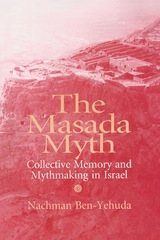 Masada Myth: Collective Memory and Mythmaking in Israel
Nachman Ben-Yehuda
University of Wisconsin Press, 1996 In 73 A.D., legend has it, 960 Jewish rebels under siege in the ancient desert fortress of Masada committed suicide rather than surrender to a Roman legion. Recorded in only one historical source, the story of Masada was obscure for centuries. In The Masada Myth, Israeli sociologist Nachman Ben-Yehuda tracks the process by which Masada became an ideological symbol for the State of Israel, the dramatic subject of movies and miniseries, a shrine venerated by generations of Zionists and Israeli soldiers, and the most profitable tourist attraction in modern Israel.
Ben-Yehuda describes how, after nearly 1800 years, the long, complex, and unsubstantiated narrative of Josephus Flavius was edited and augmented in the twentieth century to form a simple and powerful myth of heroism. He looks at the ways this new mythical narrative of Masada was created, promoted, and maintained by pre-state Jewish underground organizations, the Israeli army, archaeological teams, mass media, youth movements, textbooks, the tourist industry, and the arts. He discusses the various organizations and movements that created “the Masada experience” (usually a ritual trek through the Judean desert followed by a climb to the fortress and a dramatic reading of the Masada story), and how it changed over decades from a Zionist pilgrimage to a tourist destination.
Placing the story in a larger historical, sociological, and psychological context, Ben-Yehuda draws upon theories of collective memory and mythmaking to analyze Masada’s crucial role in the nation-building process of modern Israel and the formation of a new Jewish identity. An expert on deviance and social control, Ben-Yehuda looks in particular at how and why a military failure and an enigmatic, troubling case of mass suicide (in conflict with Judaism’s teachings) were reconstructed and fabricated as a heroic tale.
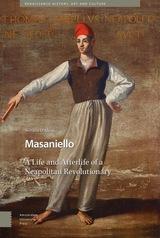 Masaniello: The Life and Afterlife of a Neapolitan Revolutionary
Silvana D'Alessio
Amsterdam University Press, 2023 This is a translation and new edition of Masaniello. La sua vita e il mito in Europa (Rome, 2007), the first historical biography of the leader of the revolt that broke out in Naples in 1647–48. Initially, its main objectives were the cancellation of the many taxes introduced in previous decades and a political reform that would allow the people to have their voice in the civic parliament. Thanks to Masaniello, the Neapolitans were able to compel the Spanish viceroy to sign new ‘capitoli’ (popular desiderata) but soon after, Masaniello was isolated by his main counselor, Giulio Genoino, and others, and ultimately abandoned to a tragic fate. From the moment of his death, a fascinating new life began in which Masaniello was exalted and condemned in many texts (historical volumes, plays, and even a dialogue with Wilhelm Tell) until, by the Risorgimento, he was remembered as an Italian hero.
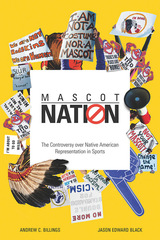 Mascot Nation: The Controversy over Native American Representations in Sports
Andrew C. Billings, Jason Edward Black
University of Illinois Press, 2018 The issue of Native American mascots in sports raises passions but also a raft of often-unasked questions. Which voices get a hearing in an argument? What meanings do we ascribe to mascots? Who do these Indians and warriors really represent? Andrew C. Billings and Jason Edward Black go beyond the media bluster to reassess the mascot controversy. Their multi-dimensional study delves into the textual, visual, and ritualistic and performative aspects of sports mascots. Their original research, meanwhile, surveys sports fans themselves on their thoughts when a specific mascot faces censure. The result is a book that merges critical-cultural analysis with qualitative data to offer an innovative approach to understanding the camps and fault lines on each side of the issue, the stakes in mascot debates, whether common ground can exist and, if so, how we might find it.
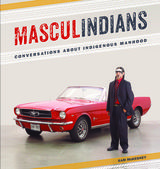 Masculindians: Conversations about Indigenous Manhood
Sam McKegney
Michigan State University Press, 2014 Between October 2010 and August 2013, Sam McKegney conducted interviews with leading Indigenous artists, critics, activists, and elders on the subject of Indigenous manhood. In offices, kitchens, and coffee shops, and once in a car driving down the 401, McKegney and his participants tackled crucial questions about masculine self-worth and how to foster balanced and empowered gender relations. Masculindians captures twenty-two of these conversations in a volume that is intensely personal, yet speaks across generations, geography, and gender boundaries. As varied as their speakers, the discussions range from culture, history, and world view to gender theory, artistic representations, and activist interventions. They speak of possibility and strength, of beauty and vulnerability. They speak of sensuality, eroticism, and warriorhood, and of the corrosive influence of shame, racism, and violence. Firmly grounding Indigenous continuance in sacred landscapes, interpersonal reciprocity, and relations with other-than-human kin, these conversations honor and embolden the generative potential of healthy Indigenous masculinities.
Contributors: Taiaiake Alfred, Kim Anderson, Joanne Arnott, Joseph Boyden, Alison Calder, Warren Cariou, Jessica Danforth, Louise Halfe, Tomson Highway, Daniel Heath Justice, Janice C. Hill Kanonhsyonni, Lee Maracle, Neal McLeod, Daniel David Moses, Gregory Scofield, Thomas Kimeksum Thrasher, and Richard Van Camp.
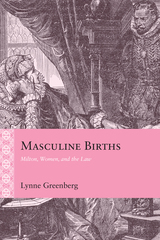 Masculine Births: Milton, Women, and the Law
Lynne Greenberg
Northwestern University Press, 2026 Examining the legal lives of early modern women through Milton’s literary works In his History of Britain, John Milton writes, “Laws are Masculin Births . . . nothing [is] more awry from the Law of God and Nature, then that a Woman should give Laws to Men.” In this interdisciplinary study, Lynne Greenberg explores the normative and nonnormative legal lives of early modern women as depicted in Milton’s works—unmarried and married women, mothers, heiresses, widows, and queens—providing cogent overviews of the laws of multiple jurisdictions to offer critical context for each case study. Greenberg explores a wide range of legal-juridical materials and previously unexplored archival and private family documents. As she demonstrates, while Milton’s narratives are at times enmeshed in existing jural paradigms, they also offer resistant responses to marital, custodial, property, inheritance, and criminal laws and even imagine alternative jural paradigms for women. Through Masculine Births: Milton, Women and the Law, Greenberg deftly reveals that Milton both reproduces seventeenth-century legal constructs and gives birth to laws that move us toward greater equality for women.
 Masculine Figures: Fashioning Men and the Novel in Nineteenth-Century Spain
Nicholas Wolters
Vanderbilt University Press, 2022 Based on years of archival research in Madrid and Barcelona, this interdisciplinary study offers a fresh approach to understanding how men visualized themselves and their place in a nation that struggled to modernize after nearly a century of civil war, colonial entanglement, and imperial loss. Masculine Figures is the first study to provide a comprehensive overview of competing models of masculinity in nineteenth-century Spain, and it is particularly novel in its treatment of Catalan texts and previously unstudied evidence (e.g., department store catalogs, commercial advertisements, fashion plates, and men’s tailoring journals).
Fictional masculinity performs a symbolic role in representing and negotiating the contradictions male novelists often encountered in their attempts to professionalize not only as writers, but also as businessmen, professors, lawyers, and politicians. Through specific and recurring figures like the student, the priest, the businessman, and the heir, male novelists portray and represent an increasingly middle-class world at odds with the values and virtues it inherited from an imperial Spanish past, and those it imported from more industrialized nations like England and France. The visual culture of the time and place marks the material turn in middle-class masculinity and sets the stage for discussions of race and sexuality.
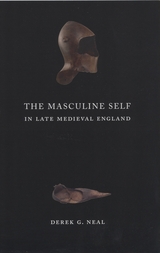 The Masculine Self in Late Medieval England
Derek G. Neal
University of Chicago Press, 2008 What did it mean to be a man in medieval England? Most would answer this question by alluding to the power and status men enjoyed in a patriarchal society, or they might refer to iconic images of chivalrous knights. While these popular ideas do have their roots in the history of the aristocracy, the experience of ordinary men was far more complicated.
Marshalling a wide array of colorful evidence—including legal records, letters, medical sources, and the literature of the period—Derek G. Neal here plumbs the social and cultural significance of masculinity during the generations born between the Black Death and the Protestant Reformation. He discovers that social relations between men, founded on the ideals of honesty and self-restraint, were at least as important as their domination and control of women in defining their identities. By carefully exploring the social, physical, and psychological aspects of masculinity, The Masculine Self in Late Medieval England offers a uniquely comprehensive account of the exterior and interior lives of medieval men.
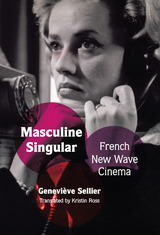 Masculine Singular: French New Wave Cinema
Geneviève Sellier
Duke University Press, 2008 Masculine Singular is an original interpretation of French New Wave cinema by one of France’s leading feminist film scholars. While most criticism of the New Wave has concentrated on the filmmakers and their films, Geneviève Sellier focuses on the social and cultural turbulence of the cinema’s formative years, from 1957 to 1962. The New Wave filmmakers were members of a young generation emerging on the French cultural scene, eager to acquire sexual and economic freedom. Almost all of them were men, and they “wrote” in the masculine first-person singular, often using male protagonists as stand-ins for themselves. In their films, they explored relations between men and women, and they expressed ambivalence about the new liberated woman. Sellier argues that gender relations and the construction of sexual identities were the primary subject of New Wave cinema. Sellier draws on sociological surveys, box office data, and popular magazines of the period, as well as analyses of specific New Wave films. She examines the development of the New Wave movement, its sociocultural and economic context, and the popular and critical reception of such well-known films as Jules et Jim and Hiroshima mon amour. In light of the filmmakers’ focus on gender relations, Sellier reflects on the careers of New Wave’s iconic female stars, including Jeanne Moreau and Brigitte Bardot. Sellier’s thorough exploration of early New Wave cinema culminates in her contention that its principal legacy—the triumph of a certain kind of cinephilic discourse and of an “auteur theory” recognizing the director as artist—came at a steep price: creativity was reduced to a formalist game, and affirmation of New Wave cinema’s modernity was accompanied by an association of creativity with masculinity.
 The Masculine Woman in America, 1890-1935
Laura L. Behling
University of Illinois Press, 2001 The Masculine Woman in America, 1890-1935 examines how the suffrage movement's efforts to secure social and political independence for women were translated by a fearful society into a movement of unnatural "masculinized" women and dangerous "female sexual inverts."
Scrutinizing depictions of the masculine woman in literature and the popular press, Laura L. Behling explicates the literary, artistic, and rhetorical strategies used to eliminate the "sexually inverted" woman: punishing her by imprisonment or death; "rescuing" her into heterosexuality; subverting her through parody; or removing her from society to some remote or mystical place. Behling also shows how fictional same-sex relationships in the writings of Henry James, Charlotte Perkins Gilman, Gertrude Stein, and others conformed to and ultimately reaffirmed heterosexual models.
The Masculine Woman in America, 1890-1935 demonstrates that the women's suffrage movement did not so much suggest alternatives to women's gender and sexual behavior as it offered men and women afraid of perceived changes a tangible movement on which to blame their fears. A biting commentary on the insubstantial but powerful ghosts stirred up by the media, this study shows how, though legally enfranchised, the new woman was systematically disfranchised socially through scientific theory, popular press illustrations, and fictional predictions of impending sociobiological disaster.
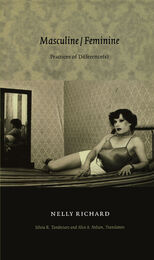 Masculine/Feminine: Practices of Difference(s)
Nelly Richard
Duke University Press, 2004 Nelly Richard is one of the most prominent cultural theorists writing in Latin America today. As a participant in Chile’s neo-avantgarde, Richard worked to expand the possibilities for cultural debate within the constraints imposed by the Pinochet dictatorship (1973–1990), and she has continued to offer incisive commentary about the country’s transition to democracy. Well known as the founder and director of the influential Santiago-based journal Revista de crítica cultural, Richard has been central to the dissemination throughout Latin America of work by key contemporary thinkers, including Néstor García Canclini, Jacques Derrida, Fredric Jameson, and Diamela Eltit. Her own writing provides rigorous considerations of Latin American identity, postmodernism, gender, neoliberalism, and strategies of political and cultural resistance. Richard helped to organize the 1987 International Conference on Latin American Women’s Literature in Santiago, one of the most significant literary events to take place under the Pinochet dictatorship. Published in Chile in 1993, Masculine/Feminine develops some of the key issues brought to the fore during that landmark meeting. Richard theorizes why the feminist movement has been crucial not only to the liberation of women but also to understanding the ways in which power operated under the military regime in Chile. In one of her most widely praised essays, she explores the figure of the transvestite, artistic imagery of which exploded during the Chilean dictatorship. She examines the politics and the aesthetics of this phenomenon, particularly against the background of prostitution and shantytown poverty, and she argues that gay culture works to break down the social demarcations and rigid structures of city life. Masculine/Feminine makes available, for the first time in English, one of Latin America’s most significant works of feminist theory.
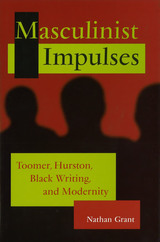 Masculinist Impulses: Toomer, Hurston, Black Writing, and Modernity
Nathan Grant
University of Missouri Press, 2004 In Masculinist Impulses, Nathan Grant begins his analysis of African American texts by focusing on the fragmentation of values of black masculinity—free labor, self-reliance, and responsibility to family and community—as a result of slavery, postbellum disfranchisement, and the ensuing necessity to migrate from the agrarian South to the industrialized North. Through examinations of novels that deal with black male selfhood, Grant demonstrates the ways in which efforts to alleviate the most destructive aspects of racism ultimately reproduced them in the context of the industrialized city.
Grant’s book provides close readings of Jean Toomer (Cane and Natalie Mann) and Zora Neale Hurston (Moses, Man of the Mountain, Seraph of the Suwanee, and Their Eyes Were Watching God), for whom the American South was a crucial locus of the African American experience. Toomer and Hurston were virtually alone among the Harlem Renaissance writers of prose who returned to the South for their literary materials. That return, however, allowed their rediscovery of key black masculine values and charted the northern route of those values in the twentieth century to their compromise and destruction.
Grant then moves on to three more recent writers—John Edgar Wideman, Gloria Naylor, and Toni Morrison—who expanded upon and transformed the themes of Toomer and Hurston. Like Toomer and Hurston, these later authors recognized the need for the political union of black men and women in the effort to realize the goals of equity and justice.
Masculinist Impulses discusses nineteenth- and twentieth-century black masculinity as both a feature and a casualty of modernism. Scholars and students of African American literature will find Grant’s nuanced and creative readings of these key literary texts invaluable.
 Masculinities in the New Testament and Beyond: Collected Essays
Peter-Ben Smit
Amsterdam University Press, 2026 The study of gender in early Christianity has been one of the catalysts for new historical insight into the early Jesus movement and beyond. By focusing on the construction of various kinds of masculinities in early Christian texts, both biblical and extra-biblical, and by showcasing a number of examples of the reception of such texts in the construction and discussion of masculinities, the essays collected in this volume draw attention to a kind of gender that is often in equal measure overlooked as it is influential in the shaping of communities and societies, i.e., masculinities in all their diversity and with their different effects on those embodying them and those encountering them. The volume seeks to contribute to the study of early Christian literature and its reception, to the study of gender in the (Christian) theological tradition, and to gender studies in general.
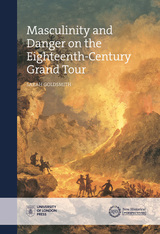 Masculinity and Danger on the Eighteenth-Century Grand Tour
Sarah Goldsmith
University of London Press, 2020 The Grand Tour, a customary trip through Europe undertaken by British nobility and wealthy landed gentry during the seventeenth and eighteenth centuries, played an important role in the formation of contemporary notions of elite masculinity. Through an examination of testimonies written by Grand Tourists, tutors, and their families, Sarah Goldsmith argues that the Grand Tour educated young men in a wide variety of skills, virtues, and vices that extended well beyond polite society.
Goldsmith demonstrates that the Grand Tour was a means of constructing Britain’s next generation of leaders. Influenced by aristocratic concepts of honor and inspired by military-style leadership, elite society viewed experiences of danger and hardship as powerfully transformative and therefore as central to constructing masculinity. Scaling mountains, volcanoes, and glaciers, and even encountering war and disease, Grand Tourists willingly tackled a variety of perils. Through her study of these dangers, Goldsmith offers a bold revision of eighteenth-century elite masculine culture and the critical role the Grand Tour played within it.
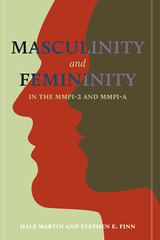 Masculinity and Femininity in the MMPI-2 and MMPI-A
Hale Martin
University of Minnesota Press, 2010 Masculinity and femininity remain among the more confounding constructs in the history of personality psychology and psychological assessment. In spite of years of research and thousands of empirical studies, masculinity and femininity are still so fraught with confusion and political controversy that several prominent psychologists have suggested that the terms be abandoned. In this informative book, Hale Martin and Stephen E. Finn bring clarity to this topic by comprehensively reviewing past research and theory and extensively exploring "masculinity" and "femininity" as they are measured in the widely used MMPI instruments.
Martin and Finn consider the factor structure and correlates of masculinity and femininity in the MMPI in multiple samples. Through their analyses, they are able to address such questions as: Is there such a thing as masculinity/femininity? If so, are masculinity and femininity separate constructs, or are they opposite ends of a bipolar dimension? What are the core aspects of masculinity and femininity? Are they the same for men and women? Do the meanings of masculinity and femininity vary across the human life span and in different cultures? To what extent are masculinity and femininity biologically or socially determined? Can masculinity and femininity be adequately measured by the MMPI-2 and MMPI-A?
This insightful work uses solid empirical methods to clarify significant constructs. It will be an essential resource for researchers in the areas of personality, psychological assessment, and gender studies, as well as for clinicians working with clients who have nontraditional gender identities.
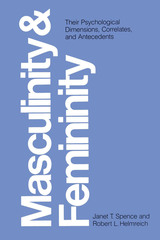 Masculinity and Femininity: Their Psychological Dimensions, Correlates, and Antecedents
By Janet T. Spence and Robert L. Helmreich
University of Texas Press, 1978 Many societies assign sharply distinguished roles to men and women. Personality differences, as well as physical differences, between men and women are used to justify these different sex roles, and women are seen as more emotionally and interpersonally sensitive than men, while men are said to be more competent, achievement oriented, and assertive than women. A widely held view is that not only do men and women differ but that possession of "masculine" characteristics precludes possession of "feminine" characteristics. This bipolar conception has led to the definition of masculinity and femininity as opposites. Acceptance of this idea has caused social scientists and laypersons to consider men and women who possess cross-sex personality characteristics as less emotionally healthy and socially adjusted than those with sex-appropriate traits. Previous research by the authors and others, done almost exclusively with college students, has shown, however, that masculinity and femininity do not relate negatively to each other, thus supporting a dualistic rather than a bipolar conception of these two psychological dimensions. Spence and Helmreich present data showing that the dualistic conception holds for a large number of groups, varying widely in age, geographical location, socioeconomic status, and patterns of interest, whose psychological masculinity and femininity were measured with an objective instrument, the Personality Attributes Questionnaire, devised by the authors. Many individuals are shown to be appropriately sex-typed; that is, men tend to be high in masculinity and low in femininity and women the reverse. However, a substantial number of men and women are androgynous—high in both masculine and feminine characteristics—while some are not high in either. Importantly, the authors find that androgynous individuals display more self-esteem, social competence, and achievement orientation than individuals who are strong in either masculinity or femininity or are not strong in either. One of the major contributions of the work is the development of a new, multifaceted measure of achievement motivation (the Work and Family Orientation Questionnaire), which can be used successfully to predict behavior in both males and females and is related to masculinity and femininity in both sexes. In addition to investigating the correlates of masculinity and femininity, the authors attempt to isolate parental factors that contribute to the development of these characteristics and achievement motivation. The book includes analyses of data from students on their perception of their parents, which enable the authors to examine the influence of parental masculinity and femininity and parental behaviors and child-rearing attitudes on the development of masculinity and femininity and achievement motivation characteristics in their children. The important implications of these findings for theories of sex roles, personality development, and achievement motivation are examined.
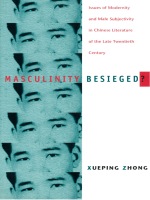 Masculinity Besieged?: Issues of Modernity and Male Subjectivity in Chinese Literature of the Late Twentieth Century
Xueping Zhong
Duke University Press, 2000 In Masculinity Besieged? Xueping Zhong looks at Chinese literature and films produced during the 1980s to examine male subjectivities in contemporary China. Reading through a feminist psychoanalytic lens, Zhong argues that understanding the nature of male subjectivities as portrayed in literature and film is crucial to understanding China’s ongoing quest for modernity.
Before the 1990s onslaught of popular culture decentered the role of intellectuals within the nation, they had come to embody Chinese masculinity during the previous decade. The focus on masculinity in literature had become unprecedented in scale and the desire for “real men” began to permeate Chinese popular culture, making icons out of Rambo and Takakura Ken. Stories by Zhang Xianliang and Liu Heng portraying male anxiety about masculine sexuality are employed by Zhong to show how “marginal” males negotiate their sexual identities in relation to both women and the state. Looking at writers popular among not only the well-educated but also the working and middle classes, she discusses works by Han Shaogong, Yu Hua, and Wang Shuo and examines instances of self-loathing male voices, particularly as they are articulated in Mo Yan’s well-known work Red Sorghum. In her last chapter Zhong examines “roots literature,” which speaks of the desire to create strong men as a part of the effort to create a geopolitically strong Chinese nation. In an afterword, Zhong situates her study in the context of the 1990s.
This book will be welcomed by scholars of Chinese cultural studies, as well as in literary and gender studies.
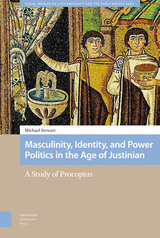 Masculinity, Identity, and Power Politics in the Age of Justinian: A Study of Procopius
Michael Stewart
Amsterdam University Press, 2020 A generation of historians has been captivated by the notorious views on gender found in the mid-sixth century Secret History by the Byzantine historian Procopius of Caesarea. Yet the notable but subtler ways in which gender coloured Procopius' most significant work, the Wars, have received far less attention. This monograph examines how gender shaped the presentation of not only key personalities such as the seminal power-couples Theodora/ Justinian and Antonina/ Belisarius, but also the Persians, Vandals, Goths, Eastern Romans, and Italo-Romans, in both the Wars and the Secret History. By analysing the purpose and rationale behind Procopius' gendered depictions and ethnicizing worldview, this investigation unpicks his knotty agenda. Despite Procopius's reliance on classical antecedents, the gendered discourse that undergirds both texts under investigation must be understood within the broader context of contemporary political debates at a time when control of Italy and North Africa from Constantinople was contested.
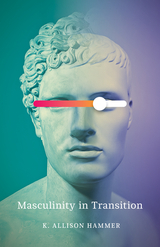 Masculinity in Transition
K. Allison Hammer
University of Minnesota Press, 2023 Locating the roots of toxic masculinity and finding its displacement in unruly culture
Masculinity in Transition analyzes shifting relationships to masculinity in canonical works of twentieth-century literature and film, as well as in twenty-first-century media, performance, and transgender poetics. Focusing on “toxic masculinity,” which has assumed new valence since 2016, K. Allison Hammer traces its roots to a complex set of ideologies embedded in the histories of settler colonialism, racial capitalism, and political fraternity, and finds that while toxic strains of masculinity are mainly associated with straight, white men, trans and queer masculinities can be implicated in these systems of power. Hammer argues, however, that these malignant forms of masculinity are not fixed and can be displaced by “unruly alliances”—texts and relationships that reject the nationalisms and gender politics of white male hegemony and perform an urgently needed reimagining of what it means to be masculine. Locating these unruly alliances in the writings, performances, and films of butch lesbians, gay men, cisgender femmes, and trans and nonbinary individuals, Masculinity in Transition works through an archive of works of performance art, trans poetics, Western films and streaming media, global creative responses to HIV/AIDS, and working-class and “white trash” fictions about labor and unionization. Masculinity in Transition moves the study of masculinity away from an overriding preoccupation with cisnormativity, whiteness, and heteronormativity, and toward a wider and more generative range of embodiments, identifications, and ideologies. Hammer’s bold rethinking of masculinity and its potentially toxic effects lays bare the underlying fragility of normative masculinity. Retail e-book files for this title are screen-reader friendly with images accompanied by short alt text and/or extended descriptions.
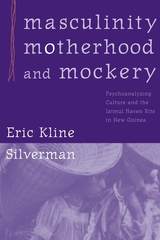 Masculinity, Motherhood, and Mockery: Psychoanalyzing Culture and the Iatmul Naven Rite in New Guinea
Eric Kline Silverman
University of Michigan Press, 2001 Masculinity, Motherhood, and Mockery analyzes the relationship between masculinity and motherhood in an Eastern Iatmul village along the Sepik River in Papua New Guinea. It focuses on a metaphorical dialogue between two countervailing images of the body, dubbed by literary theorist Mikhail Bakhtin as the "moral" and the "grotesque." Eastern Iatmul men in Tambunum village idealize an image of motherhood that is nurturing, sheltering, cleansing, fertile, and chaste--in a word, moral. But men also fear an equally compelling image of motherhood that is defiling, dangerous, orificial, aggressive, and carnal--hence, grotesque. Masculinity in Tambunum is a rejoinder both subtle and strident, both muted and impassioned, to these contrary, embodied images of motherhood.
Throughout this work, Eric Silverman details the dialogics of mothering and manhood throughout Eastern Iatmul culture, including in his analysis cosmology and myth; food- and childraising; architecture and canoes; ethnophysiology and sexuality; shame and hygiene; marriage and kinship; and perhaps most significantly, a ceremonial locus classicus in anthropology: the famous Iatmul naven rite. This book provides the first sustained examination of naven since Bateson, presenting new data and interpretations that are based entirely on original, first-hand ethnographic research.
The sustained engagement with anthropological and psychoanalytic theory coupled with a refreshing examination of a famous and still-enigmatic ritual is sure to make multiple contributions to pressing debates in contemporary anthropology and social theory.
Eric Silverman is Associate Professor of Anthropology, DePauw University.
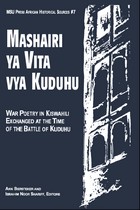 Mashairi ya Vita vya Kuduhu: War Poetry in Kiswahili Exchanged at the Time of the Battle of Kuduhu
Ann Biersteker
Michigan State University Press, 1995 Mashairi Ya Vita Vya Kuduhu is a presentation and discussion of both manuscript and published versions of poems written by Lamu poets around the time of the Battle of Kuduhu. The poetic dialogue studied in this volume has played a significant role in the history of Swahili poetry, and its primary concern is to inform continued work in this area. The poems contained in this work were transmitted and preserved by speakers of Kiswahili and later collected and preserved by scholars. Chapter One contains the edited poems; Chapter Two consists of the translations. Subsequent chapters include accounts of the Battle of Kuduhu, editing and translating practices, and annotated poems and source versions. This work is presented as an example of the importance of research, fieldwork, and the consideration of available versions and alternative styles of presentation in the study of Swahili poetry.
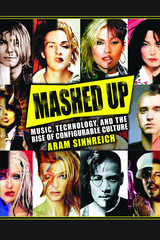 Mashed Up: Music, Technology, and the Rise of Configurable Culture
Aram Sinnreich
University of Massachusetts Press, 2010 From ancient times to the present day, writers and thinkers have remarked on the unique power of music to evoke emotions, signal identity, and bond or divide entire societies, all without the benefit of literal representation. Even if we can't say precisely what our favorite melody means, we know very well what kind of effect it has on us, and on our friends and neighbors.
According to Aram Sinnreich, this power helps to explain why music has so often been regulated in societies around the globe and throughout history. Institutional authorities ranging from dynastic China's "Office to Harmonize Sounds" to today's copyright collecting societies like BMI and ASCAP leverage the rule of law and the power of the market to make sure that some musical forms and practices are allowed and others are prohibited.
Yet, despite the efforts of these powerful regulators, musical cultures consistently devise new and innovative ways to work around institutional regulations. These workarounds often generate new styles and traditions in turn, with effects far beyond the cultural sphere.
Mashed Up chronicles the rise of "configurability," an emerging musical and cultural moment rooted in today's global, networked communications infrastructure. Based on interviews with dozens of prominent DJs, attorneys, and music industry executives, the book argues that today's battles over sampling, file sharing, and the marketability of new styles such as "mash-ups" and "techno" presage social change on a far broader scale.
Specifically, the book suggests the emergence of a new ethic of configurable collectivism; an economic reunion of labor; a renegotiation of the line between public and private; a shift from linear to recursive logic; and a new "DJ consciousness," in which the margins are becoming the new mainstream. Whether these changes are sudden or gradual, violent or peaceful, will depend on whether we heed the lessons of configurability, or continue to police and punish the growing ranks of the mashed up.
Mask Characterization: An Acting Process
Libby Appel
Southern Illinois University Press, 1982 Behind the mask, Appel notes, the student is free to create a personality; paradoxically, because the mask hides the self, it enables the student to probe more deeply into himself. “This book describes, defines, and discusses the mask characterization process, providing the theory behind the exercises and the step-by-step procedure in the organic development of the character from the masks,” Appel notes. The manual is divided into two parts: “The Instructor’s Guide” and “The Actor’s Guide.” There is also an introductory chapter, “The Class Structure,” which explains mask characterization procedures in the classroom, and a sample class schedule may be found in the back of the manual. This book adds a new dimension to actor training and learning. It is essential to aspiring actors seeking new ways to create honest dramatic characterizations.
Mask Improvisation for Actor Training and Performance: The Compelling Image
Sears Eldredge
Northwestern University Press, 1996 Because mask improvisation work is relatively new in American theater training, this book is designed not only to acquaint readers with the theory of mask improvisation but to instruct them in the techniques of method as well.
Featuring dozens of improvisational exercises in the innovative spirit of Viola Spolin, and supplemented with practical appendices on mask design and construction, forms and checklists, and other classroom materials, this book is an invaluable tool for teacher and student alike, as well as compelling reading for anyone interested in acquiring a deeper understanding of masks as agents of transformation, creativity, and performance.
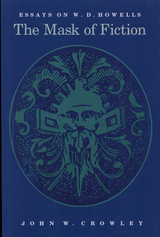 The Mask of Fiction: Essays on W. D. Howells
John W. Crowley
University of Massachusetts Press W. D. Howells (1837-1920) occupies a peculiar position in our current literary history. Situated on the periphery, he is one of whose "marginality" seems, nevertheless, to be a necessary counterpart to the "centrality" of other writers--such as his friends Henry James and mark Twin--who are more securely fixed in the canon. Paradoxically, Howells has been an indispensable man in the middle, linking such binary pairs as East/West, romance/realism, elitism/socialism, patriarchal canon/women writers. This volume brings together nine related essays by John W. Crowley. The first four center respectively on Howells and the Civil War, his attitudes toward women, his friendship with a homosexual writer, and the tragically short life of his daughter Winifred. Crowley's overarching purpose here is to establish Howells as perhaps the representative male writer of his time, within the gender codes of Victorian America. The last five chapters discuss Howell's later fiction, focusing on its intense concern with psychology an psychic phenomena. Crowley not only brings this relatively neglected work more fully into view, but also argues that Howells used the writing of this fiction as a process of psychological self-healing that resembles the self-analysis of Sigmund Freud during the same years.
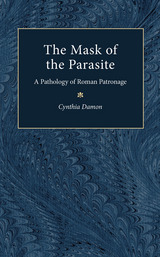 Mask of the Parasite: A Pathology of Roman Patronage
Cynthia Damon
University of Michigan Press, 1997 When Romans applied the term "parasite" to contemporaries in dependent circumstances, or clientes, they were evoking one of the stock characters of ancient Greek comedy. In the Roman world the parasite was moved out of his native genre into the literatures of invective and social criticism, where his Greek origins made him a uniquely useful transmitter of Roman perceptions. Whenever the figure of the parasite is used to mask a person in Roman society, we know that an effort of interpretation is underway. The fit between the mask and its wearer is in the eyes of the beholder, and in Rome the mask seemed to fit people in many different situations: entrepreneurs, tax-farmers, lawyers, female companions, philosophers, and poets. In The Mask of the Parasite, Cynthia Damon maintains that the parasite of Latin literature is a negative reflection of the cliens. In Part One she assembles a composite picture of the comic parasite using as evidence fragments of Greek comedy, works from Greek writers of the imperial period whose works reflect the comic tradition, and the ten complete plays of Roman comedy in which a parasite appears. In parts two and three she examines the ways in which Cicero and the satirists use the figure of the parasite: Cicero in belittling his opponents in court, Horace and Martial in creating a negative foil for the poeta cliens, Juvenal in painting contemporary patron/client relationships as morally and spiritually bankrupt. The Mask of the Parasite is a fascinating study of the intersection of literature and society in ancient Rome. However, neither the parasite nor patronage is confined to the Roman world. Students of classical studies as well as students of literature and cultural studies will find this to be a work of utmost importance in understanding these complex issues of human interaction.
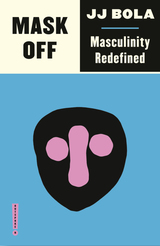 Mask Off: Masculinity Redefined
JJ Bola
Pluto Press, 2019 "A vital addition to books on masculinity. It is opening up conversations, whilst offering guidance towards joyful, emotional, non-violent masculinities"—Bad Form
From Blurred Lines to gang signs, how does society cause toxic masculinity? How do we define masculinity today? Dominating the world around us, seen in deadly gun violence, higher male suicide rates, and the incels on Reddit, masculinity is perceived to be “toxic,” “fragile,” and “in crisis.” What does that mean for society, and how can we understand it?
In Mask Off, JJ Bola exposes masculinity as a performance that men are socially conditioned into. Using examples of non-Western cultural traditions, music, and sport, he shines light on historical narratives around manhood, debunking popular myths along the way. He explores how LGBTQ men, men of color, and male refugees experience masculinity in diverse ways, revealing its fluidity, how it's strengthened and weakened by different political contexts, such as the patriarchy or the far-right, and perceived differently by those around them. Chapters include:
*Real men: Myths of masculinity
*What’s love got to do with it? Love, sex and consent
*This is a man’s world: The politics of masculinity, the masculinity of politics
*If I were a boy: Gender equality and feminism
*Slamdunk at the funk: masculinity and sport
At the heart of love and sex, the political stage, competitive sports, gang culture, and mental health issues, lies masculinity: Mask Off is an urgent call to unravel masculinity and redefine it. "What do our own perceptions of masculinity and the wider cultural norms around it mean for young boys growing up into manhood? What do they mean for young men and older men grappling with a society that encourages them to hold on to the anger that destroys the lives of women as well as the lives of many men?" Those questions and more offer food for thought for every man.
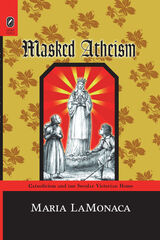 Masked Atheism: Catholicism and the Secular Victorian Home
Maria LaMonaca
Ohio State University Press, 2008 Why did the Victorians hate and fear Roman Catholics so much? This question has long preoccupied literary and cultural scholars alike. Masked Atheism: Catholicism and the Secular Victorian Home by Maria LaMonaca begins with the assumption that anti-Catholicism reveals far more about the Victorians than simple theological disagreements or religious prejudice. An analysis of anti-Catholicism exposes a host of anxieties, contradictions, and controversies dividing Great Britain, the world’s most powerful nation by the mid-nineteenth century. Noting that Catholicism was frequently caricatured by the Victorians as “masked atheism”—that is, heathenism and paganism masquerading as legitimate Christianity—LaMonaca’s study suggests that much anti-Catholic rhetoric in Victorian England was fueled by fears of encroaching secularism and anxieties about the disappearance of God in the modern world. For both male and female writers, Catholicism became a synonym for larger, “ungodly” forces threatening traditional ways of life: industrialization, rising standards of living, and religious skepticism. LaMonaca situates texts by Charlotte Brontë, George Eliot, Christina Rossetti, Elizabeth Barrett Browning, Michael Field, and others against a rich background of discourses about the growing visibility of Anglo and Roman Catholicism in Victorian England. In so doing, she demonstrates the influence of both pro- and anti-Catholic sentiment on constructs of Victorian domesticity, and explores how writers appropriated elements of Catholicism to voice anxieties about the growing secularization of the domestic sphere: a bold challenge to sentimental notions of the home as a “sacred” space. Masked Atheism will contribute a fresh perspective to an ongoing conversation about the significance of Catholicism in Victorian literature and culture.
Masked Gods: Navaho and Pueblo Ceremonialism
Frank Waters
Ohio University Press, 1950 Masked Gods is a vast book, a challenging and profoundly original account of the history, legends, and ceremonialism of the Navajo and Pueblo Indians of the Southwest. Following a brief but vivid history of the two tribes through the centuries of conquest, the book turns inward to the meaning of Native American legends and ritual—Navajo songs, Pueblo dances, Zuni kachina ceremonies. Enduring still, these rituals and ceremonies express a view of life, of man’s place in the creation, which is compared with Taoism and Buddhism—and with the aggressive individualism of the Western world.
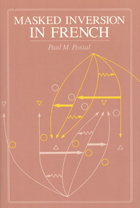 Masked Inversion in French
Paul M. Postal
University of Chicago Press, 1989 In this important work of linguistic analysis, Paul M. Postal addresses a paradigm anomaly in French that has hitherto resisted explanation. A general restriction limiting the form of direct objects in complex infinitival constructions with main verbs like faire fails to hold with certain subordinate verbs, especially connaître. Marshaling extensive evidence, Postal argues that this apparent irregularity is a symptom of a deeper regularity. Rather than being an ordinary transitive complement, the subordinate clause in these cases is actually an Inversion structure, one in which the logical subject demotes to indirect object. However, since this demotion induces no word order change or other direct morphological consequences, the inversion is "masked," and revealed only by several types of apparent anomalies.
This analysis has significant consequences for contemporary syntactic theories. First, the arguments support the view that a sentence's superficial structure cannot be identified with its syntactic structure, even though such an identification is a fundamental assumption of several currently influential grammatical frameworks. Second, even certain theories that do posit abstract aspects of grammatical form fail to allow for the needed Inversion structures. Postal's study supports theories based on the notion of arc and stratification into levels which provide a natural treatment consistent with the factual requirements.
Masked Inversion in French is the first systematic account of this puzzling French syntactic anomaly, and its findings will stimulate research in many areas of natural language grammatical structure.
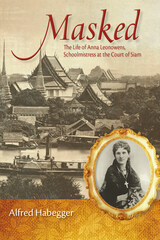 Masked: The Life of Anna Leonowens, Schoolmistress at the Court of Siam
Alfred Habegger
University of Wisconsin Press, 2014 A brave British widow goes to Siam and—by dint of her principled and indomitable character—inspires that despotic nation to abolish slavery and absolute rule: this appealing legend first took shape after the Civil War when Anna Leonowens came to America from Bangkok and succeeded in becoming a celebrity author and lecturer. Three decades after her death, in the 1940s and 1950s, the story would be transformed into a powerful Western myth by Margaret Landon’s best-selling book Anna and the King of Siam and Rodgers and Hammerstein’s musical The King and I.
But who was Leonowens and why did her story take hold? Although it has been known for some time that she was of Anglo-Indian parentage and that her tales about the Siamese court are unreliable, not until now, with the publication of Masked, has there been a deeply researched account of her extraordinary life. Alfred Habegger, an award-winning biographer, draws on the archives of five continents and recent Thai-language scholarship to disclose the complex person behind the mask and the troubling facts behind the myth. He also ponders the curious fit between Leonowens’s compelling fabrications and the New World’s innocent dreams—in particular the dream that democracy can be spread through quick and easy interventions.
Exploring the full historic complexity of what it once meant to pass as white, Masked pays close attention to Leonowens’s midlevel origins in British India, her education at a Bombay charity school for Eurasian children, her material and social milieu in Australia and Singapore, the stresses she endured in Bangkok as a working widow, the latent melancholy that often afflicted her, the problematic aspects of her self-invention, and the welcome she found in America, where a circle of elite New England abolitionists who knew nothing about Southeast Asia gave her their uncritical support. Her embellished story would again capture America’s imagination as World War II ended and a newly interventionist United States looked toward Asia.
Best Books for General Audiences, selected by the American Association of School Librarians
Best Regional Special Interest Boosk, selected by the Public Library Reviewers
 Masking And Power: Carnival And Popular Culture In The Caribbean
Gerard Aching
University of Minnesota Press, 2002 An ambitious reassessment of the political uses of masking. Does the mask reveal more than it conceals? What, this book asks, becomes visible and invisible in the masking practiced in Caribbean cultures-not only in the familiar milieu of the carnival but in political language, social conduct, and cultural expressions that mimic, misrepresent, and mislead? Focusing on masking as a socially significant practice in Caribbean cultures, Gerard Aching’s analysis articulates masking, mimicry, and misrecognition as a means of describing and interrogating strategies of visibility and invisibility in Cuba, Trinidad and Tobago, Martinique, and beyond. Masking and Power uses ethnographic fieldwork, psychoanalysis, and close literary readings to examine encounters between cultural insiders as these locals mask themselves and one another either to counter the social invisibility imposed on them or to maintain their socioeconomic privileges. Aching exposes the ways in which strategies of masking and mimicry, once employed to negotiate subjectivities within colonial regimes, have been appropriated for state purposes and have become, with the arrival of self-government in the islands, the means by which certain privileged locals make a show of national and cultural unity even as they engage in the privatization of popular culture and its public performances.
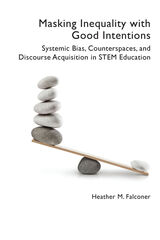 Masking Inequality with Good Intentions: Systemic Bias, Counterspies, and Discourse Acquisition in STEM Education
Heather M. Falconer
University Press of Colorado, 2023 In Masking Inequality with Good Intentions, Heather M. Falconer examines the impact of systemic bias on disciplinary discourse acquisition and identity development by asking “How do the norms and expectations of higher education and STEM, specifically, impact the development of scientific identity and discursive skill?” and “What role do societal markers like race and gender play in the negotiation of identity in STEM learning environments?” Drawing on the experiences and writings of six students from historically underrepresented backgrounds in STEM, each participating in an undergraduate research program, Falconer discusses how programmatic and pedagogical choices can work to either further marginalize students and disrupt their writing and identity development as scientists or create counterspaces—spaces where students can thrive and push back against dominant, oppressive forces. Practical applications for pedagogy, curriculum, and program design are included.
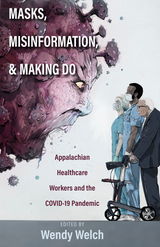 Masks, Misinformation, and Making Do: Appalachian Health-Care Workers and the COVID-19 Pandemic
Wendy Welch
Ohio University Press, 2023 The firsthand pandemic experiences of rural health-care providers—who were already burdened when COVID-19 hit—raise questions about the future of public health and health-care delivery. This volume comprises the COVID-19 pandemic experiences of Appalachian health-care workers, including frontline providers, administrators, and educators. The combined narrative reveals how governmental and corporate policies exacerbated the region’s injustices, stymied response efforts, and increased the death toll. Beginning with an overview of the SARS-CoV-2 virus and its impact on the body, the essays in the book’s first section provide background material and contextualize the subsequent explosion of telemedicine, the pandemic’s impact on medical education, and its relationship to systemic racism and related disparities in mental health treatment. Next, first-person narratives from diverse perspectives recount the pandemic’s layered stresses, including
- the scramble for ventilators, masks, and other personal protective equipment
- the neighbors, friends, and family members who flouted public-health mandates, convinced that COVID-19 was a hoax
- the added burden the virus leveled on patients whose health was already compromised by cancer, diabetes, or addiction
- the acute ways the pandemic’s arrival exacerbated interpersonal and systemic racism that Black and other health-care workers of color bear
- not only the battle against the virus but also the growing suspicion and even physical abuse from patients convinced that doctors and nurses were trying to kill them
These visceral, personal experiences of how Appalachian health-care workers responded to the pandemic amid the nation’s deeply polarized political discourse will shape the historical record of this “unprecedented time” and provide a glimpse into the future of rural medicine. Contributors: Lucas Aidukaitis, Clay Anderson, Tammy Bannister, Alli Delp, Lynn Elliott, Monika Holbein, Laura Hungerford, Nikki King, Brittany Landore, Jeffrey J. LeBoeuf, Sojourner Nightingale, Beth O’Connor, Rakesh Patel, Mildred E. Perreault, Melanie B. Richards, Tara Smith, Kathy Osborne Still, Darla Timbo, Kathy Hsu Wibberly
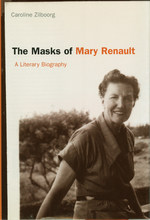 The Masks of Mary Renault: A Literary Biography
Caroline Zilboorg
University of Missouri Press, 2001 Born Eileen Mary Challans in London in 1905, Mary Renault wrote six successful contemporary novels before turning to the historical fiction about ancient Greece for which she is best known. While Renault's novels are still highly regarded, her life and work have never been completely examined. Caroline Zilboorg seeks to remedy this in The Masks of Mary Renault by exploring Renault's identity as a gifted writer and a sexual woman in a society in which neither of these identities was clear or easy. Although Renault's life was anything but ordinary, this fact has often been obscured by her writing. The daughter of a doctor, she grew up comfortably and attended a boarding school in Bristol. She received a degree in English from St. Hugh's College in Oxford in 1928, but she chose not to pursue an academic career. Instead, she decided to attend the Radcliffe Infirmary in Oxford, where she trained to be a nurse. With the outbreak of the Second World War, she was assigned to the Winford Emergency Hospital in Bristol and briefly worked with Dunkirk evacuees. She went on to work in the Radcliffe Infirmary's brain surgery ward and was there until 1945. It was during her nurse's training that Renault met Julie Mullard, who became her lifelong companion. This important lesbian relationship both resolved and posed many problems for Renault, not the least of which was how she was to write about issues at once intensely personal and socially challenging. In 1939, Renault published her first novel under a pseudonym in order to mask her identity. It was a time when she was struggling not only with her vocation (nursing and writing), but also with her sexual identity in the social and moral context of English life during the war. In 1948, Renault left England with Mullard for South Africa and never returned. It was in South Africa that she made the shift from her early contemporary novels of manners to the mature historical novels of Hellenic life. The classical settings allowed Renault to mask material too explosive to deal with directly while simultaneously giving her an "academic" freedom to write about subjects vital to her—among them war, peace, career, women's roles, female and male homosexuality, and bisexuality. Renault's reception complicates an understanding of her achievement, for she has a special status within the academic community, where she is both widely read and little written about. Her interest in sexuality and specifically in homosexuality and bisexuality, in fluid gender roles and identities, warrants a rereading and reevaluation of her work. Eloquently written and extensively researched, The Masks of Mary Renault will be of special value to anyone interested in women's studies or English literature.
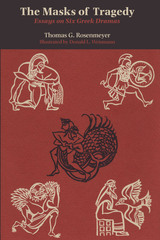 The Masks of Tragedy: Essays on Six Greek Dramas
By Thomas G. Rosenmeyer
University of Texas Press, 1963 "What matters about a play is not the extent to which it is like any other play, but the way in which it is different," writes Thomas G. Rosenmeyer. "This is, I suggest, how the ancient audiences received the performances.... My purpose, then, in writing these essays is twofold: ... to devote enough space to the discussion of each play to allow its special tone and texture to emerge without hindrance and at leisure ... and to include in one collection analyses of plays so different from one another that the accent will come to rest on the variety of the tragic experience rather than on any one narrowly defined norm." Greek tragedy is a vehicle for many different ideas and many different intentions. From the wealth of material that has come down to us the author has chosen six plays for analysis. He reminds us that the plays were written to be seen and heard, and only secondarily to be studied. The listeners expected each play to have a specific objective, and to exhibit its own mood. These the author attempts to recover for us, by listening to what each play, in its own right, has to say. His principal concern is with the tragic diction and the tragic ideas, designed to release certain massive responses in the large theater-going group of ancient Athens. In exploring the characters and the situations of the plays he has chosen, the author transports his reader to the world of fifth-century B.C. Greece, and establishes the relevance of that world to our own experience. The essays are not introductory in nature. No space is given, for instance, to basic information about the playwrights, the history of Greek drama, or the special features of the Attic stage. Yet the book addresses itself to classicists and nonclassicists alike. The outgrowth of a series of lectures to nonspecialists, its particular appeal is to students of literature and the history of Western thought. Parallels are drawn between the writings of the philosophers and the tragedies, and attention is paid to certain popular Greek beliefs that colored the tragic formulations. Ultimately, however, the approach is not historical but critical; it is the author's intention to demonstrate the beauty and the craftsmanship of the plays under discussion.
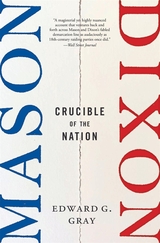 Mason-Dixon: Crucible of the Nation
Edward G. Gray
Harvard University Press “Deeply researched and highly readable.” —Eric Foner, Times Literary Supplement
“A rich history of regional distinctions, especially as they shaped the antebellum Republic.” —Kirkus Reviews
“A fitting testament to a career marked by boundary-crossing curiosity and stalwart service to the historical profession…[a] splendid new history.” —Richard Bell, Register of the Kentucky Historical Society
“Fascinating…does justice to the full sweep and complexity of American history by expertly tracing a century of change across one especially revealing patch of ground.” —James H. Read, American Political Thought
“Erudite, gripping, and highly significant. Gray puts his talents as a historian of the American Revolution and the early republic to excellent use, persuasively arguing that the Mason-Dixon Line is worth seeing as a geopolitical border.” —Kathleen DuVal, author of Independence Lost
Acclaimed scholar Edward Gray offers the first comprehensive history of the Mason-Dixon Line, a border at the center of early American political contestation. Formalized in 1767 to fully and finally demarcate Pennsylvania, Maryland, and Delaware, the Line resolved a longstanding jurisdictional conflict that had provoked bloodshed among colonists and ensnared Lenape and Susquehannock populations. In 1780, Pennsylvania’s Act for the Gradual Abolition of Slavery inaugurated a new phase, as the Line became a boundary between free and slave states and their distinct legal regimes. Then, with the passage of the Fugitive Slave Act in 1850, the Line became a federal instrument to arrest freedom-seeking Blacks. Only with the end of the Civil War did the Line’s significance fade, though it haunted the geography of Jim Crow.
Mason-Dixon tells the gripping story of colonial grandees, Native American diplomats, Quaker abolitionists, fugitives from slavery, capitalist railroad and canal builders, US presidents, Supreme Court justices, and Underground Railroad conductors—all contending with the relentless violence and political discord of a borderland that transformed American history.
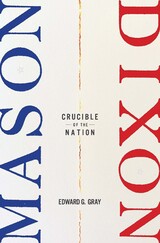 Mason-Dixon: Crucible of the Nation
Edward G. Gray
Harvard University Press, 2023 “A magisterial yet highly nuanced account that ventures back and forth across Mason and Dixon’s fabled demarcation line as audaciously as 18th-century raiding parties once did.”—Harold Holzer, Wall Street Journal
The first comprehensive history of the Mason-Dixon Line—a dramatic story of imperial rivalry and settler-colonial violence, the bonds of slavery and the fight for freedom.
The United States is the product of border dynamics—not just at international frontiers but at the boundary that runs through its first heartland. The story of the Mason-Dixon Line is the story of America’s colonial beginnings, nation building, and conflict over slavery.
Acclaimed historian Edward Gray offers the first comprehensive narrative of the America’s defining border. Formalized in 1767, the Mason-Dixon Line resolved a generations-old dispute that began with the establishment of Pennsylvania in 1681. Rivalry with the Calverts of Maryland—complicated by struggles with Dutch settlers in Delaware, breakneck agricultural development, and the resistance of Lenape and Susquehannock natives—had led to contentious jurisdictional ambiguity, full-scale battles among the colonists, and ethnic slaughter. In 1780, Pennsylvania’s Act for the Gradual Abolition of Slavery inaugurated the next phase in the Line’s history. Proslavery and antislavery sentiments had long coexisted in the Maryland–Pennsylvania borderlands, but now African Americans—enslaved and free—faced a boundary between distinct legal regimes. With the passage of the Fugitive Slave Act in 1850, the Mason-Dixon Line became a federal instrument to arrest the northward flow of freedom-seeking Blacks. Only with the end of the Civil War did the Line’s significance fade, though it continued to haunt African Americans as Jim Crow took hold.
Mason-Dixon tells the gripping story of colonial grandees, Native American diplomats, Quaker abolitionists, fugitives from slavery, capitalist railroad and canal builders, US presidents, Supreme Court justices, and Underground Railroad conductors—all contending with the relentless violence and political discord of a borderland that was a transformative force in American history.
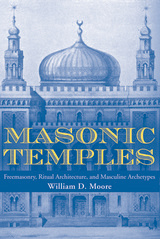 Masonic Temples: Freemasonry, Ritual Architecture, and Masculine Archetypes
William D. Moore
University of Tennessee Press, 2014 In Masonic Temples, William D. Moore introduces readers to the structures American Freemasons erected over the sixty-year period from 1870 to 1930, when these temples became a ubiquitous feature of the American landscape. As representations of King Solomon’s temple in ancient Jerusalem erected in almost every American town and city, Masonic temples provided specially designed spaces for the enactment of this influential fraternity’s secret rituals. Using New York State as a case study, Moore not only analyzes the design and construction of Masonic structures and provides their historical context, but he also links the temples to American concepts of masculinity during this period of profound economic and social transformation. By examining edifices previously overlooked by architectural and social historians, Moore decodes the design and social function of Masonic architecture and offers compelling new insights into the construction of American masculinity. Four distinct sets of Masonic ritual spaces—the Masonic lodge room, the armory and drill room of the Knights Templar, the Scottish Rite Cathedral, and the Shriners’ mosque – form the central focus of this volume. Moore argues that these spaces and their accompanying ceremonies communicated four alternative masculine archetypes to American Freemasons—the heroic artisan, the holy warrior, the adept or wise man, and the frivolous jester or fool. Although not a Freemason, Moore draws from his experience as director of the Chancellor Robert R Livingston Masonic Library in New York City, where heutilized sources previously inaccessible to scholars. His work should prove valuable to readers with interests in vernacular architecture, material culture, American studies, architectural and social history, Freemasonry, and voluntary associations.
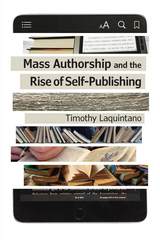 Mass Authorship and the Rise of Self-Publishing
Timothy Laquintano
University of Iowa Press, 2016 In the last two decades, digital technologies have made it possible for anyone with a computer and an Internet connection to rapidly and inexpensively self-publish a book. Once a stigmatized niche activity, self-publishing has grown explosively. Hobbyists and professionals alike have produced millions of books, circulating them through e-readers and the web. What does this new flood of books mean for publishing, authors, and readers? Some lament the rise of self-publishing because it tramples the gates and gatekeepers who once reserved publication for those who met professional standards. Others tout authors’ new freedom from the narrow-minded exclusivity of traditional publishing. Critics mourn the death of the author; fans celebrate the democratization of authorship.
Drawing on eight years of research and interviews with more than eighty self-published writers, Mass Authorship avoids the polemics, instead showing how writers are actually thinking about and dealing with this brave new world. Timothy Laquintano compares the experiences of self-publishing authors in three distinct genres—poker strategy guides, memoirs, and romance novels—as well as those of writers whose self-published works hit major bestseller lists. He finds that the significance of self-publishing and the challenge it presents to traditional publishing depend on the aims of authors, the desires of their readers, the affordances of their platforms, and the business plans of the companies that provide those platforms.
In drawing a nuanced portrait of self-publishing authors today, Laquintano answers some of the most pressing questions about what it means to publish in the twenty-first century: How do writers establish credibility in an environment with no editors to judge quality? How do authors police their copyrights online without recourse to the law? How do they experience Amazon as a publishing platform? And how do they find an audience when, it sometimes seems, there are more writers than readers?
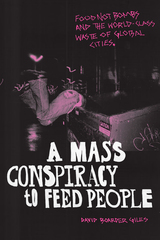 A Mass Conspiracy to Feed People: Food Not Bombs and the World-Class Waste of Global Cities
David Boarder Giles
Duke University Press, 2021 In A Mass Conspiracy to Feed People, David Boarder Giles explores the ways in which capitalism simultaneously manufactures waste and scarcity. Illustrating how communities of marginalized people and discarded things gather and cultivate political possibilities, Giles documents the work of Food Not Bombs (FNB), a global movement of grassroots soup kitchens that recover wasted grocery surpluses and redistribute them to those in need. He explores FNB's urban contexts: the global cities in which late-capitalist economies and unsustainable consumption precipitate excess, inequality, food waste, and hunger. Beginning in urban dumpsters, Giles traces the logic by which perfectly edible commodities are nonetheless thrown out—an act that manufactures food scarcity—to the social order of “world-class” cities, the pathways of discarded food as it circulates through the FNB kitchen, and the anticapitalist political movements the kitchen represents. Describing the mutual entanglement of global capitalism and anticapitalist transgression, Giles captures those emergent forms of generosity, solidarity, and resistance that spring from the global city's marginalized residents.
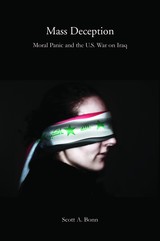 Mass Deception: Moral Panic and the U.S. War on Iraq
Scott A. Bonn
Rutgers University Press, 2010 The attacks of 9/11 led to a war on Iraq, although there was neither tangible evidence that the nation's leader, Saddam Hussein, was linked to Osama bin Laden nor proof of weapons of mass destruction. Why, then, did the Iraq war garner so much acceptance in the United States during its primary stages?
Mass Deception argues that the George W. Bush administration manufactured public support for the war on Iraq. Scott A. Bonn introduces a unique, integrated, and interdisciplinary theory called "critical communication" to explain how and why political elites and the news media periodically create public panics that benefit both parties. Using quantitative analysis of public opinion polls and presidential rhetoric pre- and post-9/11 in the news media, Bonn applies the moral panic concept to the Iraq war. He critiques the war and occupation of Iraq as violations of domestic and international law. Finally, Mass Deception connects propaganda and distortion efforts by the Bush administration to more general theories of elite deviance and state crime.
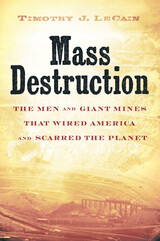 Mass Destruction: The Men and Giant Mines That Wired America and Scarred the Planet
Timothy J. LeCain
Rutgers University Press, 2009 The place: The steep mountains outside Salt Lake City. The time: The first decade of the twentieth century. The man: Daniel Jackling, a young metallurgical engineer. The goal: A bold new technology that could provide billions of pounds of cheap copper for a rapidly electrifying America. The result: Bingham's enormous "Glory Hole," the first large-scale open-pit copper mine, an enormous chasm in the earth and one of the largest humanmade artifacts on the planet. Mass Destruction is the compelling story of Jackling and the development of open-pit hard rock mining, its role in the wiring of an electrified America, as well its devastating environmental consequences. Mass destruction mining soon spread around the nation and the globe, providing raw materials essential to the mass production and mass consumption that increasingly defined the emerging "American way of life." At the dawn of the last century, Jackling's open pit replaced immense but constricted underground mines that probed nearly a mile beneath the earth, to become the ultimate symbol of the modern faith that science and technology could overcome all natural limits. A new culture of mass destruction emerged that promised nearly infinite supplies not only of copper, but also of coal, timber, fish, and other natural resources. But, what were the consequences? Timothy J. LeCain deftly analyzes how open-pit mining continues to affect the environment in its ongoing devastation of nature and commodification of the physical world. The nation's largest toxic Superfund site would be one effect, as well as other types of environmental dead zones around the globe. Yet today, as the world's population races toward American levels of resource consumption, truly viable alternatives to the technology of mass destruction have not yet emerged.
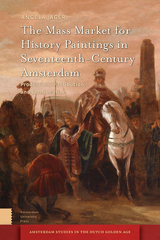 The Mass Market for History Paintings in Seventeenth-Century Amsterdam: Production, Distribution, and Consumption
Angela Jager
Amsterdam University Press, 2021 Millions of paintings were produced in the Dutch Republic. The works that we know and see in museums today constitute only the tip of the iceberg — the top-quality part. But what else was painted? This book explores the low-quality end of the seventeenth-century art market and outlines the significance of that production in the genre of history paintings, which in traditional art historical studies, is usually linked to high prices, famous painters, and elite buyers. Angela Jager analyses the producers, suppliers, and consumers active in this segment to gain insight into this enormous market for cheap history paintings. What did the supply consist of in terms of quantity, quality, price, and subject? Who produced all these works and which production methods did these painters employ? Who distributed these paintings, to whom, and which strategies were used to market them? Who bought these paintings, and why?
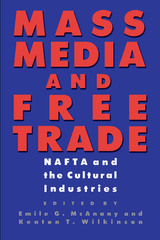 Mass Media and Free Trade: NAFTA and the Cultural Industries
Edited by Emile G. McAnany and Kenton T. Wilkinson
University of Texas Press, 1997 As United States television programs, movies, music, and other cultural products make their way around the globe, a vigorous debate over "cultural imperialism" is growing in many countries. This book brings together experts in economics, sociology, anthropology, the humanities, and communications to explore what effects the North American Free Trade Agreement will have on the flow of cultural products among Mexico, the United States, and Canada. After an overview of free trade and the cultural industries, the book covers the following topics: dominance and resistance, cultural trade and identity in relation to Mexico and to French Canada, and intellectual property rights. Based on present trends, the contributors predict that there will be a steadily increasing flow of cultural products from the United States to its neighbors. This book grew out of a 1994 conference that brought together leaders of the cultural industries, policy makers, and scholars. It represents state-of-the-art thinking about the global influence of U.S. cultural industries.
Mass of the Forgotten
James Tolan
Autumn House Press, 2013 James Tolan's debut full-length collection exhibits eloquent and direct language to explore family trauma and personal memory. Tolan has a truly unique voice and his poems offer readers something they won't find elsewhere.
 The Mass Ornament: Weimar Essays
Siegfried Kracauer
Harvard University Press, 1995 Siegfried Kracauer was one of the twentieth century’s most brilliant cultural critics, a daring and prolific scholar, and an incisive theorist of film. In this volume his finest writings on modern society make their long-awaited appearance in English.
This book is a celebration of the masses—their tastes, amusements, and everyday lives. Taking up themes of modernity, such as isolation and alienation, urban culture, and the relation between the group and the individual, Kracauer explores a kaleidoscope of topics: shopping arcades, the cinema, bestsellers and their readers, photography, dance, hotel lobbies, Kafka, the Bible, and boredom. For Kracauer, the most revelatory facets of modern life in the West lie on the surface, in the ephemeral and the marginal. Of special fascination to him is the United States, where he eventually settled after fleeing Germany and whose culture he sees as defined almost exclusively by “the ostentatious display of surface.”
With these essays, written in the 1920s and early 1930s and edited by the author in 1963, Kracauer was the first to demonstrate that studying the everyday world of the masses can bring great rewards. The Mass Ornament today remains a refreshing tribute to popular culture, and its impressively interdisciplinary essays continue to shed light not only on Kracauer’s later work but also on the ideas of the Frankfurt School, the genealogy of film theory and cultural studies, Weimar cultural politics, and, not least, the exigencies of intellectual exile.
In his introduction, Thomas Levin situates Kracauer in a turbulent age, illuminates the forces that influenced him—including his friendships with Walter Benjamin, Theodor Adorno, and other Weimar intellectuals—and provides the context necessary for understanding his ideas. Until now, Kracauer has been known primarily for his writings on the cinema. This volume brings us the full scope of his gifts as one of the most wide-ranging and penetrating interpreters of modern life.
 Mass Performance: Systems and Citizens
Kimberly Jannarone
University of Michigan Press, 2025 Mass Performance: Systems and Citizens examines mass performance systems from the first major festival of the French Revolution through the democratic and socialist movements of the nationalizing nineteenth and twentieth centuries in Europe, to totalitarian communist and socialist regimes in the twentieth century, ending with contemporary North Korea. While other scholars have studied specific mass performances, this study synthesizes the phenomenon across centuries and countries, focusing on its systemization. Modern nations defining or redefining their identities not only organized mass performances, but also planned to make those performances a permanent component of nationhood. Kimberly Jannarone reveals that mass performance systems, including synchronized gymnastics to choreographed rallies, encapsulate ideals and debates within emerging nations about the relationship of citizens to each other and to their leaders, playing a generative and reflective role in the culture and politics of the modern era. Mass Performance analyzes the specifics of performance choreography and design, the organizational planning and thinking behind the systems, the material circumstances of each system’s emergence, and the broader intellectual milieu in which they developed.
Although not a comprehensive study of such events, Jannarone’s analysis of the selected mass performance systems yields new theoretical perspectives on these phenomena, a central focus of her study being how political leaders find ways to create a physically coordinated mass body politic, even during times of hardship and war. By interpreting and historicizing mass assemblies of bodies, this study analyzes the choreographies and organizations that brought thousands of people together as an ensemble and kept them together in meaning-making motion.
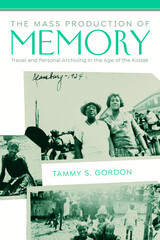 The Mass Production of Memory: Travel and Personal Archiving in the Age of the Kodak
Tammy S. Gordon
University of Massachusetts Press, 2020 In 1888, the Eastman Dry Plate and Film Company offered the first portable camera that allowed users to conveniently take photos, using leisure travel as a primary marketing feature to promote it. The combination of portability, ease of use, and mass advertising fed into a national trend of popular photography that drew on Americans' increasing mobility and leisure time. The Kodak Company and the first generation of tourist photographers established new standards for personal archiving that amplified the individual's role in authoring the national narrative. But not everyone had equal access to travel and tourism, and many members of the African American, Native American, and gay and lesbian communities used the camera to counter the racism, homophobia, and classism that shaped public spaces.
In this groundbreaking history, Tammy S. Gordon tells the story of the camera's emerging centrality in leisure travel across the late nineteenth and early twentieth centuries and its role in “the mass production of memory,” a process in which users crafted a visual archive attesting to their experiences, values, and circumstances, setting the stage for the customizable visual culture of the digital age.
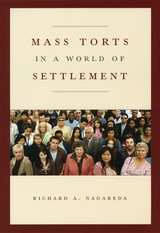 Mass Torts in a World of Settlement
Richard A. Nagareda
University of Chicago Press, 2007 The traditional definition of torts involves bizarre, idiosyncratic events where a single plaintiff with a physical impairment sues the specific defendant he believes to have wrongfully caused that malady. Yet public attention has focused increasingly on mass personal-injury lawsuits over asbestos, cigarettes, guns, the diet drug fen-phen, breast implants, and, most recently, Vioxx. Richard A. Nagareda’s Mass Torts in a World of Settlement is the first attempt to analyze the lawyer’s role in this world of high-stakes, multibillion-dollar litigation.
These mass settlements, Nagareda argues, have transformed the legal system so acutely that rival teams of lawyers operate as sophisticated governing powers rather than litigators. His controversial solution is the replacement of the existing tort system with a private administrative framework to address both current and future claims. This book is a must-read for concerned citizens, policymakers, lawyers, investors, and executives grappling with the changing face of mass torts.
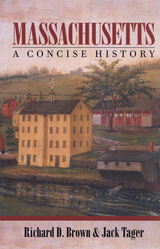 Massachusetts: A Concise History
Richard D. Brown
University of Massachusetts Press, 2000 From the moment the first English colonists landed on the shores of Plymouth Bay, the experiences of the people of Massachusetts have been emblematic of larger themes in American history. The story of the first Pilgrim thanksgiving is commemorated as a national holiday, while the Boston Tea Party and Paul Revere's ride have passed into the national mythology. Even the grimmer aspects of the American experience—Indian warfare and the conquest of an ever expanding frontier—were part of the early history of Massachusetts. In this book, Richard D. Brown and Jack Tager survey the rich heritage of this distinctive, and distinctly American, place, showing how it has long exerted an influence disproportionate to its size. A seedbed of revolt against British colonial rule, Massachusetts has supplied the nation with a long line of political leaders—from Samuel and John Adams to William Lloyd Garrison and Lucy Stone to John, Robert, and Edward Kennedy. Its early textile mills helped shape the industrial revolution, while its experiences with urbanization, immigration, ethnic conflict, and labor strife reflected the growth of the national economy. In the twentieth century, the state continued to lead the country through a series of wrenching economic changes as it moved from the production of goods to the provision of services, eventually becoming a center of the high-tech revolution in telecommunications. If there is one common theme in the Bay State's history, Brown and Tager make clear, it is the capacity to adapt to change. In part this trait can be attributed to the state's unique blend of resources, including its many distinguished colleges and universities. But it can also be credited to the people themselves, who have created a singular sense of place by reconciling claims of tradition with the possibilities of innovation. This book tells their story.
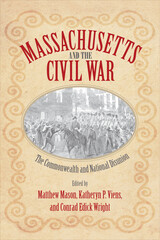 Massachusetts and the Civil War: The Commonwealth and National Disunion
Matthew Mason
University of Massachusetts Press, 2015 All states are not created equal, at least not when it comes to their influence on American history. That assumption underlies Massachusetts and the Civil War. The volume's ten essays coalesce around the national significance of Massachusetts through the Civil War era, the ways in which the commonwealth reflected and even modeled the Union's precarious but real wartime unification, and the Bay State's postwar return to the schisms that predated the war. Rather than attempting to summarize every aspect of the state's contribution to the wartime Union, the collection focuses on what was distinctive about its influence during the great crisis of national unity.
In the first section, "The Opposition to Slavery," essays by John Stauffer, Dean Grodzins, Peter Wirzbicki, and Richard S. Newman demonstrate the central role Massachusetts played in the rise of both the antislavery movement and abolitionism. They show how slavery's foes united, planned, and understood their cause, and how they envisioned a postwar nation free of servitude. In the second section, "The War Years," Matthew Mason, Carol Bundy, and Ronald J. Zboray and Mary Saracino Zboray investigate how the exigencies of war unified the commonwealth across party lines and over the distance between home and the front. In the final section, "Reconciliation," Sarah J. Purcell, Amy Morsman, and Kanisorn Wongsrichanalai probe postwar efforts to recover from the war's profound disruptions.
Massachusetts People and Politics, 1919–1933
J. Joseph Huthmacher
Harvard University Press The transformation of Massachusetts from a Republican stronghold into an essentially Democratic state took place in the 1920s; the story of the process illuminates American political history. The author traces influences that changed Massachusetts from the state of Calvin Coolidge and the elder Lodge into that of John F. Kennedy and Foster Furcolo.
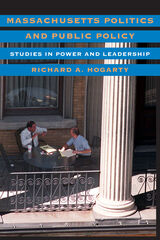 Massachusetts Politics and Public Policy: Studies in Power and Leadership
Richard A. Hogarty
University of Massachusetts Press, 2002 Second only to the Red Sox as a major league sport in Massachusetts is hardball politics as it is played at the State House on Beacon Hill. Drawing on over thirty years as a participant-observer, teacher, and commentator, Richard A. Hogarty provides an inside view of the Bay State's political arena, including the workings of the executive, legislative, and judicial branches, as well as the administrative bureaucracy.
Hogarty examines both the process of policymaking and the complexities of on-the-ground implementation, identifying the various participants and their roles and strategies. He describes power struggles that are entangled in intricate webs of personal and political relationships, and explores their historical antecedents.
Based on an extensive review of newspaper and media accounts, a survey of the surprisingly scanty professional literature, a close scrutiny of public documents, and dozens of personal interviews, the book addresses such topics as the delivery of mental health services, urban transportation, environmental protection, public safety, welfare, corrections, the death penalty, public higher education, ethnic politics, and state ethics reform. Hogarty analyzes the shifting problems of accountability that arise when public services are provided by a variety of political actors and organizations with a wide range of ideological motivations and social and cultural commitments.
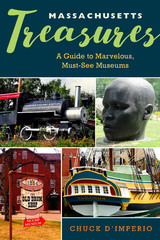 Massachusetts Treasures: A Guide to Marvelous, Must-See Museums
Chuck D'Imperio
University of Massachusetts Press, 2018 Well known for its world-renowned art museums—from the Clark Art Institute in Williamstown to the Museum of Fine Arts in Boston—Massachusetts is also home to numerous institutions with more eclectic collections and, oftentimes, lower profiles. These include Mansfield's National Black Doll Museum of History and Culture, Watertown's Plumbing Museum, and Granville's Noble and Cooley Center for Historic Preservation.
In Massachusetts Treasures, Chuck D'Imperio explores more than forty museums scattered throughout the Bay State, from Cape Cod to the Berkshires. Many—but not all—might be considered “offbeat,” and each and every one is enchanting. Through personal visits and interviews with founders and directors, D'Imperio offers an inside glimpse into some of the Commonwealth's most unique museums, providing a valuable guide for road warriors and history buffs discovering Massachusetts either for the first or the tenth time.
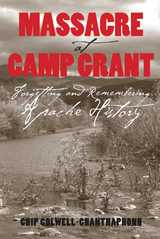 Massacre at Camp Grant: Forgetting and Remembering Apache History
Chip Colwell-Chanthaphonh
University of Arizona Press, 2007 Winner of a National Council on Public History Book Award
On April 30, 1871, an unlikely group of Anglo-Americans, Mexican Americans, and Tohono O’odham Indians massacred more than a hundred Apache men, women, and children who had surrendered to the U.S. Army at Camp Grant, near Tucson, Arizona. Thirty or more Apache children were stolen and either kept in Tucson homes or sold into slavery in Mexico. Planned and perpetrated by some of the most prominent men in Arizona’s territorial era, this organized slaughter has become a kind of “phantom history” lurking beneath the Southwest’s official history, strangely present and absent at the same time.
Seeking to uncover the mislaid past, this powerful book begins by listening to those voices in the historical record that have long been silenced and disregarded. Massacre at Camp Grant fashions a multivocal narrative, interweaving the documentary record, Apache narratives, historical texts, and ethnographic research to provide new insights into the atrocity. Thus drawing from a range of sources, it demonstrates the ways in which painful histories continue to live on in the collective memories of the communities in which they occurred.
Chip Colwell-Chanthaphonh begins with the premise that every account of the past is suffused with cultural, historical, and political characteristics. By paying attention to all of these aspects of a contested event, he provides a nuanced interpretation of the cultural forces behind the massacre, illuminates how history becomes an instrument of politics, and contemplates why we must study events we might prefer to forget.
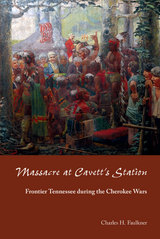 Massacre at Cavett's Station: Frontier Tennessee during the Cherokee Wars
Charles H. Faulkner
University of Tennessee Press, 2013 In the late 1700s, as white settlers spilled across the Appalachian Mountains, claiming Cherokee and Creek lands for their own, tensions between Native Americans and pioneers reached a boiling point. Land disputes stemming from the 1791 Treaty of Holston went unresolved, and Knoxville settlers attacked a Cherokee negotiating party led by Chief Hanging Maw resulting in the wounding of the chief and his wife and the death of several Indians. In retaliation, on September 25, 1793, nearly one thousand Cherokee and Creek warriors descended undetected on Knoxville to destroy this frontier town. However, feeling they had been discovered, the Indians focused their rage on Cavett’s Station, a fortified farmstead of Alexander Cavett and his family located in what is now west Knox County. Violating a truce, the war party murdered thirteen men, women, and children, ensuring the story’s status in Tennessee lore.
In Massacre at Cavett’s Station, noted archaeologist and Tennessee historian Charles Faulkner reveals the true story of the massacre and its aftermath, separating historical fact from pervasive legend. In doing so, Faulkner focuses on the interplay of such early Tennessee stalwarts as John Sevier, James White, and William Blount, and the role each played in the white settlement of east Tennessee while drawing the ire of the Cherokee who continued to lose their homeland in questionable treaties. That enmity produced some of history’s notable Cherokee war chiefs including Doublehead, Dragging Canoe, and the notorious Bob Benge, born to a European trader and Cherokee mother, whose red hair and command of English gave him a distinct double identity. But this conflict between the Cherokee and the settlers also produced peace-seeking chiefs such as Hanging Maw and Corn Tassel who helped broker peace on the Tennessee frontier by the end of the 18th century. After only three decades of peaceful co-existence with their white neighbors, the now democratic Cherokee Nation was betrayed and lost the remainder of their homeland in the Trail of Tears.
Faulkner combines careful historical research with meticulous archaeological excavations conducted in developed areas of the west Knoxville suburbs to illuminate what happened on that fateful day in 1793. As a result, he answers significant questions about the massacre and seeks to discover the genealogy of the Cavetts and if any family members survived the attack. This book is an important contribution to the study of frontier history and a long-overdue analysis of one of East Tennessee’s well-known legends.
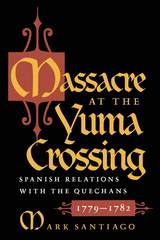 Massacre at the Yuma Crossing: Spanish Relations with the Quechans, 1779-1782
Mark Santiago
University of Arizona Press, 1998 The quiet of the dawn was rent by the screams of war. Scores, perhaps hundreds, of Quechan and Mohave warriors leaped from concealment, rushing the plaza from all sides. Painted for battle and brandishing lances, bows, and war clubs, the Indians killed every Spaniard they could catch.
The route from the Spanish presidial settlements in upper Sonora to the Colorado River was called the Camino del Diablo, the "Road of the Devil." Running through the harshest of deserts, this route was the only way for the Spanish to transport goods overland to their settlements in California. At the end of the route lay the only passable part of the lower Colorado, and the people who lived around the river, the Yumas or Quechans, initially joined into a peaceful union with the Spanish. When the relationship soured and the Yumas revolted in 1781, it essentially ended Spanish settlement in the area, dashed the dreams of the mission builders, and limited Spanish expansion into California and beyond.
In Massacre at the Yuma Crossing, Mark Santiago introduces us to the important and colorful actors involved in the dramatic revolt of 1781: Padre Francisco Garcés, who discovered a path from Sonora to California, made contact with the Yumas and eventually became their priest; Salvador Palma, the informal leader of the Yuman people, whose decision to negotiate with the Spanish earned him a reputation as a peacebuilder in the region, which eventually caused his downfall; and Teodoro de Croix, the Spanish commandant-general, who, breaking with traditional settlement practice, established two pueblos among the Quechans without an adequate garrison or mission, thereby leaving the settlers without any sort of defense when the revolt finally took place.
Massacre at the Yuma Crossing not only tells the story of the Yuma Massacre with new details but also gives the reader an understanding of the pressing questions debated in the Spanish Empire at the time: What was the efficacy of the presidios? How extensive should the power of the Catholic mission priests be? And what would be the future of Spain in North America?
Massacre of the Innocents
Bin Ramke
University of Iowa Press, 1995 Massacre of the Innocents is the work of a secular poet who admires the basic texts—the angry qualities of fairytales equally along with the humorous virtues of sacred scriptures. Speaking with the voice of mature accomplishments, Ramke's poems do not struggle for their words but release them from a near-inexhaustible source. As Ramke has said, “Poems are like children and have minds and manners of their own, luckily beyond the control of parents and poets.” These poems talk back—and they talk to each other. By stripping away the distractions of received meaning from the words he uses, Ramke makes necessary connections between reader and poem that can freshen meaning—make it new—as is often claimed for poetry but seldom achieved so well as in his work.
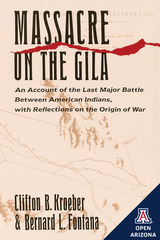 Massacre on the Gila: An Account of the Last Major Battle Between American Indians, with Reflections on the Origin of War
Clifton B. Kroeber
University of Arizona Press, 1986 "The careful reconstruction of the September 1, 1857 battle at Maricopa Wells, combined with the thorough and well-written summary of available information on patterns of regional conflict, makes this book a valuable contribution to the ethnohistory of the middle Gila and Lower Colorado River area." —American Anthropologist
"Rarely do the skills of historians and anthropologists mesh so admirably." —Western Historical Quarterly
"Kroeber and Fontana are meticulous professionals. Their study of this neglected slice of Southwestern history deserves applause." —Evan S. Connell, Los Angeles Times Book Review
"A rich feast for the curious and theorist alike." —Pacific Historical Review
"Kroeber and Fontana describe a little-known event, provide an effective analysis of the cultures of Indian groups in southwestern Arizona, and attempt to understand the broader causes of warfare. The result is an interesting and provocative study." —Journal of American History
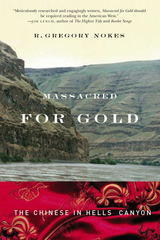 Massacred for Gold: The Chinese in Hells Canyon
R. Gregory Nokes
Oregon State University Press, 2009 In 1887, more than 30 Chinese gold miners were massacred on the Oregon side of Hells Canyon, the deepest canyon in North America. Massacred for Gold, the first authoritative account of the unsolved crime—one of the worst of the many crimes committed by whites against Chinese laborers in the American West—unearths the evidence that points to an improbable gang of rustlers and schoolboys, one only 15, as the killers. The crime was discovered weeks after it happened, but no charges were brought for nearly a year, when gang member Frank Vaughan, son of a well-known settler family, confessed and turned state’s evidence. Six men and boys, all from northeastern Oregon’s remote Wallowa country, were charged—but three fled, and the others were found innocent by a jury that a witness admitted had little interest in convicting anyone. A cover-up followed, and the crime was all but forgotten for the next 100 years, until a county clerk found hidden records in an unused safe. In bringing this story out of the shadows, Nokes examines the once-substantial presence of Chinese laborers in the interior Pacific Northwest, describing why they came, how their efforts contributed to the region’s development, and how too often mistreatment and abuse were their only reward.
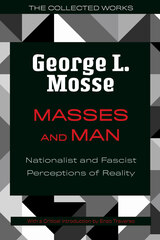 Masses and Man: Nationalist and Fascist Perceptions of Reality
George L. Mosse
University of Wisconsin Press, 2024 In fourteen essays that speak to the full breadth of George L. Mosse’s intellectual horizons and scholarly legacy, Masses and Man explores radical nationalism, fascism, and Jewish modernity in twentieth-century Europe. Breaking from the conventions of historical analysis, Mosse shows that “secular religions” like fascism cannot be understood only as the products of socioeconomic or intellectual histories but rather must be approached first and foremost as cultural phenomena.
Masses and Man comprises three parts. The first lays out a cultural history of nationalism, essentially the first of its kind, emphasizing the importance of sacred expressions like myths, symbols, and rituals as appropriated in a political context. The second zeroes in on fascism’s most dramatic irruptions in European history in the rise of Italian Fascism and the Nazi Party in Germany, elucidating these as not just political movements but also cultural and even aesthetic ones. The third part considers nationalism and fascism from the particular standpoint of German Jews.
Taken in full, the volume offers an eloquent summation of Mosse’s groundbreaking insights into European nationalism, fascism, and Jewish history in the twentieth century. A new critical introduction by Enzo Traverso helpfully situates Mosse’s work in context and exposes the many ways in which Masses and Man, first published in 1980, remains relevant today.
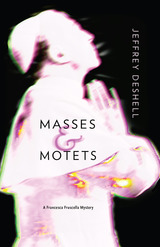 Masses and Motets: A Francesca Fruscella Mystery
Jeffrey DeShell
University of Alabama Press, 2019 A crime novel loosely based on the masses and songs of the 17th century Flemish composer Pierre de la Rue
Masses and Motets is a tale composed of four basic interwoven threads, corresponding to the four-part choral writing of Pierre de la Rue’s service music. The first thread comes from the diaries of a recently murdered priest, Father Andrea Vidal, former secretary to the notorious Father Marcial Maciel. The second thread is the mystery story, a police procedural focusing on the efforts of Denver detective Francesca Fruscella to solve the murder and retrieve Vidal’s diary. The third strand is the story of Father Signelli, a priest sent from the Vatican to “fix” the murder. And the fourth strand explores the best and worst of Catholic culture: art and music created by Catholic artists and sexual abuse by Catholic priests.
Vidal’s narrative is the story of a priest who systematically, sincerely, and hopefully tries to destroy his very self through sex, drinking, and drugs in order to get closer to God. Fruscella’s story is that of a middle-aged, female detective trying to solve a ghastly murder while constantly battling the sexism of the Catholic Church. Signelli’s tale is that of an older career priest who, in doing the bidding of his superiors to fix problems that threaten the order of the Church, has perhaps compromised his own soul. By no means a simple narrative of wicked priests, this is a story of men who desperately want to believe, as well as a story of what this belief might shelter and cost.
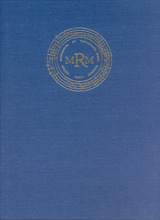 Masses for the Sistine Chapel: Vatican City, Biblioteca Aposotlica Vaticana, Cappella Sistina, MS 14
Edited and with an Introduction by Richard Sherr
University of Chicago Press, 2010 Donated in the late fifteenth century to the papal choir, the musical manuscript Cappella Sistina14 reflects a new style of mass composition used by some of the era’s most noted composers. Masses for the Sistine Chapel makes the complete contents of the Cappella Sistina14—held in the Vatican Library—available for the first time. Featuring fifteen masses and four mass fragments, this volume includes works by such composers as Guillaume Du Fay, Johannes Ockeghem, and Antoine Busnoys. In a comprehensive introduction and critical commentary on each work, Richard Sherr places the choirbook in its historical context, describing its physical makeup as well as the repertory. Sherr’s critical edition of this celebrated manuscript finally provides the insight necessary to inform future performances and recordings of its influential contents.
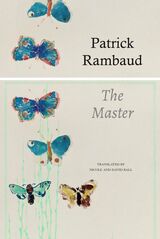 The Master
Patrick Rambaud
Seagull Books, 2023 The extraordinary life of Zhuang Zhou sits halfway between fable and philosophy.
“It was twenty-five centuries ago in the land of Song, between the Yellow River and the River Huai: Zhuang Zhou was born without a cry with his eyes wide open.”
Welcome to China in the fifth century BCE, a colorful, violent, unstable world into which Zhuang is born. Here royals raise huge armies, constantly waging wars against one another. They have slaves, concubines. Gold is everywhere. And so is hunger. Born rich and entitled, Zhuang learns to refuse any official function. His travels bring him closer to ordinary people, from whom he learns how to live a simple and useful life. This is how he will become one of the greatest Chinese philosophers who gave his name to his legendary book, the Zhuangzi, one of the two foundational texts of Taoism—a magnificent procession of lively stories in which we meet dwarfs, virtuous bandits, butchers, powerful lords in their castles, turtles, charming concubines, and false sages. In this remarkable bildungsroman, award-winning French novelist Patrick Rambaud spins out the extraordinary life of Zhuang Zhou—a poetic, cruel, and often humorous tale, halfway between fable and philosophy.
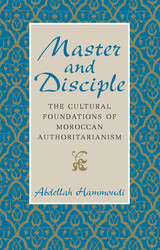 Master and Disciple: The Cultural Foundations of Moroccan Authoritarianism
Abdellah Hammoudi
University of Chicago Press, 1997 In the postcolonial era, Arab societies have been ruled by a variety of authoritarian regimes. Focusing on his native Morocco, Abdellah Hammoudi explores the ideological and cultural foundations of this persistent authoritarianism.
Building on the work of Foucault, Hammoudi argues that at the heart of Moroccan culture lies a paradigm of authority that juxtaposes absolute authority against absolute submission. Rooted in Islamic mysticism, this paradigm can be observed in the drama of mystic initiation, with its fundamental dialectic between Master and Disciple; in conflict with other cultural forms, and reelaborated in colonial and postcolonial circumstances, it informs all major aspects of Moroccan personal, political, and gender relations. Its influence is so pervasive and so firmly embedded that it ultimately legitimizes the authoritarian structure of power. Hammoudi contends that as long as the Master-Disciple dialectic remains the dominant paradigm of power relations, male authoritarianism will prevail as the dominant political form.
"Connecting political domination to gift exchange, ritual initiation, social loyalty, and gender reversals, Master and Disciple is nothing less than a thoroughgoing revision of our understanding of authoritarian rule in Morocco and in the Arab world in general."—Clifford Geertz, Institute for Advanced Study
Master and Margarita: A Critical Companion
Laura Weeks
Northwestern University Press, 1996 An edited collection, part of the acclaimed AATSEEL Critical Companions series, that guides readers through Mikhail Bulgakov's satirical masterpiece. The introduction places The Master and Margarita and Bulgakov within Russian history and literature, and essays by prominent scholars offer opinion and analysis of the novel's structure, its place in current criticism, its connection to Goethe, and its symbolism and motifs. There is also an abundance of primary source material, including an excerpt from an earlier version of the novel, and related correspondence and diary entries.
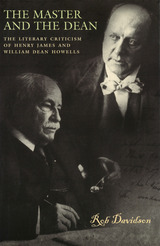 The Master and the Dean: The Literary Criticism of Henry James and William Dean Howells
Rob Davidson
University of Missouri Press, 2005
Henry James (1843–1916) and William Dean Howells (1837–1920) are best known for the central roles they played as nineteenth-century American novelists, penning such classics as James’s Portrait of a Lady and Howells’s The Rise of Silas Lapham. Their importance as literary critics, however, has been underplayed for decades. Although certain aspects of James’s and Howells’s criticism have been carefully considered—James’s “Prefaces” and Howells’s Criticism and Fiction, for example—no scholar has previously undertaken a comprehensive comparative study of their respective critical oeuvres. In The Master and the Dean, Rob Davidson presents the first book-length study of James’s literary criticism to be published since the early 1980s and the first-ever book-length study of Howells’s criticism. Considering Howells’s commonly accepted position among scholars as the most influential American literary critic of the period, such a study is long overdue.
Beginning with a detailed examination of the European and domestic sources that led James and Howells toward realism, Davidson examines the interrelationships between the two writers, with special emphasis on their diverging aesthetic concerns and attitudes toward the market and audience, their beliefs concerning the moral value of fiction and the United States as a literary subject, and their various writings about each other. A rigorous, intertextual reading of their work as critics reveals both deeper rifts and more intimate similarities between the two writers than have been recognized previously. Of special note is Davidson’s careful attention to the frequently overlooked final two decades of Howells’s career.
This close look at the lesser-known critical work of James and Howells will appeal both to scholars of the period and to anyone seeking an exceptional introduction to a crucially important era of American literary criticism.
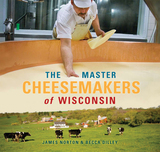 The Master Cheesemakers of Wisconsin
James Norton and Becca Dilley
University of Wisconsin Press, 2009 This book—beautifully photographed and engagingly written—introduces hardworking, resourceful men and women who represent an artisanal craft that has roots in Europe but has been a Wisconsin tradition since the 1850s. Wisconsin produces more than 600 varieties of cheese, from massive wheels of cheddar and swiss to bricks of brick and limburger, to such specialties as crescenza-stracchino and juustoleipa. These masters combine tradition, technology, artistry, and years of dedicated learning—in a profession that depends on fickle, living ingredients—to create the rich tastes and beautiful presentation of their skillfully crafted products.
Certification as a Master Cheesemaker typically takes almost fifteen years. An applicant must hold a cheesemaking license for at least ten years, create one or two chosen varieties of cheese for at least five years, take more than two years of university courses, consent to constant testing of their cheese and evaluation of their plant, and pass grueling oral and written exams to be awarded the prestigious title.
James Norton and Becca Dilley interviewed these dairy artisans, listened to their stories, tasted their cheeses, and explored the plants where they work. They offer here profiles of forty-three active Master Cheesemakers of Wisconsin, as well as a glossary of cheesemaking terms, suggestions of operations that welcome visitors for tours, tasting notes and suggested food pairings, and tasty nuggets (shall we say curds?) of information on everything to do with cheese. Winner, Best Midwest Regional Interest Book, Midwest Book Awards
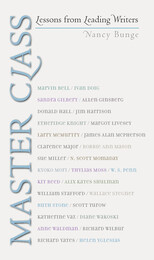 Master Class: Lessons from Leading Writers
Nancy Bunge
University of Iowa Press, 2005 Master Class: Lessons from Leading Writers gathers more than two decades of wisdom from twenty-nine accomplished authors. It offers previously unpublished interviews along with freshly edited versions of ten interviews from Nancy Bunge's well-received previous collection, Finding the Words. The first section, Theory, incorporates interviews which document the golden age of writing programs in which authors with a strong sense of social and cultural responsibility taught as seriously as they wrote. These conversations delve into the writers' philosophies and teaching methods. The second section, Practice, presents interviews with authors who discuss how they've approached the writing of particular works. Altogether the interviews introduce authors as inspirational models and provide insightful techniques for other writers to try. One piece of advice recurs with striking consistency: to produce fresh, interesting work, aspiring writers must develop a passionate self-trust. This rule has an essential corollary: improving as a writer means constantly stretching oneself with new information and skills. Sure to interest writing and literature teachers as well as writers at every stage of development, Master Class is highly recommended for undergraduate and graduate writing courses. Interviews with Marvin Bell, Ivan Doig, Sandra Gilbert, Allen Ginsberg, Donald Hall, Jim Harrison, Etheridge Knight, Margot Livesey, Larry McMurtry, James Alan McPherson, Clarence Major, Bobbie Ann Mason, Sue Miller, N. Scott Momaday, Kyoko Mori, Thylias Moss, W. S. Penn, Kit Reed, Alix Kates Shulman, William Stafford, Wallace Stegner, Ruth Stone, Scott Turow, Katherine Vaz, Diane Wakoski, Anne Waldman, Richard Wilbur, Richard Yates, and Helen Yglesias.
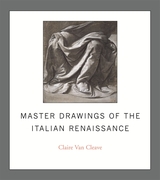 Master Drawings of the Italian Renaissance
Claire Van Cleave
Harvard University Press, 2007 A beautifully designed selection of the finest Italian Renaissance drawings from the British Museum, the Louvre and other French public collections, giving remarkable insight into the creative processes of some of the greatest artists in history.
This book features masterpieces of Italian Renaissance drawings from the British Museum, the Louvre and other French public collections in Lille, Rennes and Chantilly.
Beginning with an examination of drawing as part of the creative process, and showing how it reveals the artist's mind at work, the author explains in detail the materials and techniques used in Renaissance drawings. It also considers how drawings were used, how they changed stylistically through the period and how they varied in different regions of Italy. It concludes with a brief look at connoisseurship and collecting.
The main body of the book showcases 112 of the finest drawings by more than 40 Italian Renaissance masters, including Michelangelo, Leonardo, Botticelli, Raphael and Andrea del Sarto, accompanied by a concise sketch of the life and work of each artist. Arranged chronologically, they reveal stylistic and geographical trends as well as personal interactions between the artists themselves, and provide an extraordinary insight in to the artistic world of Renaissance Italy.
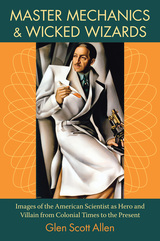 Master Mechanics and Wicked Wizards: Images of the American Scientist as Hero and Villain from Colonial Times to the Present
Glen Scott Allen
University of Massachusetts Press, 2009 From the earliest depictions of Benjamin Franklin and his kite experiment to 21st-century renderings of mad scientists, representations of American scientists in the popular media reveal a great deal about our cultural hopes and fears. In an entertaining and insightful survey of popular media over three hundred years of American history—religious tracts, political cartoons, literature, theater, advertising, art, comic books, radio, music, television, and film—Glen Scott Allen examines the stereotypes assigned to scientists for what they tell us about America's pride in its technological achievements as well as our prejudices about certain "suspect" kinds of scientific investigation.
Working in the tradition of cultural studies, Allen offers an analysis that is historically comprehensive and critically specific. Integrating both "high" literature and "low" comedy, he delves into the assumptions about scientists—good, bad, and mad—that have been shaped by and have in turn shaped American cultural forces. Throughout the book, his focus is on why certain kinds of scientists have been lionized as American heroes, while others have been demonized as anti-American villains.
Allen demonstrates that there is a continuous thread running from the seminal mad scientists of Hawthorne's nineteenth-century fiction to modern megalomaniacs like Dr. Strangelove; that marketing was as important to the reputation of the great independent inventors as technological prowess was; and that cultural prejudices which can be traced all the way back to Puritan ideology are at work in modern scientific controversies over cloning and evolution.
The periods and movements examined are remarkably far-ranging: the literature and philosophy of the Romantics; the technology fairs and utopian fiction of the nineteenth century; political movements of the 1930s and 1940s; the science fiction boom of the 1950s; the space and arms races of the 1960s and 1970s; the resurgence of pseudo-sciences in the 1980s and 1990s. This book will be of interest not just to teachers and students of cultural studies and the history of science and technology but to anyone interested in American culture and how it shapes our experience and defines our horizons.
The Master Of Monterey: A Novel
Lawrence Coates
University of Nevada Press, 2003 This comic novel, by the author of The Blossom Festival, is set in Mexican California in 1842 and is based on a true story of mistaken conquest. When Commodore Jones and the crew of the National Intention land in Monterey believing themselves to be bringing freedom and democracy to the benighted Californios, they discover that history has preceded them, that cruelty, betrayal, greed, and lust are already well established there, and that far from existing outside of history, California is a battleground for several contending versions of the past. They also find that their own limitations and illusions are far more powerful than the message of hope that they intend to deliver.
Master of Penance
Arrai A. Larson
Catholic University of America Press, 2014 This book presents the first full-scale study of the Tractatus de penitentia (C.33 q.3) in Gratian's Decretum, which became the textbook for canon law and served as the basis of the church's developing jurisprudence, in theory and in practice
The Master of Signs: Signs and the Interpretation of Signs in Herodotus’ Histories
Alexander Hollmann
Harvard University Press, 2011 Readers of Herodotus’s Histories are familiar with its reports of bizarre portents, riddling oracles, and striking dreams. But Herodotus draws our attention to other types of signs too, beginning with human speech itself as a coded system that can manipulate and be manipulated. Objects, gifts, artifacts, markings, even the human body, are all capable of being invested with meaning in the Histories and Herodotus shows that conventionally and culturally determined actions, gestures, and ritual all need decoding.
This book represents an unprecedented examination of signs and their interpreters, as well as the terminology Herodotus uses to describe sign transmission, reception, and decoding. Through his control and involvement in this process he emerges as a veritable “master of signs.”
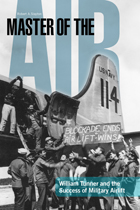 Master of the Air: William Tunner and the Success of Military Airlift
Robert A. Slayton
University of Alabama Press, 2010 In 1948, just as the Cold War was settling into the form it would maintain for nearly half a century, major antagonists the US and the USSR began maneuvering into a series of dangerously hostile encounters. Trouble had broken out in Poland and Czechoslovakia, but it was in Germany, which had been at the heart of World Wars One and Two, that the first potentially explosive confrontation developed. The USSR, which had suffered more at Germany’s hands than the rest of the Allies combined, may have viewed developments there with heightened fear and irritability. When the western Allies moved to consolidate their areas of control in occupied Germany, the USSR responded by cutting off land access to West Berlin, holding over two million residents of that city hostage in an aggressive act of brinkmanship.
Into this difficult situation the US placed General William Henry Tunner. He was given a task that seemed doomed to failure—to supply a major city by air with everything it needed to survive from food to a winter’s supply of coal—and made it a brilliant success, astonishing the world in a major public relations defeat for the Soviets, and demonstrating the unexpected capacity of air fleets in a postwar world.
 Master of the Game: Competition and Performance in Greek Poetry
Derek Collins
Harvard University Press, 2004 The interest in the performance of ancient Greek poetry has grown dramatically in recent years. But the competitive dimension of Greek poetic performances, while usually assumed, has rarely been directly addressed. This study provides for the first time an in-depth examination of a central mode of Greek poetic competition—capping, which occurs when speakers or singers respond to one another in small numbers of verses, single verses, or between verse units themselves. With a wealth of descriptive and technical detail, Collins surveys the wide range of genres that incorporated capping, including tragic and comic stichomythia, lament, forms of Platonic dialectic and dialogue, the sympotic performance of elegy, skolia, and related verse games, Hellenistic bucolic, as well as the rhapsodic performance of epic. Further, he examines historical evidence for actual performances as well as literary representations of live performances to explore how the features of improvisation, riddling, and punning through verse were developed and refined in different competitive contexts.
Anyone concerned with the performance of archaic and classical Greek poetry, or with the agonistic social, cultural, and poetic gamesmanship that prompted one performer to achieve "mastery" over another, will find this authoritative volume indispensable.
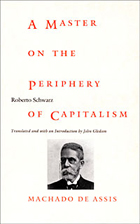 A Master on the Periphery of Capitalism: Machado de Assis
Roberto Schwarz
Duke University Press, 2001 A Master on the Periphery of Capitalism is a translation (from the original Portuguese) of Roberto Schwarz’s renowned study of the work of Brazilian novelist Machado de Assis (1839–1908). A leading Brazilian theorist and author of the highly influential notion of “misplaced ideas,” Schwarz focuses his literary and cultural analysis on Machado’s The Posthumous Memoirs of Brás Cubas, which was published in 1880. Writing in the Marxist tradition, Schwarz investigates in particular how social structure gets internalized as literary form, arguing that Machado’s style replicates and reveals the deeply embedded class divisions of nineteenth-century Brazil.
Widely acknowledged as the most important novelist to have written in Latin America before 1940, Machado had a surprisingly modern style. Schwarz notes that the unprecedented wit, sarcasm, structural inventiveness, and mercurial changes of tone and subject matter found in The Posthumous Memoirs of Brás Cubas marked a crucial moment in the history of Latin American literature. He argues that Machado’s vanguard narrative reflects the Brazilian owner class and its peculiar status in both national and international contexts, and shows why this novel’s success was no accident. The author was able to confront some of the most prestigious ideologies of the nineteenth century with some uncomfortable truths, not the least of which was that slavery remained the basis of the Brazilian economy.
A Master on the Periphery of Capitalism will appeal to those with interests in Latin American literature, nineteenth century history, and Marxist literary theory.
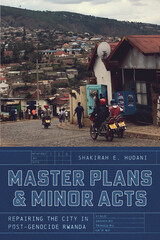 Master Plans and Minor Acts: Repairing the City in Post-Genocide Rwanda
Shakirah E. Hudani
University of Chicago Press, 2024 An examination of planning, place, and the politics of repair in post-genocide Rwanda.
Master Plans and Minor Acts examines a “material politics of repair” in post-genocide Rwanda, where in a country saturated with deep historical memory, spatial master planning aims to drastically redesign urban spaces. How is the post-conflict city reconstituted through the work of such planning, and with what effects for material repair and social conciliation?
Through extended ethnographic and qualitative research in Rwanda in the decades after the genocide of 1994, this book questions how repair after conflict is realized amidst large-scale urban transformation. Bridging African studies, urban studies, and human geography in its scope, this work ties Rwanda’s transformation to contexts of urban change in other post-conflict spaces, bringing to the fore critical questions about the ethics of planning in such complex geographies.
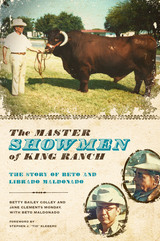 The Master Showmen of King Ranch: The Story of Beto and Librado Maldonado
By Betty Bailey Colley and Jane Clements Monday, with Beto Maldonado
University of Texas Press, 2009 Winner, San Antonio Conservation Society Citation, 2011 Texas's King Ranch has become legendary for a long list of innovations, the most enduring of which is the development of the first official cattle breed in the Americas, the Santa Gertrudis. Among those who played a crucial role in the breed's success were Librado and Alberto "Beto" Maldonado, master showmen of the King Ranch. A true "bull whisperer," Librado Maldonado developed a method for gentling and training cattle that allowed him and his son Beto to show the Santa Gertrudis to their best advantage at venues ranging from the famous King Ranch auctions to a Chicago television studio to the Dallas–Fort Worth airport. They even boarded a plane with the cattle en route to the International Fair in Casablanca, Morocco, where they introduced the Santa Gertrudis to the African continent. In The Master Showmen of King Ranch, Beto Maldonado recalls an eventful life of training and showing King Ranch Santa Gertrudis. He engagingly describes the process of teaching two-thousand-pound bulls to behave "like gentlemen" in the show ring, as well as the significant logistical challenges of transporting them to various high-profile venues around the world. His reminiscences, which span more than seventy years of King Ranch history, combine with quotes from other Maldonado family members, co-workers, and ranch owners to shed light on many aspects of ranch life, including day-to-day work routines, family relations, women's roles, annual celebrations, and the enduring ties between King Ranch owners and the vaquero families who worked on the ranch through several generations.
Master Suffering
CM Burroughs
Tupelo Press, 2021 This book is full of the questions and uncomfortable uncertainties that grief and the body bring; it is also full of speakers who are determined, and then unsure. The female bodies of Master Suffering want power to survive; they want to control and to correct the suffering they witness and withstand. But wanting can lead to suffering, too, and make speakers like Burroughs ask: “Why / should I have wanted so much / as to threaten my being?”
Master Teachers of Theatre: Observations on Teaching Theatre by Nine American Masters
Edited by Burnet M. Hobgood
Southern Illinois University Press, 1988
Claribel Baird reviews the interpretation of classical texts for theatrical performance. Howard Bay interrupted his stage design career of more than 150 Broadway productions to help students. BernardBeckerman asks if there are approaches to the teaching of dramatic literature that particularly suit drama-as-theatre. Robert Benedetti offers suggestions on the teaching of acting. OscarBrockett treats the problems of the theatre teacher and the processes of learning.
AgnesHaaga shows that the essential quality in heading up child drama programs is a sense of joyous delight. Wallace Smith discusses methods for teaching secondary schooltheatre. Jewel Walker offers a rare written statement about his work as a theatre teacher. Carl Weber conveys the principles and methodology of his mentor, Bertolt Brecht, to beginning directors.
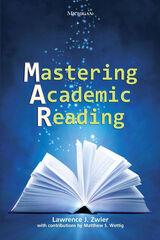 Mastering Academic Reading
Lawrence J. Zwier with contributions by Matthew S. Weltig
University of Michigan Press, 2010 Mastering Academic Reading is meant to challenge advanced academically oriented students of English. The units and the readings within them are long. The comprehension and expansion exercises after them are demanding. The hoped-for outcome is that students trained using this textbook will be able to better hold their own in university classes where the reading volume across disciplines and vocabulary demands are high. Almost every reading is taken, in minimally adapted form, from a book or academic / professional journal. Two introductory passages have been composed expressly for this book in order to provide narrowly focused background material. Beyond these pieces, readers are in the hands of “real-world” authors and their difficult, lexically diffuse, and allusion-filled creations. Journal articles and book excerpts predominate, but Mastering Academic Reading also offers a book review and a government pamphlet as well. Since one aspect of reading practice builds on others, the units are laid out in tiers, not in sections. Each unit has been organized into three tiers. In general, there is one reading per tier, although the first tier in Unit 3 contains two passages (both necessary to provide conceptual background for the other two tiers). Each reading is 3,500-5,000 words. The book focuses on the three primary goals of academic reading: reading to learn; reading to integrate, write, and critique texts; and reading for basic comprehension.
 Mastering Boston Harbor: Courts, Dolphins, and Imperiled Waters
Charles M. Haar
Harvard University Press, 2005 Mastering Boston Harbor chronicles how America's most glorious and historically significant harbor was rescued from decades of pollution and neglect by a community of caring citizens who were linked to an environmentally committed judge and his special harbor master. This dynamic public-private team shaped novel legal and political procedures for governing and restoring the harbor.
Charles Haar provides a fascinating study of the convergence of judicial supervision with political, environmental, financial, and technological interests. He challenges those who will instantly decry an "activist" judiciary and pulls back the curtain on the serious problems a court faces when it must grapple with an intractable problem affecting public interest. Haar demonstrates that at times only a resolute judiciary can energize and coordinate the branches of government to achieve essential contemporary social goals--goals that are endorsed and supported by a majority whose voice is often ignored in legislative and executive back rooms.
Because of his experience as special master in the dispute, Haar provides the reader with an insider's view of a modern brand of judicial decision-making that is not anti-majoritarian, and could be applied to similar crises in which the legislative and executive branches of government are impotent. Citizens concerned about the conflict between unbridled economic liberty and environmental protection will gain important insight from this eyewitness account of how the "harbor of shame" became a vibrant focal point for the renewal of Boston as a world-class city.
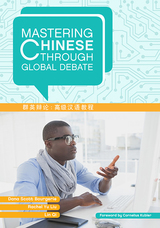 Mastering Chinese through Global Debate
Dana Scott Bourgerie, Rachel Yu Liu, and Lin Qi. Tony Brown and Jennifer Bown, Consulting Editors; Foreword by Cornelius Kubler
Georgetown University Press, 2016 While language instructors recognize the value of debate as a means of facilitating Advanced- and Superior-level skills, no single advanced Chinese textbook exists that provides level-specific scaffolded language exercises, rhetorical strategies, and topic-specific texts within the context of debate. Mastering Chinese through Global Debate, designed to meet the ACTFL proficiency guidelines and featuring content written by a professional Chinese journalist, offers learners the means to develop sophisticated language skills with the goal of achieving Superior-level proficiency. The textbook provides sets of readings and exercises that culminate in debates on key cultural topics with fellow students at home and/or with native speakers abroad via teleconference technology. Each of the six chapters includes detailed explanations, idea maps, word banks, writing and speaking samples, varied drills, and a rhetorical methods section—all of which foster language and critical thinking skills and prepare students to analyze and debate on complex topics. The textbook’s audio companion is available at press.georgetown.edu and includes MP3 files of the feature article and a mock debate in each chapter, as well as transcripts of the audio, encouraging students to both listen and read. Instructors can also access a free answer key on the Georgetown University Press website.
 Mastering Discourse: The Politics of Intellectual Culture
Paul A. Bové
Duke University Press, 1992 Mastering Discourse gathers and elaborates more than a decade of thought on the problems of the intellectual in contemporary society, by one of the most distinguished critics writing on these issues today. From Derrida and Foucault to Kristeva and Irigaray, Paul A. Bové looks at the practices of literary and cultural theory, and discusses the way theorists have produced their institutional positions and politics. Examining some of the major theories developed out of and in relation to the problems of discourse, Bové analyzes the limited successes and failures of these efforts.
Mastering Discourses offers an account of why "theory" fails to deal adequately with the politics of discursive cultures and warns that unless critics take much more seriously their own disciplinary inscriptions they will always reproduce structures of power and knowledge that they claim to oppose. Moreover, Bové argues, they will not fulfill the main role of the post-enlightenment intellectual, namely: to respond effectively to the present, through new theoretical and historical formulations that address the changing world of transnational capitalism and its neoliberal ideologies.
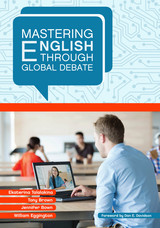 Mastering English through Global Debate
Ekaterina Talalakina, Tony Brown, Jennifer Bown, and William Eggington. Foreword by Dan E. Davidson
Georgetown University Press, 2014 eTextbooks are now available through VitalSource.com! Mastering English through Global Debate brings together rhetorical traditions and the best practices of ESL instruction to facilitate superior-level proficiency in the English language. Each chapter addresses a rich topic of debate, providing students with a set of prereading activities, texts covering both sides of a debate topic, and postreading comprehension and lexical development exercises—all of which foster the language and critical thinking skills needed for successful debates. A rhetorical methods section in each chapter integrates language and practice and prepares students for end-of-chapter debates. Using debate to develop advanced competency in a second language is a method that is finding increased interest among instructors and students alike, in both synchronous online teaching and the individual classroom. Students are prepared to participate fully in debates with their classmates—at home, abroad, or both.
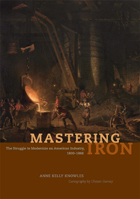 Mastering Iron: The Struggle to Modernize an American Industry, 1800-1868
Anne Kelly Knowles
University of Chicago Press, 2012 Veins of iron run deep in the history of America. Iron making began almost as soon as European settlement, with the establishment of the first ironworks in colonial Massachusetts. Yet it was Great Britain that became the Atlantic world’s dominant low-cost, high-volume producer of iron, a position it retained throughout the nineteenth century. It was not until after the Civil War that American iron producers began to match the scale and efficiency of the British iron industry. In Mastering Iron, Anne Kelly Knowles argues that the prolonged development of the US iron industry was largely due to geographical problems the British did not face. Pairing exhaustive manuscript research with analysis of a detailed geospatial database that she built of the industry, Knowles reconstructs the American iron industry in unprecedented depth, from locating hundreds of iron companies in their social and environmental contexts to explaining workplace culture and social relations between workers and managers. She demonstrates how ironworks in Alabama, Maryland, Pennsylvania, and Virginia struggled to replicate British technologies but, in the attempt, brought about changes in the American industry that set the stage for the subsequent age of steel. Richly illustrated with dozens of original maps and period art work, all in full color, Mastering Iron sheds new light on American ambitions and highlights the challenges a young nation faced as it grappled with its geographic conditions.
 Mastering Italian through Global Debate
Marie Bertola and Sandra Carletti
Georgetown University Press, 2023 Critical engagement with complex global issues that provides an effective approach to promoting linguistic proficiency and social responsibility Mastering Italian through Global Debate is a one-semester textbook designed for students with Advanced-level Italian language skills, moving toward Superior and above. Over the course of each chapter, students gain linguistic and rhetorical skills as they prepare to debate on broad, timely topics, including environmental consciousness, immigration, wealth distribution, surveillance and privacy, cultural diversity, and education. Discussion of compelling issues promotes not only linguistic proficiency but social responsibility through critical engagement with complex global challenges. Each chapter includes topic-specific reading texts and position papers, giving students insight into issues being widely discussed—and debated—in Italy today. In addition to pre- and post-reading activities, students benefit from lexical development exercises, rhetorical methods sections, and listening exercises with audio available on the Press website. Online resources for instructors include pedagogical recommendations and an answer key.
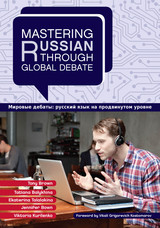 Mastering Russian through Global Debate
Tony Brown, Tatiana Balykhina, Ekaterina Talalakina, Jennifer Bown, and Viktoria Kurilenko. Foreword by Vitali Grigorevich Kostomarov
Georgetown University Press, 2014 eTextbooks are now available through VitalSource.com! Mastering Russian through Global Debate brings together the rhetorical traditions of the communications field and the best practices of adult second-language instruction to facilitate Superior-level proficiency in the Russian language. Each chapter addresses a rich topic of debate, providing students with a set of prereading activities, texts covering both sides of a debate topic, and continues with postreading comprehension and lexical development exercises—all of which foster the language and critical thinking skills needed for successful debates. A rhetorical methods section in each chapter integrates language and practice and prepares students for end-of-chapter debates. Using debate to develop advanced competency in a second language is a method that is finding increased interest among instructors and students alike, in both synchronous online teaching and the individual classroom. Students are prepared to participate fully in debates with their classmates—at home, abroad, or both.
 Mastering Spanish through Global Debate
Nieves Pérez Knapp, Krishauna Hines-Gaither, and Morella Ruscitti-Tovar. Foreword by Emily Spinelli
Georgetown University Press Building superior Spanish language proficiency through critical engagement with global challenges Mastering Spanish through Global Debate is a one-semester textbook designed for students with Advanced-level Spanish language skills, moving toward Superior. Over the course of each chapter, students gain linguistic and rhetorical skills as they prepare to debate on broad, timely topics, including environmental consciousness, immigration, wealth distribution, surveillance and privacy, cultural diversity, and education. Discussion of compelling issues promotes not only linguistic proficiency but social responsibility through critical engagement with complex global challenges. Each chapter includes topic-specific reading texts and position papers by writers from various Spanish-speaking countries. In addition to pre- and post-reading activities, students benefit from lexical development exercises, rhetorical methods sections, and listening exercises with audio available on the Press website. An online instructor’s manual provides pedagogical recommendations and an answer key.
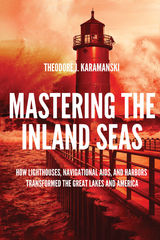 Mastering the Inland Seas: How Lighthouses, Navigational Aids, and Harbors Transformed the Great Lakes and America
Theodore J. Karamanski
University of Wisconsin Press, 2020 Theodore J. Karamanski's sweeping maritime history demonstrates the far-ranging impact that the tools and infrastructure developed for navigating the Great Lakes had on the national economies, politics, and environment of continental North America. Synthesizing popular as well as original historical scholarship, Karamanski weaves a colorful narrative illustrating how disparate private and government interests transformed these vast and dangerous waters into the largest inland water transportation system in the world.
Karamanski explores both the navigational and sailing tools of First Nations peoples and the dismissive and foolhardy attitude of early European maritime sailors. He investigates the role played by commercial boats in the Underground Railroad, as well as how the federal development of crucial navigational resources exacerbated sectionalism in the antebellum United States. Ultimately Mastering the Inland Sea shows the undeniable environmental impact of technologies used by the modern commercial maritime industry. This expansive story illuminates the symbiotic relationship between infrastructure investment in the region's interconnected waterways and North America's lasting economic and political development.
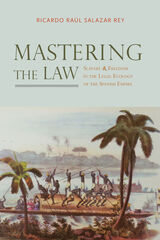 Mastering the Law: Slavery and Freedom in the Legal Ecology of the Spanish Empire
Ricardo Raúl Salazar Rey
University of Alabama Press, 2020 Explores the legal relationships of enslaved people and their descendants during the sixteenth and seventeenth centuries in Spanish America
Atlantic slavery can be overwhelming in its immensity and brutality, as it involved more than 15 million souls forcibly displaced by European imperialism and consumed in building the global economy. Mastering the Law: Slavery and Freedom in the Legal Ecology of the Spanish Empire lays out the deep history of Iberian slavery, explores its role in the Spanish Indies, and shows how Africans and their descendants used and shaped the legal system as they established their place in Iberoamerican society during the seventeenth century.
Ricardo Raúl Salazar Rey places the institution of slavery and the people involved with it at the center of the creation story of Latin America. Iberoamerican customs and laws and the institutions that enforced them provided a common language and a forum to resolve disputes for Spanish subjects, including enslaved and freedpeople. The rules through which Iberian conquerors, settlers, and administrators incorporated Africans into the expanding Empire were developed out of the need of a distant crown to find an enforceable consensus. Africans and their mestizo descendants, in turn, used and therefore molded Spanish institutions to serve their interests.Salazar Rey mined extensively the archives of secular and religious courts, which are full of complex disputes, unexpected subversions, and tactical alliances among enslaved people, freedpeople, and the crown.
The narrative unfolds around vignettes that show Afroiberians building their lives while facing exploitation and inequality enforced through violence. Salazar Rey deals mostly with cases originating from Cartagena de Indias, a major Atlantic port city that supported the conquest and rule of the Indies. His work recovers the voices and indomitable ingenuity that enslaved people and their descendants displayed when engaging with the Spanish legal ecology. The social relationships animating the case studies represent the broader African experience in the Americas during the sixteenth and seventeenth centuries.
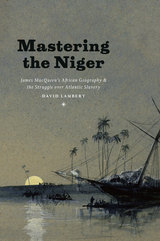 Mastering the Niger: James MacQueen's African Geography and the Struggle over Atlantic Slavery
David Lambert
University of Chicago Press, 2013 In Mastering the Niger, David Lambert recalls Scotsman James MacQueen (1778–1870) and his publication of A New Map of Africa in 1841 to show that Atlantic slavery—as a practice of subjugation, a source of wealth, and a focus of political struggle—was entangled with the production, circulation, and reception of geographical knowledge. The British empire banned the slave trade in 1807 and abolished slavery itself in 1833, creating a need for a new British imperial economy. Without ever setting foot on the continent, MacQueen took on the task of solving the “Niger problem,” that is, to successfully map the course of the river and its tributaries, and thus breathe life into his scheme for the exploration, colonization, and commercial exploitation of West Africa. Lambert illustrates how MacQueen’s geographical research began, four decades before the publication of the New Map, when he was managing a sugar estate on the West Indian colony of Grenada. There MacQueen encountered slaves with firsthand knowledge of West Africa, whose accounts would form the basis of his geographical claims. Lambert examines the inspirations and foundations for MacQueen’s geographical theory as well as its reception, arguing that Atlantic slavery and ideas for alternatives to it helped produce geographical knowledge, while geographical discourse informed the struggle over slavery.
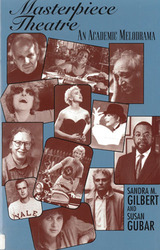 Masterpiece Theatre: An Academic Melodrama
Sandra M Gilbert and Susan Gubar
Rutgers University Press, 1995 Is there a plot against the life of letters today?!!!! A mysterious assailant has tied a nameless text to a railroad track near Boondock State University. While young untenured English professor Jane Marple enlists a group of odd and oddly rivalrous academicians to help her identify and save the text, a coalition of powerful conservatives begins to suspect and rally against a left-wing conspiracy. But all are foiled when the amnesiac text is abducted on the Euro-Centric Express, where Ms. Marple encounters a number of suspiciously eccentric theorists temporarily set loose from their usual haunts in Marxist, deconstructionist, new historicist, and postcolonial circles. You'll laugh with our heroine, you'll cry with her, but you'll never guess how--using the very latest technology and in the midst of sometimes sinister stage and screen celebrities--she brings the last of three thrilling episodes in the canon wars to an end at a WOW (Writers of the World) conference set in the heart of the Big Apple. In this hilarious romp through the culture wars, Sandra M. Gilbert and Susan Gubar send up everyone including, sometimes, themselves, while at the same time they speculate seriously on the future of literature and literacy in a society where both are increasingly endangered. The cast includes well-known critics, politicians, writers, pop stars, media personalities, and a juicy assortment of technocrats, CEOs, and other culture vultures. Any similarities you find between these characters and actual persons, living or dead, are probably glaring. So, hum the opening notes of Masterpiece Theatre as you sit back, relax, and consider (yes!) the fate of the printed word in Western civilization. Masterpiece Theatre is the latest--and funniest--round in the culture wars. No member of Modern Language Association, lover of literature and literacy, cultural pundit, or talking head should be without a copy.
Masterpieces of History: The Peaceful End of the Cold War in Europe, 1989
The National Security Archive Savranskaya
Central European University Press, 2010 Twenty years in the making, this collection presents 122 top-level Soviet, European and American records on the superpowers' role in the annus mirabilis of 1989. Consisting of Politburo minutes; diary entries from Gorbachev's senior aide, Anatoly Chernyaev; meeting notes and private communications of Gorbachev with George H.W. Bush, Margaret Thatcher, Helmut Kohl and François Mitterrand; and high-level CIA analyses, this volume offers a rare insider's look at the historic, world-transforming events that culminated in the collapse of communism in Eastern Europe and the end of the Cold War. Most of these records have never been published before.
Masterpieces of Metonymy: From Ancient Greek Times to Now
Gregory Nagy
Harvard University Press, 2015 In Masterpieces of Metonymy, Gregory Nagy analyzes metonymy as a mental process that complements metaphor. If metaphor is a substitution of something unfamilar for something familiar, then metonymy can be seen as a connecting of something familiar with something else that is already familiar. Applying this formulation, Nagy offers close readings of over one hundred examples of metonymy as it comes to life in the verbal and the visual arts of Greek culture, as well as in the arts of other cultures. Though it is debatable whether all the selected examples really qualify as masterpieces, what they all have in common is their potential for artistic greatness. A close reading of the verbal and the visual evidence, Nagy argues, leads to a fuller appreciation of this greatness.
Masterpieces of the Peabody Museum, Harvard University
C. C. Lamberg-Karlovsky
Harvard University Press, 1978 This unpretentious catalog, issued for the Peabody's "masterpieces" exhibit of 1978, presents some of the best-known artifacts of the museum, along with brief explanations of each piece's significance, heritage, and meaning. Contributors include Marie Jeanne Adams, Jeffrey P. Brain, J. O. Brew, Wilburt K. Carter, Kwang-chih Chang, Clemency C. Coggins, Carleton S. Coon, Ian Graham, Tatiana Proskouriakoff, Peter Wells, and others.
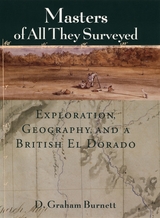 Masters of All They Surveyed: Exploration, Geography, and a British El Dorado
D. Graham Burnett
University of Chicago Press, 2000 Chronicling the British pursuit of the legendary El Dorado, Masters of All They Surveyed tells the fascinating story of geography, cartography, and scientific exploration in Britain's unique South American colony, Guyana. How did nineteenth-century Europeans turn areas they called terra incognita into bounded colonial territories? How did a tender-footed gentleman, predisposed to seasickness (and unable to swim), make his way up churning rivers into thick jungle, arid savanna, and forbidding mountain ranges, survive for the better part of a decade, and emerge with a map? What did that map mean?
In answering these questions, D. Graham Burnett brings to light the work of several such explorers, particularly Sir Robert H. Schomburgk, the man who claimed to be the first to reach the site of Ralegh's El Dorado. Commissioned by the Royal Geographical Society and later by the British Crown, Schomburgk explored and mapped regions in modern Brazil, Venezuela, and Guyana, always in close contact with Amerindian communities. Drawing heavily on the maps, reports, and letters that Schomburgk sent back to England, and especially on the luxuriant images of survey landmarks in his Twelve Views in the Interior of Guiana (reproduced in color in this book), Burnett shows how a vast network of traverse surveys, illustrations, and travel narratives not only laid out the official boundaries of British Guiana but also marked out a symbolic landscape that fired the British imperial imagination.
Engagingly written and beautifully illustrated, Masters of All They Surveyed will interest anyone who wants to understand the histories of colonialism and science.
Masters of Contemporary Brazilian Song: MPB, 1965-1985
By Charles A. Perrone
University of Texas Press, 1993 Masters of Contemporary Brazilian Song is a critical study of MPB (música popular brasileira), a term that refers to varieties of urban popular music of the 1960s and 1970s, incorporating samba, Bossa Nova, and new materials.
 Masters of Dramatic Comedy and their Social Themes
Henry Ten Eyck Perry
Harvard University Press Moliere led the way to common sense and reasonableness, and Bernard Shaw has been an upheaving force in many departments of modern life. Intelligent human beings have always found absurdities in the life about them, inconsistencies and incongruities of society which the great comic dramatists have turned to good advantage. These authors have generally had in the back of their minds some standard of ideal conduct, difficult to realize in the work-a-day world, which they have applied to conditions existing in their own day and age. Although this standard has often been impracticable, comedy has at times succeeded in opening the eyes of deluded people to the nature of their disease. For comedy implies not only criticism but sympathy and, like tragedy, although more indirectly, it makes us aware of the painfulness and beauty of our lives. This social role of comedy is the central theme of Mr. Perry’s charming book. After a brief survey of comedy in the ancient world and in the Renaissance, he devotes his central chapters to England, Spain, France, Italy, and Germany. He selects one author to stand for the contribution of each country, choosing Ben Jonson rather than Shakespeare for England because Jonson’s work contains more definite social criticism than Shakespeare’s. The discussion is brought down to modern times by a chapter on Russian comedy and one on the work of Bernard Shaw.
 Masters of the Middle Waters: Indian Nations and Colonial Ambitions along the Mississippi
Jacob F. Lee
Harvard University Press, 2019 A riveting account of the conquest of the vast American heartland that offers a vital reconsideration of the relationship between Native Americans and European colonists, and the pivotal role of the mighty Mississippi.
America’s waterways were once the superhighways of travel and communication. Cutting a central line across the landscape, with tributaries connecting the South to the Great Plains and the Great Lakes, the Mississippi River meant wealth, knowledge, and power for those who could master it. In this ambitious and elegantly written account of the conquest of the West, Jacob Lee offers a new understanding of early America based on the long history of warfare and resistance in the Mississippi River valley.
Lee traces the Native kinship ties that determined which nations rose and fell in the period before the Illinois became dominant. With a complex network of allies stretching from Lake Superior to Arkansas, the Illinois were at the height of their power in 1673 when the first French explorers—fur trader Louis Jolliet and Jesuit priest Jacques Marquette—made their way down the Mississippi. Over the next century, a succession of European empires claimed parts of the midcontinent, but they all faced the challenge of navigating Native alliances and social structures that had existed for centuries. When American settlers claimed the region in the early nineteenth century, they overturned 150 years of interaction between Indians and Europeans.
Masters of the Middle Waters shows that the Mississippi and its tributaries were never simply a backdrop to unfolding events. We cannot understand the trajectory of early America without taking into account the vast heartland and its waterways, which advanced and thwarted the aspirations of Native nations, European imperialists, and American settlers alike.
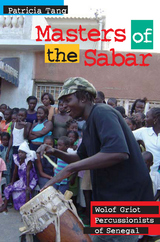 Masters of the Sabar: Wolof Griot Percussionists of Senegal
Patricia Tang
Temple University Press, 2006 Masters of the Sabar is the first book to examine the music and culture of Wolof griot percussionists, masters of the vibrant sabar drumming tradition. Based on extensive field research in Senegal, this book is a biographical study of several generations of percussionists in a Wolof griot (géwël) family, exploring and documenting their learning processes, repertories, and performance contexts—from life-cycle ceremonies to sporting events and political meetings. Patricia Tang examines the rich history and changing repertories of sabar drumming, including dance rhythms and bàkks, musical phrases derived from spoken words. She notes the recent shift towards creating new bàkks which are rhythmically more complex and highlight the virtuosity and musical skill of the percussionist. She also considers the burgeoning popular music genre called mbalax. The compact disc that accompanies the book includes examples of the standard sabar repertory, as well as bàkks composed and performed by Lamine Touré and his family drum troupe.
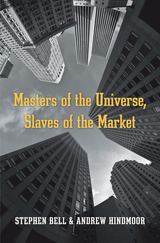 Masters of the Universe, Slaves of the Market
Stephen Bell and Andrew Hindmoor
Harvard University Press, 2015 This account of the financial crisis of 2008–2009 compares banking systems in the United States and the United Kingdom to those of Canada and Australia and explains why the system imploded in the former but not the latter. Central to this analysis are differences in bankers’ beliefs and incentives in different banking markets.
A boom mentality and fear of being left behind by competitors drove many U.S. and British bank executives to take extraordinary risks in creating new financial products. Intense market competition, poorly understood trading instruments, and escalating system complexity both drove and misled bankers. Formerly illiquid assets such as mortgages and other forms of debt were repackaged into complex securities, including collateralized debt obligations (CDOs). These were then traded on an industrial scale, and in 2007 and 2008, when their value collapsed, economic activity fell into a deep freeze. The financial crisis threatened not just investment banks and their insurers but also individual homeowners and workers at every level. In contrast, because banks in Canada and Australia could make good profits through traditional lending practices, they did not confront the same pressures to reinvent themselves as did banks in the United States and the United Kingdom, thus allowing them to avoid the fate of their overseas counterparts.
Stephen Bell and Andrew Hindmoor argue that trading and systemic risk in the banking system need to be reined in. However, prospects for this are not promising given the commitment of governments in the crisis-hit economies to protect the “international competitiveness” of the London and New York financial markets.
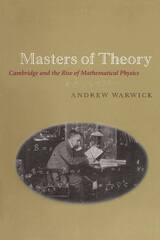 Masters of Theory: Cambridge and the Rise of Mathematical Physics
Andrew Warwick
University of Chicago Press, 2003 Winner of the the Susan Elizabeth Abrams Prize in History of Science.
When Isaac Newton published the Principia three centuries ago, only a few scholars were capable of understanding his conceptually demanding work. Yet this esoteric knowledge quickly became accessible in the nineteenth and early twentieth centuries when Britain produced many leading mathematical physicists. In this book, Andrew Warwick shows how the education of these "masters of theory" led them to transform our understanding of everything from the flight of a boomerang to the structure of the universe.
Warwick focuses on Cambridge University, where many of the best physicists trained. He begins by tracing the dramatic changes in undergraduate education there since the eighteenth century, especially the gradual emergence of the private tutor as the most important teacher of mathematics. Next he explores the material culture of mathematics instruction, showing how the humble pen and paper so crucial to this study transformed everything from classroom teaching to final examinations. Balancing their intense intellectual work with strenuous physical exercise, the students themselves—known as the "Wranglers"—helped foster the competitive spirit that drove them in the classroom and informed the Victorian ideal of a manly student. Finally, by investigating several historical "cases," such as the reception of Albert Einstein's special and general theories of relativity, Warwick shows how the production, transmission, and reception of new knowledge was profoundly shaped by the skills taught to Cambridge undergraduates.
Drawing on a wealth of new archival evidence and illustrations, Masters of Theory examines the origins of a cultural tradition within which the complex world of theoretical physics was made commonplace.
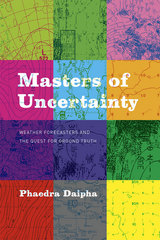 Masters of Uncertainty: Weather Forecasters and the Quest for Ground Truth
Phaedra Daipha
University of Chicago Press, 2015 Though we commonly make them the butt of our jokes, weather forecasters are in fact exceptionally good at managing uncertainty. They consistently do a better job calibrating their performance than stockbrokers, physicians, or other decision-making experts precisely because they receive feedback on their decisions in near real time. Following forecasters in their quest for truth and accuracy, therefore, holds the key to the analytically elusive process of decision making as it actually happens.
In Masters of Uncertainty, Phaedra Daipha develops a new conceptual framework for the process of decision making, after spending years immersed in the life of a northeastern office of the National Weather Service. Arguing that predicting the weather will always be more craft than science, Daipha shows how forecasters have made a virtue of the unpredictability of the weather. Impressive data infrastructures and powerful computer models are still only a substitute for the real thing outside, and so forecasters also enlist improvisational collage techniques and an omnivorous appetite for information to create a locally meaningful forecast on their computer screens. Intent on capturing decision making in action, Daipha takes the reader through engrossing firsthand accounts of several forecasting episodes (hits and misses) and offers a rare fly-on-the-wall insight into the process and challenges of producing meteorological predictions come rain or come shine. Combining rich detail with lucid argument, Masters of Uncertainty advances a theory of decision making that foregrounds the pragmatic and situated nature of expert cognition and casts into new light how we make decisions in the digital age.
 Masterworks of the Orchestral Repertoire: A Guide for Listeners
Donald N. Ferguson
University of Minnesota Press, 1968 Masterworks of the Orchestral Repertoire was first published in 1968. Minnesota Archive Editions uses digital technology to make long-unavailable books once again accessible, and are published unaltered from the original University of Minnesota Press editions. The fullest enjoyment of an orchestral performance or a record concert comes with a background of knowledge about the music itself. This handbook is designed to help music lovers get the ultimate pleasure from their listening by providing them with that background about a large portion of the orchestral repertoire. Professor Ferguson analyzes and interprets the most important classical symphonies, overtures, and concertos, as well as selected orchestral works of modern composers. He goes beyond a conventional analysis of structure since he believes (with a majority of the music-loving public) that great music is actually a communication -- that it expresses significant emotions. The great composers, on their own testimony, have striven not merely to create perfect forms but to interpret human experience. Mingled with the analyses, then, the reader will find comments on the expressive purport of the music. For twenty-five years Professor Ferguson has supplied the program notes for the subscription concerts of the Minneapolis Symphony Orchestra, and this volume is an outgrowth of that activity. In preparing the material for book publication, however, he studied the musical compositions anew, and the resulting chapters provide a much deeper exploration of the musical subjects than did the program notes. The themes of important works are illustrated by musical notations, and a brief glossary explains technical terms.
 Mastery and Drift: Professional-Class Liberals since the 1960s
Edited by Brent Cebul and Lily Geismer
University of Chicago Press, 2025 A revelatory look at modern liberalism’s historical evolution and enduring impact on contemporary politics and society.
Since the 1960s, American liberalism and the Democratic Party have been remade along professional class lines, widening liberalism’s impact but narrowing its social and political vision. In Mastery and Drift, historians Brent Cebul and Lily Geismer have assembled a group of scholars to address the formation of “professional-class liberalism” and its central role in remaking electoral politics and the practice of governance. Across subjects as varied as philanthropy, consulting, health care, welfare, race, immigration, economics, and foreign conflicts, the authors examine not only the gaps between liberals’ egalitarian aspirations and their approaches to policymaking but also how the intricacies of contemporary governance have tended to bolster professional-class liberals’ power.
The contributors to Mastery and Drift all came of age amid the development of professional-class liberalism, giving them distinctive and important perspectives in understanding its internal limitations and its relationship to neoliberalism and the Right. With never-ending disputes over the meaning of liberalism, the content of its governance, and its relationship to a resurgent Left, now is the time to consider modern liberalism’s place in contemporary American life.
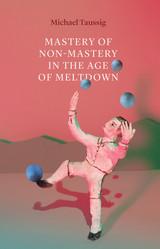 Mastery of Non-Mastery in the Age of Meltdown
Michael Taussig
University of Chicago Press, 2020 For centuries, humans have excelled at mimicking nature in order to exploit it. Now, with the existential threat of global climate change on the horizon, the ever-provocative Michael Taussig asks what function a newly invigorated mimetic faculty might exert along with such change. Mastery of Non-Mastery in the Age of Meltdown is not solely a reflection on our condition but also a theoretical effort to reckon with the impulses that have fed our relentless ambition for dominance over nature.
Taussig seeks to move us away from the manipulation of nature and reorient us to different metaphors and sources of inspiration to develop a new ethical stance toward the world. His ultimate goal is to undo his readers’ sense of control and engender what he calls “mastery of non-mastery.” This unique book developed out of Taussig’s work with peasant agriculture and his artistic practice, which brings performance art together with aspects of ritual. Through immersive meditations on Walter Benjamin, D. H. Lawrence, Emerson, Bataille, and Proust, Taussig grapples with the possibility of collapse and with the responsibility we bear for it.
Mastery of Stress
Daniel H. Funkenstein, Stanley H. King, and Margaret E. Drolette
Harvard University Press
 Mastodons to Mississippians: Adventures in Nashville's Deep Past
Aaron Deter-Wolf
Vanderbilt University Press, 2021 Winner of the Tennessee History Book Award (Tennessee Historical Society and Tennessee Historical Commission), 2021
Was Nashville once home to a giant race of humans?
No, but in 1845, you could have paid a quarter to see the remains of one who allegedly lived here before The Flood. That summer, Middle Tennessee well diggers had unearthed the skeleton of an American mastodon. Before it went on display, it was modified and augmented with wooden “bones” to make it look more like a human being and passed off as an antediluvian giant. Then, like so many Nashvillians, after a little success here, it went on tour and disappeared from history.
But this fake history of a race of Pre-Nashville Giants isn’t the only bad history of what, and who, was here before Nashville. Sources written for schoolchildren and the public lead us to believe that the first Euro-Americans arrived in Nashville to find a pristine landscape inhabited only by the buffalo and boundless nature, entirely untouched by human hands. Instead, the roots of our city extend some 14,000 years before Illinois lieutenant-governor-turned-fur-trader Timothy Demonbreun set foot at Sulphur Dell.
During the period between about AD 1000 and 1425, a thriving Native American culture known to archaeologists as the Middle Cumberland Mississippian lived along the Cumberland River and its tributaries in today’s Davidson County. Earthen mounds built to hold the houses or burials of the upper class overlooked both banks of the Cumberland near what is now downtown Nashville. Surrounding densely packed village areas including family homes, cemeteries, and public spaces stretched for several miles through Shelby Bottoms, and the McFerrin Park, Bicentennial Mall, and Germantown neighborhoods. Other villages were scattered across the Nashville landscape, including in the modern neighborhoods of Richland, Sylvan Park, Lipscomb, Duncan Wood, Centennial Park, Belle Meade, White Bridge, and Cherokee Park.
This book is the first public-facing effort by legitimate archaeologists to articulate the history of what happened here before Nashville happened.
Matanza
Thomas P. Anderson
Northwestern University Press, 1995 This authoritative account of the matanza narrates the circumstances leading up to the 1932 communist revolt in El Salvador, a pivotal event in Central American history. It investigates the proximate and underlying causes of the conflict and follows the progression of the rebellion and subsequent slaughter (matanza) of thousands of peasants, even those merely suspected of participating in the uprising. It provides a vivid, detailed chronicle of the revolt in various Salvadoran towns as well as the social aspects, battles, military engagements, and innumerable casualties.
In light of the scarcity of first-hand information and primary sources, Anderson makes remarkable use of interviews and oral histories to develop this invaluable and searing record of injustice.
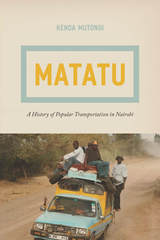 Matatu: A History of Popular Transportation in Nairobi
Kenda Mutongi
University of Chicago Press, 2017 Drive the streets of Nairobi, and you are sure to see many matatus—colorful minibuses that transport huge numbers of people around the city. Once ramshackle affairs held together with duct tape and wire, matatus today are name-brand vehicles maxed out with aftermarket detailing. They can be stately black or extravagantly colored, sporting names, slogans, or entire tableaus, with airbrushed portraits of everyone from Kanye West to Barack Obama. In this richly interdisciplinary book, Kenda Mutongi explores the history of the matatu from the 1960s to the present.
As Mutongi shows, matatus offer a window onto the socioeconomic and political conditions of late-twentieth-century Africa. In their diversity of idiosyncratic designs, they reflect multiple and divergent aspects of Kenyan life—including, for example, rapid urbanization, organized crime, entrepreneurship, social insecurity, the transition to democracy, and popular culture—at once embodying Kenya’s staggering social problems as well as the bright promises of its future. Offering a shining model of interdisciplinary analysis, Mutongi mixes historical, ethnographic, literary, linguistic, and economic approaches to tell the story of the matatu and explore the entrepreneurial aesthetics of the postcolonial world.
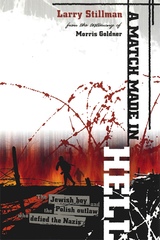 A Match Made in Hell: The Jewish Boy and the Polish Outlaw Who Defied the Nazis
Larry Stillman, from the testimony of Morris Goldner
University of Wisconsin Press, 2003 When Moniek (Morris) Goldner and his family were uprooted from their Polish farming village during a German action, the child-sized sixteen-year-old fled into the forests. He eventually met up with his father, who had also escaped, and together they managed to survive until a former friend betrayed the pair. Wounded and left for dead beneath his father’s murdered body, Goldner was rescued by the enigmatic outlaw Jan Kopec, who was also in hiding, looking for ways to profit from his criminal expertise.
For eighteen months Kopec hid the boy with him, moving from one area to another, often staying in hideouts he had fashioned years earlier. At first Kopec trained Goldner simply to serve as his accomplice in robberies and black market activities. But before long he pushed the training to a whole new level, making it possible for him to sell Goldner’s services to a shadowy resistance group which was becoming interested in the daring young saboteur.
And through it all, these two disparate personalities—the quiet, small-framed boy and the stocky, callous mercenary—forged an remarkable friendship and co-dependency born of need and desperation in a hellish time and place.
 The Matching Law: Papers in Psychology and Economics
Richard J. Herrnstein
Harvard University Press, 1997 This impressive collection features Richard Herrnstein's most important and original contributions to the social and behavioral sciences--his papers on choice behavior in animals and humans and on his discovery and elucidation of a general principle of choice called the matching law.
In recent years, the most popular theory of choice behavior has been rational choice theory. Developed and elaborated by economists over the past hundred years, it claims that individuals make choices in such a way as to maximize their well-being or utility under whatever constraints they face; that is, people make the best of their situations. Rational choice theory holds undisputed sway in economics, and has become an important explanatory framework in political science, sociology, and psychology. Nevertheless, its empirical support is thin.
The matching law is perhaps the most important competing explanatory account of choice behavior. It views choice not as a single event or an internal process of the organism but as a rate of observable events over time. It states that instead of maximizing utility, the organism allocates its behavior over various activities in exact proportion to the value derived from each activity. It differs subtly but significantly from rational choice theory in its predictions of how people exert self-control, for example, how they decide whether to forgo immediate pleasures for larger but delayed rewards. It provides, through the primrose path hypothesis, a powerful explanation of alcohol and narcotic addiction. It can also be used to explain biological phenomena, such as genetic selection and foraging behavior, as well as economic decision making.
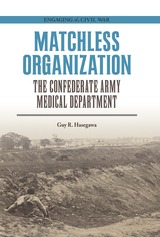 Matchless Organization: The Confederate Army Medical Department
Guy R. Hasegawa, Foreword by F. Terry Hambrecht
Southern Illinois University Press, 2021 The essential reference about a surprisingly well-organized medical department
Despite the many obstacles it had to overcome—including a naval blockade, lack of a strong industrial base, and personnel unaccustomed to military life—the Richmond-based Confederate Army Medical Department developed into a robust organization that nimbly adapted to changing circumstances. In the first book to address the topic, Guy R. Hasegawa describes the organization and management of the Confederate army’s medical department. At its head was Surgeon General Samuel Preston Moore, a talented multitasker with the organizational know-how to put in place qualified medical personnel to care for sick and wounded Confederate soldiers.
Hasegawa investigates how political considerations, personalities, and, as the war progressed, the diminishing availability of human and material resources influenced decision-making in the medical department. Amazingly, the surgeon general’s office managed not only to provide care but also to offer educational opportunities to its personnel and collect medical and surgical data for future use, regardless of constant and growing difficulties.
During and after the war, the medical department of the Confederate army was consistently praised as being admirably organized and efficient. Although the department was unable to match its Union counterpart in manpower and supplies, Moore’s intelligent management enabled it to help maintain the fighting strength of the Confederate army.
Matchmaking in the Archive: 19 Conversations with the Dead and 3 Encounters with Ghosts
E.G. Crichton
Rutgers University Press, 2023 Though today’s LGBTQ people owe a lot to the generations who came before them, their historical inheritances are not always obvious.
Working with the archives of the Gay Lesbian Bisexual Transgender Historical Society, artist E.G. Crichton decided to do something to bridge this generation gap. She selected 19 innovative LGBTQ artists, writers, and musicians, then paired each of them with a deceased person whose personal artifacts are part of the archive.
Including 25 pages of vivid images, Matchmaking in the Archive documents this monumental creative project and adds essays by Jonathan D. Katz, Michelle Tea, and Chris Vargas, who describe their own unique encounters with the ghosts of LGBTQ history. Together, they make the archive come alive in remarkably intimate ways.
Materada
Fulvio Tomizza
Northwestern University Press, 1999 Francesco Koslovic—even his name straddles two cultures. And during the spring of 1955, in the village of Materada on the Istrian Peninsula, his two worlds are coming apart. Materada, the first volume of Fulvio Tomizza's celebrated Istrian Trilogy, depicts the Istrian exodus of the hundreds of thousands who had once thrived in a rich ethnic mixture of Italians and Slavs. Complicating Koslovic's own departure is his attempt to keep the land that he and his brother have worked all their lives.
A picture of a disappearing way of life, a tale of feud and displacement, and imbued with the tastes, tales, and songs of his native Istria, Koslovic's story is a testament to the intertwined ethnic roots of Balkan history.
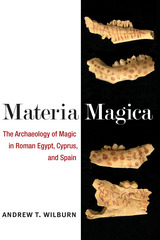 Materia Magica: The Archaeology of Magic in Roman Egypt, Cyprus, and Spain
Andrew T. Wilburn
University of Michigan Press, 2015 This exciting new study draws on objects excavated or discovered in the late nineteenth or early twentieth century at three Mediterranean sites. Through the three case studies, Materia Magica identifies specific forms of magic that may be otherwise unknown. It isolates the practitioners of magic and examines whether magic could be used as a form of countercultural resistance. Andrew T. Wilburn discovers magic in the objects of ancient daily life, suggesting that individuals frequently turned to magic, particularly in crises. Local forms of magic may have differed, and Wilburn proposes that the only way we can find small-town sorcerers is through careful examination of the archaeological evidence. Studying the remains of spells enacted by practitioners, Wilburn's work unites the analysis of the words written on artifacts and the physical form of these objects. He situates these items within their contexts, to study how and why they were used. Materia Magica approaches magic as a material endeavor, in which spoken spells, ritual actions, and physical objects all played vital roles in the performance of a rite. Materia Magica develops a new method for identifying and interpreting the material remains of magical practice by assessing artifacts within their archaeological contexts. Wilburn suggests that excavations undertaken in recent centuries can yield important lessons about the past, and he articulates the ways in which we can approach problematic data.
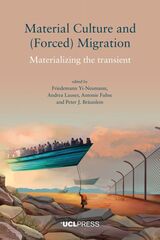 Material Culture and (Forced) Migration: Materializing the Transient
Edited by Friedemann Yi-Neumann, Andrea Lauser, Antonie Fuhse, and Peter J. Bräunlein
University College London, 2022 An innovative material culture perspective on migration research.
Material Culture and (Forced) Migration argues that materiality is a fundamental dimension of migration. People take things with them, or they lose, find, and engage things along the way. Movements themselves are framed by objects such as borders, passports, tents, camp infrastructures, boats, and mobile phones. This volume brings together chapters on a broad range of movements—from forced migration and displacement to retirement migration. What ties the chapters together is their perspective of material culture.
Centering on four interconnected themes—temporality and materiality, methods of object-based migration research, the affective capacities of objects, and the engagement of things in place-making practices—the volume provides a material culture perspective for migration scholars around the globe, from a wide range of disciplines. The chapters’ focus on everyday objects and practices will appeal to all those interested in the tangible experiences of migration.
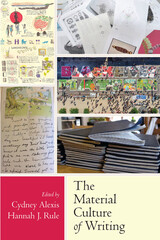 The Material Culture of Writing
edited by Cydney Alexis and Hannah J. Rule
University Press of Colorado, 2022 The Material Culture of Writing opens up avenues for understanding writing through scholarship in material culture studies. Contributors to this volume each interrogate an object, set of objects, or writing environment to reveal the sociomaterial contexts from which writing emerges. The artifacts studied are both contemporary and historical, including ink, a Victorian hotel visitors’ book, Moleskine notebooks, museum conservators’ files, an early twentieth-century baby book, and a college campus makerspace. Close study of such artifacts not only enriches understanding of what counts as writing but also offers up the potential for rich current and historical inquiry into writing artifacts and environments.
The collection features scholars across the disciplines—such as art, art history, English, museum studies, and writing studies—who work as teachers, historians, museum curators/conservators, and faculty. Each chapter features methods and questions from contributors’ own disciplines while at the same time speaking to writing studies’ interest in writers, writing identity, and writing practice. The authors in this volume also work with a variety of methodologies, including literary analysis, archival research, and qualitative research, providing models for the types of research possible using a material culture studies framework. The collection is organized into three sections—Writing Identity, Writing Work, Writing Genre—each with a contextualizing introduction from the editors that introduces the chapters themselves and imagines possible directions for writing studies research facilitated by material culture studies.
The Material Culture of Writing serves as an accessible introduction to work in material culture studies for writing studies scholars, graduate students, and undergraduates, especially as it makes a distinctive contribution to writing studies in its material culture studies approach. Because of the interdisciplinarity of material culture studies and this volume’s contributors, this collection will appeal to a wide range of scholars and readers, including those interested in writing studies, the history of the book, print culture, genre studies, archival methods, and authorship studies.
Contributors: Cydney Alexis, Debby Andrews, Diane Ehrenpreis, Keri Epps, Desirée Henderson, Kevin James, Jenny Krichevsky, Anne Mackay, Emilie Merrigan, Laura R. Micciche, Hannah J. Rule, Kate Smith
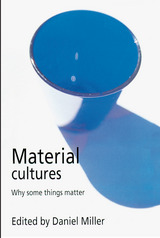 Material Cultures: Why Some Things Matter
Edited by Daniel Miller
University of Chicago Press, 1997 The field of material culture, while historically well established, has recently enjoyed something of a renaissance. Methods once dominated by Marxist- and commodity-oriented analyses and by the study of objects as symbols are giving way to a more ethnographic approach to artifacts. This orientation is the cornerstone of the essays presented in Material Cultures. A collection of case studies which move from the domestic sphere to the global arena, the volume includes examinations of the soundscape produced by home radios, catalog shopping, the role of paper in the workplace, and the relationship between the production and consumption of Coca-Cola in Trinidad.
The diversity of the essays is mediated by their common commitment to ethnography with a material focus. Rather than examine objects as mirages of media or language, Material Cultures emphasizes how the study of objects not only contributes to an understanding of artifacts but is also an effective means for studying social values and contradictions.
Material Encounters between Jews and Christians: From the Silk and Spice Routes to the Highlands of Ethiopia
Bar Kribus
Arc Humanities Press, 2024 This book demonstrates the potential of material culture, including artworks and archaeological finds, to shed new light on Jewish-Christian interaction in medieval and early modern times. Previous studies have focused on areas where Jews lived as a minority under Christian rule, such as in Western Europe and the Byzantine Empire. This book, on the other hand, explores the eastern Mediterranean to Central Asia, the Red Sea and India, where Jews and Christians interacted on a different footing.
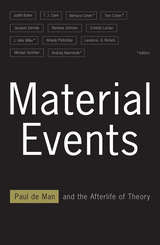 Material Events: Paul de Man and the Afterlife of Theory
Tom Cohen
University of Minnesota Press, 2000 Renowned contributors use the late work of this crucial figure to open new speculations on "materiality." A "material event," in one of Paul de Man’s definitions, is a piece of writing that enters history to make something happen. This interpretation hovers over the publication of this volume, a timely reconsideration of de Man’s late work in its complex literary, critical, cultural, philosophical, political, and historical dimensions. A distinguished group of scholars responds to the problematic of "materialism" as posed in Paul de Man’s posthumous final book, Aesthetic Ideology. These contributors, at the forefront of critical theory, productive thinking, and writing in the humanities, explore the question of "material events" to illuminate not just de Man’s work but their own. Prominent among the authors here is Jacques Derrida, whose extended essay “Typewriter Ribbon: Limited Inc (2)” returns to a celebrated episode in Rousseau’s Confessions that was discussed by de Man in Allegories of Reading. The importance of de Man’s late work is related to a broad range of subjects and categories and-in Derrida’s provocative reading of de Man’s concept of "materiality"-the politico-autobiographical texts of de Man himself. This collection is essential reading for all those interested in the present state of literary and cultural theory. Contributors: Judith Butler, UC Berkeley; T. J. Clark, UC Berkeley; Jacques Derrida, École des Hautes Études en Sciences Sociales and UC Irvine; Barbara Johnson, Harvard U; Ernesto Laclau, U of Essex; Arkady Plotnitsky, Purdue U; Laurence A. Rickels, UC Santa Barbara; and Michael Sprinker.
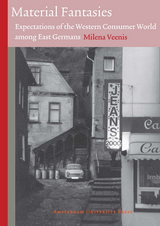 Material Fantasies: Expectations of the Western Consumer World among East Germans
Milena Veenis
Amsterdam University Press, 2012 In 1989 news broadcasts all over the world were dominated for weeks by images of East Germans crossing the Berlin Wall to West Germany. But what did the East Germans expect to find when they excitedly broke through the Wall? And what did they actually find when they made it over to the other side? This study draws on fifteen months of research into both the lives of East Germans before the fall of communism and their fast-changing world after they embraced capitalism. Grounded in powerful anthropological insights, Milena Veenis argues persuasively that national identifications and the bond between state and citizenry in both East and West Germany over the past twenty years has been shaped by the far-fetched, socialist and capitalist promises of consumption as the road to ultimate well-being. These promises also functioned as a way to cover up the more shameful and dirty aspects of both countries’ history and social life.
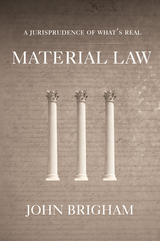 Material Law: A Jurisprudence of What's Real
John Brigham
Temple University Press, 2009 Law is part of the process by which people construct their views of the world. In Material Law, distinguished scholar John Brigham focuses on the places where law and material life intersect, and how law creates and alters our social reality. Brigham looks at an eclectic group of bodies and things—from maps and territories and trends in courthouse architecture to a woman's womb and a judge's body— to make connections between the material and the legal. Theoretically sophisticated, and consistently fascinating, Material Law integrates law and society, political science, and popular culture in a truly interdisciplinary fashion. Brigham examines how the meaning of law is influenced by politics, reviewing, for example, whether the authority of global law supersedes that of national law in the context of anglo-american cultural colonialism. What emerges is a well-reasoned look at how the authority of law constitutes what we see as real in our lives.
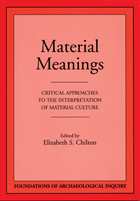 Material Meanings
Elizabeth Chilton
University of Utah Press, 1999 Material Meanings focuses on the social context in which things are produced and in which they are given meaning. With firm roots in antiquarianism, archaeology began as the study and collection of things. Even today objects take center stage in many areas of archaeological inquiry. But the past few decades have seen a proliferation of the ways anthropological archaeologist analyze raw materials, tools, techniques, finished products, and discarded objects. Material Meanings examines current approaches to material culture in the archaeological record from three perspective: ethnoarchaeology and technological traditions, material science, and theoretical approaches to materiality. The focus of this book is not on artifacts themselves but on the social context in which things are produced and in which they are given meaning, the technical choices of an artifact producer within a larger technical system, and their interpretation by modern researchers. The chapters represent a broad range of theoretical perspectives, methods, and data sets. Several chapters consider methodological issues in reconstructing technical systems. Most contributions, however, apply this understanding to larger questions of social identity and ethnicity, emphasizing historical context or models of cultural process.
 Material Media-Making in the Digital Age
Daniel Binns
Intellect Books, 2024 An accessible guide to the wealth of media-making tools and processes in our contemporary world.
Today’s world offers no shortage of media for us to consume, and the ever-expanding array of available media has changed the way scholars think about its production and reception. Missing from these conversations about new media, however, is the maker—the one with the power to produce media from their own pocket.
In Material Media-Making in the Digital Age, Daniel Binns looks at the current media landscape in order to understand his own media practice. The result is a personal journey through media theory, history, and technology, furnished with practical lessons on the digital form for teachers, students, professionals, and enthusiasts. A refreshing combination of theory and practice written in a personal, engaging style, this book will enable readers to understand how a personal creative practice might unlock deeper thinking about media and its place in the world.
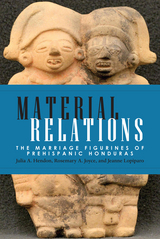 Material Relations: The Marriage Figurines of Prehispanic Honduras
Julia A. Hendon
University Press of Colorado, 2014 Focusing on marriage figurines—double human figurines that represent relations formed through social alliances—Hendon, Joyce, and Lopiparo examine the material relations created in Honduras between AD 500 and 1000, a period of time when a network of social houses linked settlements of a variety of sizes in the region. The authors analyze these small, seemingly insignificant artifacts using the theory of materiality to understand broader social processes. They examine the production, use, and disposal of marriage figurines from six sites—Campo Dos, Cerro Palenque, Copán, Currusté, Tenampua, and Travesia—and explore their role in rituals and ceremonies, as well as in the forming of social bonds and the celebration of relationships among communities. They find evidence of historical traditions reproduced over generations through material media in social relations among individuals, families, and communities, as well as social differences within this network of connected yet independent settlements. Material Relations provides a new and dynamic understanding of how social houses functioned via networks of production and reciprocal exchange of material objects and will be of interest to Mesoamerican archaeologists, anthropologists, and art historians.
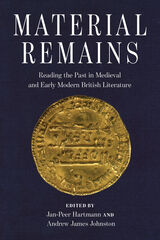 Material Remains: Reading the Past in Medieval and Early Modern British Literature
Edited by Jan-Peer Hartmann and Andrew James Johnston
Ohio State University Press, 2021 Medieval and early modern literature was fascinated with the material remains of the past. Scenes involving the discovery, description, circulation, or contemplation of archaeological objects can be found in texts ranging from hagiography to elegiac poetry, from historiography to romance—across regions and periods. This volume gathers voices to explore the ways in which these texts employ descriptions of objects from the past to produce aesthetic and literary responses to questions of historicity and the epistemological conditions of historical knowledge. The contributions to Material Remains: Reading the Past in Medieval and Early Modern British Literature examine the understanding and experience of temporality as registered through the representation of found objects. From Beowulf and King Arthur to Richard III, Roger de Norton, and more, these essays reproduce the thrill of the archaeological find and generate new forms of historical understanding beyond the established narratives that reinforce modern forms of periodizing the Middle Ages. List of Contributors Neil Cartlidge, Roberta Frank, Lori Ann Garner, Jonathan Gil Harris, Jan-Peer Hartmann, John Hines, Naomi Howell, Andrew Hui, Andrew James Johnston, Sarah Salih, Philip Schwyzer
 The Material Unconscious: American Amusement, Stephen Crane, and the Economics of Play
William Brown
Harvard University Press, 1996 Within the ephemera of the everyday--old photographs, circus posters, iron toys--lies a challenge to America's dominant cultural memory. What this memory has left behind, Bill Brown recovers in the "material unconscious" of Stephen Crane's work, the textual residues of daily sensations that add up to a new history of the American 1890s. As revealed in Crane's disavowing appropriation of an emerging mass culture--from football games and freak shows to roller coasters and early cinema--the decade reappears as an underexposed moment in the genealogy of modernism and modernity.
Brown's story begins on the Jersey Shore, in Asbury Park, where Crane became a writer in the shadow of his father, a grimly serious Methodist minister who vilified the popular amusements his son adored. The coastal resorts became the stage for debates about technology, about the body's visibility, about a black service class and the new mass access to leisure. From this snapshot of a recreational scene that would continue to inspire Crane's sensational modernism, Brown takes us to New York's Bowery. There, in the visual culture established by dime museums, minstrel shows, and the Kodak craze, he exhibits Crane dramatically obscuring the typology of race.
Along the way, Brown demonstrates how attitudes toward play transformed the image of war, the idea of childhood and nationhood, and the concept of culture itself. And by developing a new conceptual apparatus (with such notions as "recreational time," "abstract leisure," and the "amusement/knowledge system"), he provides the groundwork for a new politics of pleasure. A crucial theorization of how cultural studies can and should proceed, The Material Unconscious insists that in the very conjuncture of canonical literature and mass culture, we can best understand how proliferating and competing economies of play disrupt the so-called "logic" and "work" of culture.
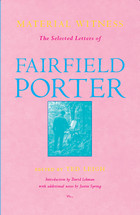 Material Witness: The Selected Letters of Fairfield Porter
Ted Leigh, Editor
University of Michigan Press, 2005 "The publication of Porter's letters marks an occasion for a renewed celebration of his painting and an appreciation of his quirky, indeed ornery, personality. Porter was a feisty correspondent, who fearlessly entered the intellectual discourse of his time."
---From the introduction by David Lehman
"In this lifetime of letters, Fairfield Porter reveals the complexity and passion of a protagonist in a novel by Dostoevsky or Henry James."
---Jane Freilicher
Fairfield Porter (1907-75) has been called by poet John Ashbery "perhaps the major American artist of the century." He was also known as a gifted art critic.
Beyond shedding light on his personal views, this collection of Fairfield Porter's letters demonstrates his profound contribution to American art and literature and displays his acumen as a political critic. The letters tell the story of a reserved artist and intellectual, torn between the tensions and pressures he felt among politics, family life, and painting-a man who forged a painting style outside the politically correct artistic perceptions of both left and right.
The collection includes letters from Porter's early travels to the Soviet Union, including a description of an interview with Trotsky, as well as some of his later letters to close friends, including Frank O'Hara, Kenneth Koch, Rod Padgett, Larry Rivers, and James Schuyler, among others. While the letters reveal many sides of the brilliant and independent-minded Porter, they also provide a cultural context for the time period and the circle of artists and poets with whom Porter associated. The letters not only tell a story of the artist himself but are also valuable documents of the political and artistic upheavals of the 1930s, 40s, and 50s.
This rich collection is introduced by poet and critic David Lehman and includes notes by Justin Spring, author of Porter's biography.
 Materialien zur Prasun-Sprache des Afghanischen Hindukusch
Georg Buddruss
Harvard University Press Prasun (Wasi, Paruni) has long had a reputation for being the most aberrant of the Nuristani group of Indo-European languages. Only after the publication of a considerable number of Prasun texts in 2016 as volume 80 in this series has it been possible to analyze the language based on the solid foundation of a large text corpus. Georg Buddruss collected the source texts in the Prasun Valley in 1956 and 1970. That edition comprises texts in several dialectal varieties of Prasun.
The present volume is the outcome of extensive work on this text corpus. It is the first comprehensive grammar of Prasun as well as the most detailed description of any Nuristani language yet published. Among the topics addressed in this volume are: morphology, verbal categories, subordination, relative clauses, mirativity, verbal particles, and the complicated system of directional morphemes. This grammatical analysis is amply supported by quotations from the text volume. This book is a major contribution to studies of Nuristani and other languages of the Hindukush-Karakoram region.
 Materialien zur Prasun-Sprache des Afghanischen Hindukusch
Georg Buddruss
Harvard University Press Prasun (Wasi) is the most aberrant of the Nuristani languages, part of the Indo-Iranian branch of Indo-European languages. It is spoken in the Prasun Valley of the Pech River in northeast Afghanistan. Prasun is a non-literary, unwritten language, and it varies from village to village. Materialien zur Prasun-Sprache des Afghanischen Hindukusch is the fruit of many years of work by Georg Buddruss, assisted in the last few years by Almuth Degener. The texts, in prose and a few songs, were collected by Buddruss in 1956 and 1970. Included are all the texts collected, along with a German translation, a glossary, lists of numbers, place and personal names, and the Prasun calendar system. The volume also includes a brief Introduction in English. A second volume to come will contain an extensive grammar.
Apart from its linguistic value, the present book is also very important as it includes many “Kafiri” myths, still known in 1956, from the time before the forced Islamization in 1895. The ancient pagan religion has survived only in the texts and in some customs described in this book.
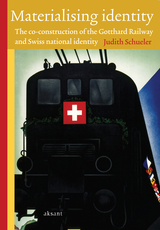 Materialising identity: The co-construction of the Gotthard Railway and Swiss national identity
Judith Schueler
Amsterdam University Press, 2009 Since its opening in 1882, the Gotthard Railway with its 15-kilometer long tunnel under the Gotthard Mountains, provides a crucial international link through the Swiss Alps, between North-Western Europe and Italy. In contrast to many other railway lines, its symbolic meaning has never sunk into oblivion. In Swiss society today, references to the Gotthard myth are multifaceted and omnipresent. Not only do they evoke images of a technological railway project, they also allude to Swiss history, alpine nature and national identity. Reading this book assists in understanding the old and contemporary discussions about the future of the Gotthard Railway, the regions in which it lies and the Swiss national identity.
Curiosity-driven, this research combines viewpoints from the history of technology, cultural studies and cultural geography to grasp the intensity of the Gotthard as a national Swiss image. Whereas the relationship between the Gotthard Mountains and the Swiss national identity has received ample scholarly attention, the role of the Gotthard Railway remains largely unexplored.
To illustrate to what extent historical actors co-constructed the railway and Swiss identity, the empirical chapters start with an analysis of an engineering discussion about tunneling methods. Hereafter, the book examines the reactions in Switzerland to the inauguration of the railway line. Subsequently, it describes the appreciation of the railway line portrayed in travel guides of the belle époque. The last chapter captures the glory days of the Gotthard myth, before and during the Second World War, with a focus on the novels and plays, in which the Gotthard Tunnel construction occurs. This historical overview offers insight into the multiple roles that technology plays in the construction of a sense of national identity as well as illustrating how identity has an effect on the appropriation of a technological railway project.
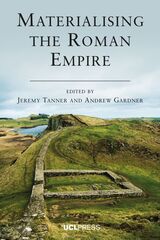 Materialising the Roman Empire
Edited by Jeremy Tanner and Andrew Gardner
University College London, 2024 A fresh approach to Roman archaeology that elucidates the impact of material culture in shaping imperial life, from technological innovations to social structures.
Materialising the Roman Empire defines an innovative research agenda for Roman archaeology, highlighting the diverse ways in which the Empire was made materially tangible in the lives of its inhabitants. The volume explores how material culture was integral to the process of imperialism, both as the Empire grew, and as it fragmented, and in doing so it provides up-to-date overviews of major topics in Roman archaeology.
Each chapter offers a thorough overview of a major field within the archaeology of the Roman Empire. The book’s authors explore the distinctive contribution that archaeology and the study of material culture can make to our understanding of the key institutions and fields of activity in the Roman Empire. The opening chapters address major technologies that, at first glance, appear to be mechanisms of integration across the Roman Empire: roads, writing, and coinage. The focus then shifts to the analysis of key social structures oriented around material forms and activities found all over the Roman world, such as trade, urbanism, slavery, craft production, and frontiers. Finally, the book extends to more abstract dimensions of the Roman world: art, empire, religion, and ideology, in which the significant themes remain the dynamics of power and influence. The whole builds towards a broad exploration of the nature of imperial power and the interconnections that stimulated new community identities and created new social divisions.
 Materialities of Disease Across the Medieval World: Images, Objects, and Remains
Lori Jones
Arc Humanities Press, 2025 This interdisciplinary volume offers new ways to think about how disease and death, and healing and health, were considered, experienced, displayed, and portrayed across the global medieval world. Reaching across conventional disciplinary, historiographical, and geographical boundaries, Materialities of Disease investigates a broad selection of visual and material artefacts emerging from across the globe—from Western Europe, Western Africa, and Anatolia, to Japan, India, China, and New Spain. This volume focuses on non-textual narratives about disease that can be read in historical images, objects, human remains, archaeological remains, architectural spaces, materia medica, and other surviving artefacts. Taken together, these contributions, which are diverse and interdisciplinary, highlight and nuance some of the recent critical advances in scholarship being made in and for medical history across many fields
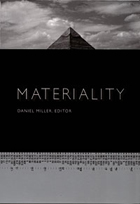 Materiality
Daniel Miller, ed.
Duke University Press, 2005 Throughout history and across social and cultural contexts, most systems of belief—whether religious or secular—have ascribed wisdom to those who see reality as that which transcends the merely material. Yet, as the studies collected here show, the immaterial is not easily separated from the material. Humans are defined, to an extraordinary degree, by their expressions of immaterial ideals through material forms. The essays in Materiality explore varied manifestations of materiality from ancient times to the present. In assessing the fundamental role of materiality in shaping humanity, they signal the need to decenter the social within social anthropology in order to make room for the material. Considering topics as diverse as theology, technology, finance, and art, the contributors—most of whom are anthropologists—examine the many different ways in which materiality has been understood and the consequences of these differences. Their case studies show that the latest forms of financial trading instruments can be compared with the oldest ideals of ancient Egypt, that the promise of software can be compared with an age-old desire for an unmediated relationship to divinity. Whether focusing on the theology of Islamic banking, Australian Aboriginal art, derivatives trading in Japan, or textiles that respond directly to their environment, each essay adds depth and nuance to the project that Materiality advances: a profound acknowledgment and rethinking of one of the basic properties of being human. Contributors. Matthew Engelke, Webb Keane, Susanne Küchler, Bill Maurer, Lynn Meskell, Daniel Miller, Hirokazu Miyazaki, Fred Myers, Christopher Pinney, Michael Rowlands, Nigel Thrift
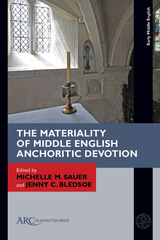 The Materiality of Middle English Anchoritic Devotion
Michelle M. Sauer
Arc Humanities Press, 2021 Anchorites and their texts, such as Ancrene Wisse, have recently undergone a reevaluation based on material circumstances, not just theological import. The articles here address a variety of anchoritic or anchoritic-adjacent texts, encompassing guidance literature, hagiographies, miracle narratives, medical discourse, and mystic prose, and spanning in date from the eighth through the fourteenth centuries. Exploring reclusion and materiality, the collection addresses a series of overlapping themes, including the importance of touch, the limits of religious authority, and the role of the senses. Objects, metaphorical and real, embodied and spiritual, populate the pages. These categories are permeable, with flexible and porous boundaries, demonstrating the conflation of ideas, concepts, and manifestations in medieval materiality. In fact, the permeability of these categories demonstrates how materiality can reshape our approach to medieval texts. It leaves room for directions for future study, including the application of material analysis to previously unstudied objects, spaces, and literary artifacts.
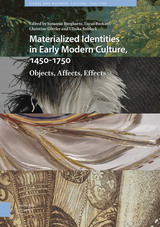 Materialized Identities in Early Modern Culture, 1450-1750: Objects, Affects, Effects
Susanna Burghartz
Amsterdam University Press, 2021 This collection embraces the increasing interest in the material world of the Renaissance and the early modern period, which has both fascinated contemporaries and initiated in recent years a distinguished historiography. The scholarship within is distinctive for engaging with the agentive qualities of matter, showing how affective dimensions in history connect with material history, and exploring the religious and cultural identity dimensions of the use of materials and artefacts. It thus aims to refocus our understanding of the meaning of the material world in this period by centring on the vibrancy of matter itself.
To achieve this goal, the authors approach "the material" through four themes – glass, feathers, gold paints, and veils – in relation to specific individuals, material milieus, and interpretative communities. In examining these four types of materialities and object groups, which were attached to different sensory regimes and valorizations, this book charts how each underwent significant changes during this period.
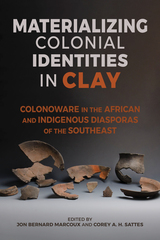 Materializing Colonial Identities in Clay: Colonoware in the African and Indigenous Diasporas of the Southeast
Edited by Jon Bernard Marcoux and Corey A. H. Sattes
University of Alabama Press, 2024 In Materializing Colonial Identities in Clay, Jon Bernard Marcoux, Corey A. H. Sattes, and contributors examine colonoware to explore the active roles that African Americans and Indigenous people played in constructing southern colonial culture and part of their shared history with Europeans.
Colonoware was most likely produced by African and Indigenous potters and used by all colonial groups for cooking, serving, and storing food. It formed the foundation of colonial foodways in many settlements across the southeastern United States. Even so, compared with other ceramics from this period, less has been understood about its production and use because of the lack of documentation. This collection of essays fills this gap with valuable, recent archaeological data from which much may be surmised about the interaction among Europeans, Indigenous, and Africans, especially within the contexts of the African and Indigenous slave trade and plantation systems.
The chapters represent the full range of colonoware research: from the beginning to the end of its production, from urban to rural contexts, and from its intraregional variation in the Lowcountry to the broad patterns of colonialism across the early American Southeast. The book summarizes current approaches in colonoware research and how these may bridge the gaps between broader colonial American studies, Indigenous studies, and African Diaspora studies.
A concluding discussion contextualizes the chapters through the perspectives of intersectionality and Black feminist theory, drawing attention to the gendered and racialized meanings embodied in colonoware, and considering how colonialism and slavery have shaped these cultural dimensions and archaeologists’ study of them.
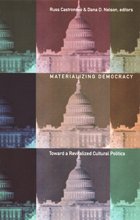 Materializing Democracy: Toward a Revitalized Cultural Politics
Russ Castronovo and Dana D. Nelson, eds.
Duke University Press, 2002 For the most part, democracy is simply presumed to exist in the United States. It is viewed as a completed project rather than as a goal to be achieved. Fifteen leading scholars challenge that stasis in Materializing Democracy. They aim to reinvigorate the idea of democracy by placing it in the midst of a contentious political and cultural fray, which, the volume’s editors argue, is exactly where it belongs. Drawing on literary criticism, cultural studies, history, legal studies, and political theory, the essays collected here highlight competing definitions and practices of democracy—in politics, society, and, indeed, academia. Covering topics ranging from rights discourse to Native American performance, from identity politics to gay marriage, and from rituals of public mourning to the Clinton-Lewinsky affair, the contributors seek to understand the practices, ideas, and material conditions that enable or foreclose democracy’s possibilities. Through readings of subjects as diverse as Will Rogers, Alexis de Tocqueville, slave narratives, interactions along the Texas-Mexico border, and liberal arts education, the contributors also explore ways of making democracy available for analysis. Materializing Democracy suggests that attention to disparate narratives is integral to the development of more complex, vibrant versions of democracy. Contributors. Lauren Berlant, Wendy Brown, Chris Castiglia, Russ Castronovo, Joan Dayan, Wai Chee Dimock, Lisa Duggan, Richard R. Flores, Kevin Gaines, Jeffrey C. Goldfarb, Michael Moon, Dana D. Nelson, Christopher Newfield, Donald E. Pease
Materializing Identities in Socialist and Post-Socialist Cities
Edited by Jaroslav Ira and Jirí Janác
Karolinum Press, 2017 Following the so-called “Material Turn” of historiography, this book explores the materialization of identity in urban space—specifically in Eastern Europe and Central Asia. Urban spaces played an important role in the formation of national identities in post-socialist successor states across the region, while at the same time the articulation of national identities markedly affected the appearance of these post-socialist cities. Beginning with an overview of socialist and post-socialist cities in recent urban history, contributors trace the post-socialist intertwining of space and identities in case studies that include Astana and Almaty in Kazakhstan, Chișinău and Tiraspol in Moldova, and Skopje in Macedonia, while also linking this phenomenon to socialist urbanism, as in postwar Minsk, Belarus.
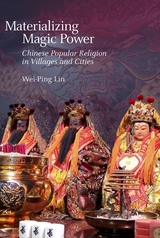 Materializing Magic Power: Chinese Popular Religion in Villages and Cities
Wei-Ping Lin
Harvard University Press, 2015 Materializing Magic Power paints a broad picture of the dynamics of popular religion in Taiwan. The first book to explore contemporary Chinese popular religion from its cultural, social, and material perspectives, it analyzes these aspects of religious practice in a unified framework and traces their transformation as adherents move from villages to cities.
In this groundbreaking study, Wei-Ping Lin offers a fresh perspective on the divine power of Chinese deities as revealed in two important material forms—god statues and spirit mediums. By examining the significance of these religious manifestations, Lin identifies personification and localization as the crucial cultural mechanisms that bestow efficacy on deity statues and spirit mediums. She further traces the social consequences of materialization and demonstrates how the different natures of materials mediate distinct kinds of divine power.
The first part of the book provides a detailed account of popular religion in villages. This is followed by a discussion of how rural migrant workers cope with challenges in urban environments by inviting branch statues of village deities to the city, establishing an urban shrine, and selecting a new spirit medium. These practices show how traditional village religion is being reconfigured in cities today.
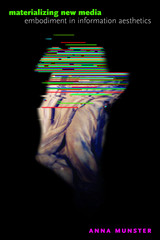 Materializing New Media: Embodiment in Information Aesthetics
Anna Munster
Dartmouth College Press, 2006 In Materializing New Media, Anna Munster offers an alternative aesthetic genealogy for digital culture. Eschewing the prevailing Cartesian aesthetic that aligns the digital with the disembodied, the formless, and the placeless, Munster seeks to “materialize” digital culture by demonstrating that its aesthetics have reconfigured bodily experience and reconceived materiality. Her topics range from artistic experiments in body-computer interfaces to the impact that corporeal interaction and geopolitical circumstances have on producing new media art and culture. She argues that new media, materiality, perception, and artistic practices now mutually constitute “information aesthetics.” Information aesthetics is concerned with new modes of sensory engagement in which distributed spaces and temporal variation play crucial roles. In analyzing the experiments that new media art performs with the materiality of space and time, Munster demonstrates how new media has likewise changed our bodies and those of others in global information culture. Materializing New Media calls for a re-examination of the roles of both body and affect in their relation to the virtual and to abstract codes of information. It offers a nonlinear approach to aesthetics and art history based on a concept of “folding” that can discern certain kinds of proximities and continuations across distances in time (in particular between the Baroque and the digital). Finally, it analyzes digital culture through a logic of the differential rather than of the binary. This allows the author to overcome a habit of futurism, which until now has plagued analyses of new media art and culture. Technology is now not seen as surpassing the human body but continually reconfiguring it and constitutive of it.
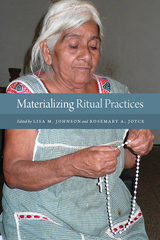 Materializing Ritual Practices
Lisa M. Johnson
University Press of Colorado, 2021 Materializing Ritual Practices explores the deep history of ritual practice in Mexico and Central America and the ways interdisciplinary research can be coordinated to illuminate how rituals create, destroy, and transform social relations.
Ritual action produces sequences of creation, destruction, and transformation, which involve a variety of materials that are active and agential. The materialities of ritual may persist at temporal scales long beyond the lives of humans or be as ephemeral as spoken words, music, and scents. In this book, archaeologists and ethnographers, including specialists in narrative, music, and ritual practice, explore the rhythms and materiality of rituals that accompany everyday actions, like the construction of houses, healing practices, and religious festivals, and that paced commemoration of rulers, ancestor veneration, and relations with spiritual beings in the past.
Connecting the kinds of observed material discursive practices that ethnographers witness to the sedimented practices from which archaeologists infer similar practices in the past, Materializing Ritual Practices addresses how specific materialities encourage repetition in ritual actions and, in other circumstances, resist changes to ritual sequences. The volume will be of interest to cultural anthropologists, archaeologists, and linguists with interests in Central America, ritual, materiality, and time.
Contributors: M. Charlotte Arnauld, Giovani Balam Caamal, Isaac Barrientos, Cedric Becquey, Johann Begel, Valeria Bellomia, Juan Carillo Gonzalez, Maire Chosson, Julien Hiquet, Katrina Kosyk, Olivier Le Guen, Maria Luisa Vasquez de Agredos Pascual, Alessandro Lupo, Philippe Nondedeo, Julie Patrois, Russel Sheptak, Valentina Vapnarsky, Francisca Zalaquett Rock
|
|



